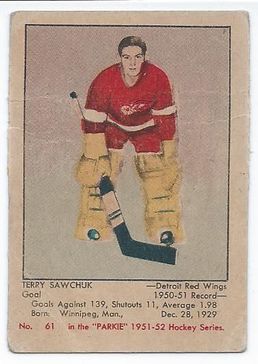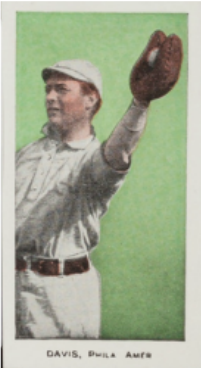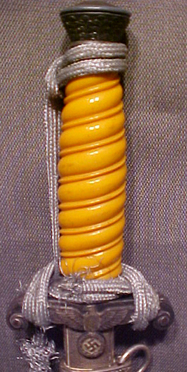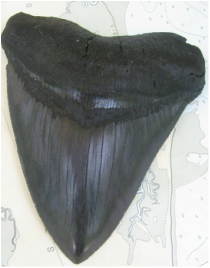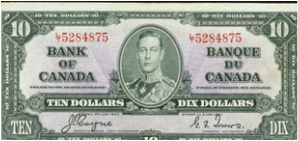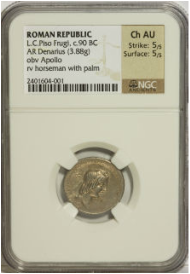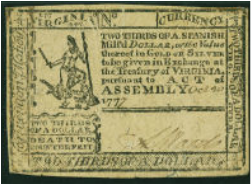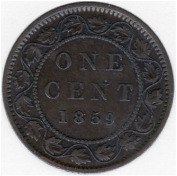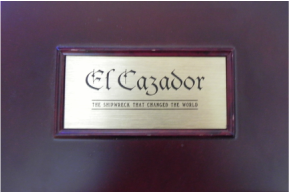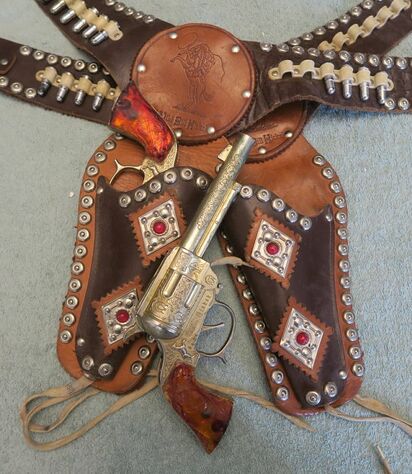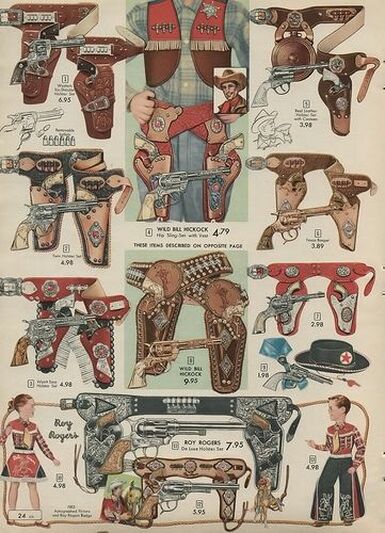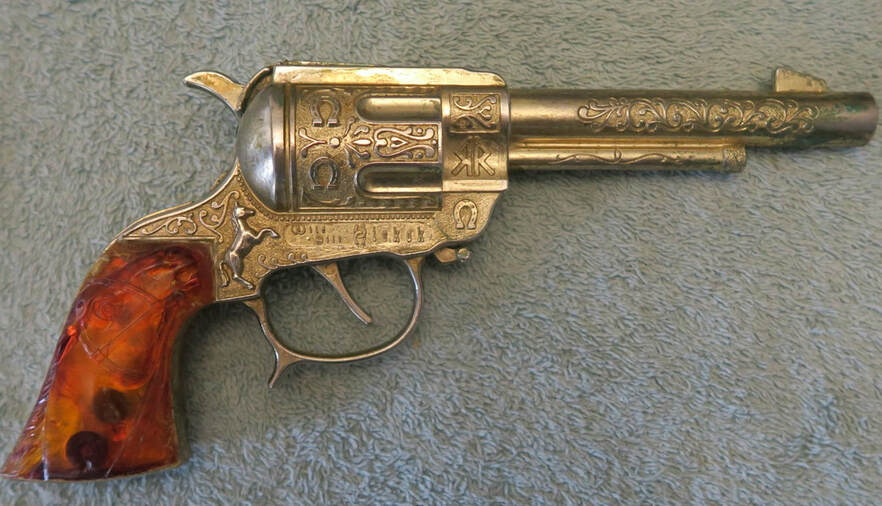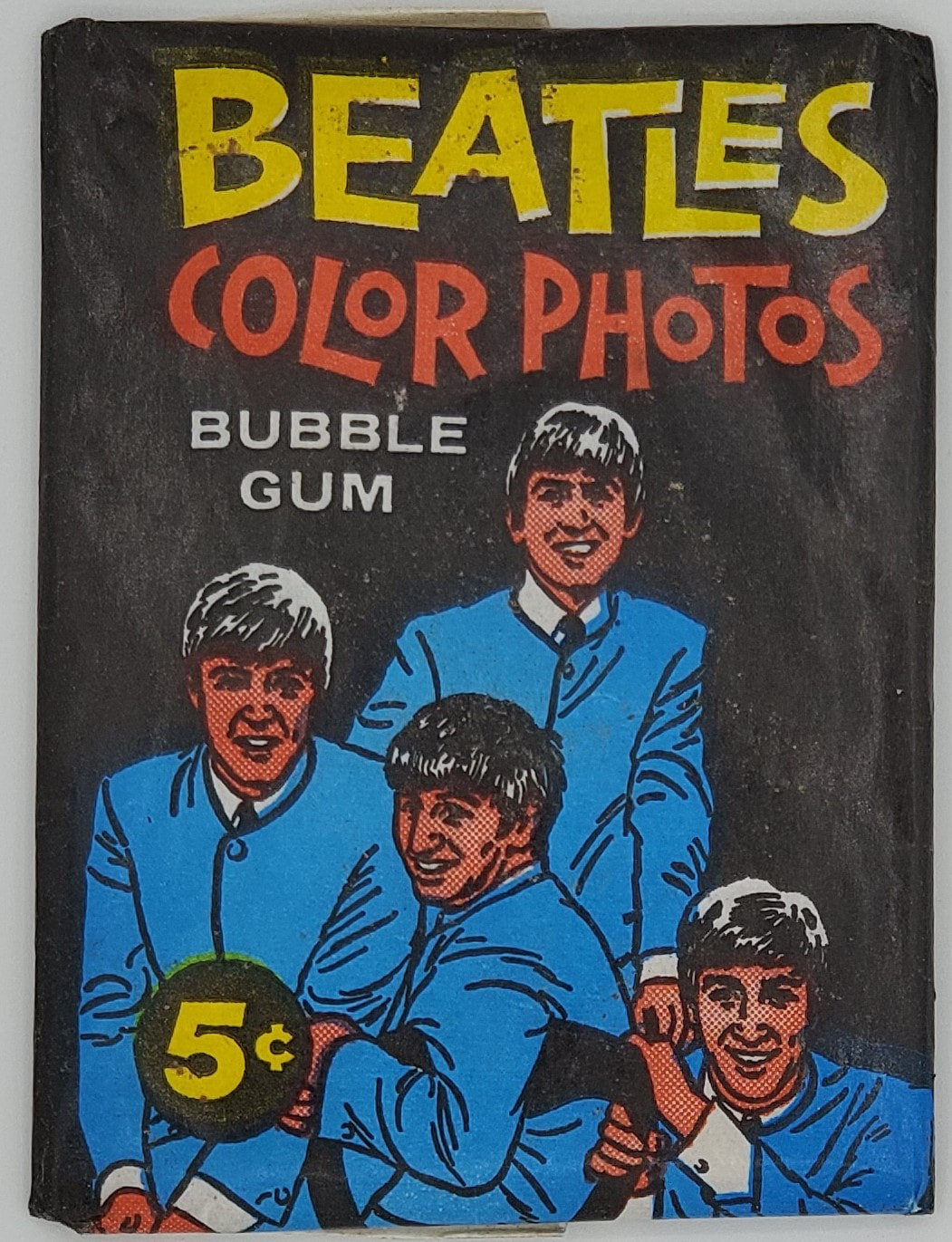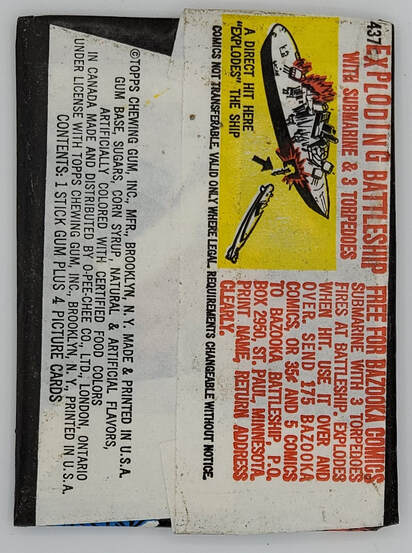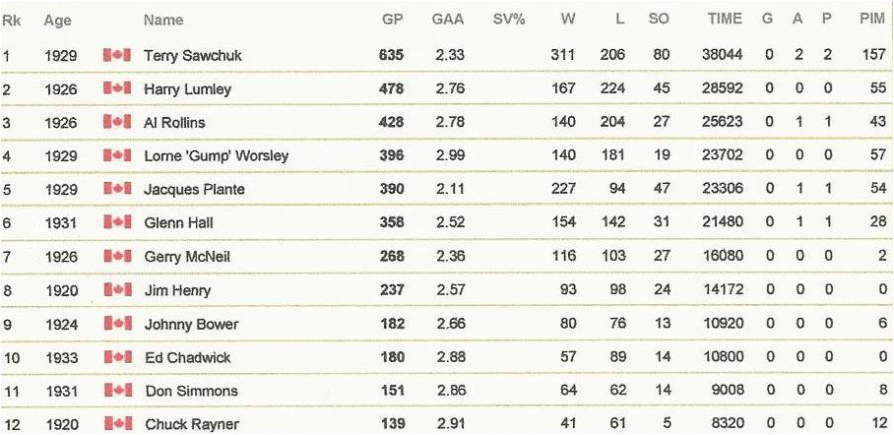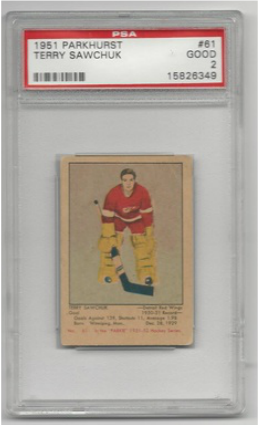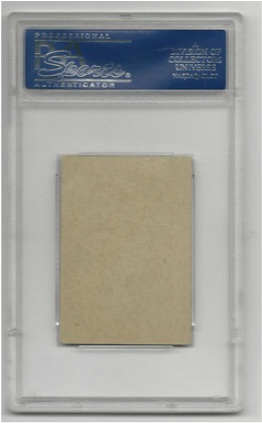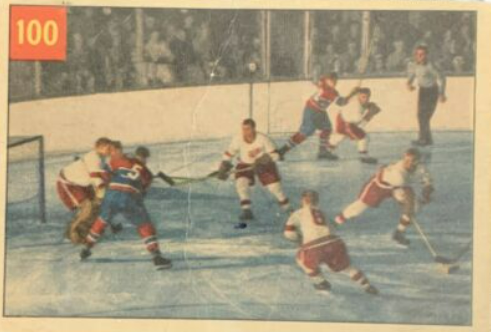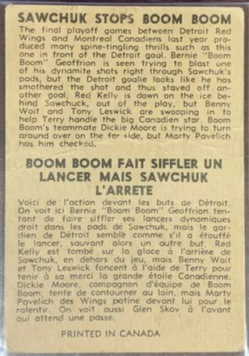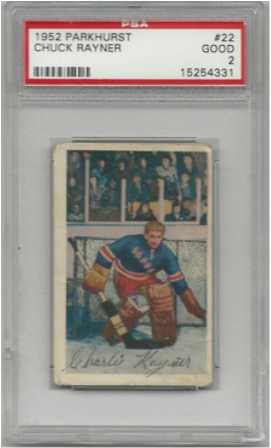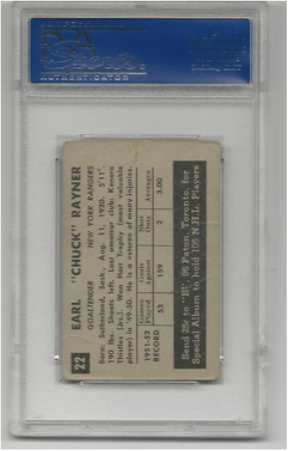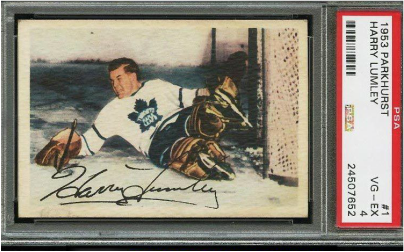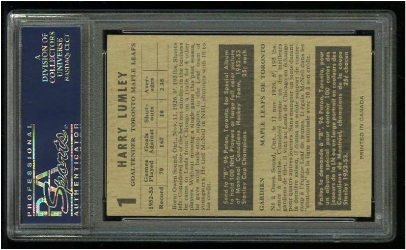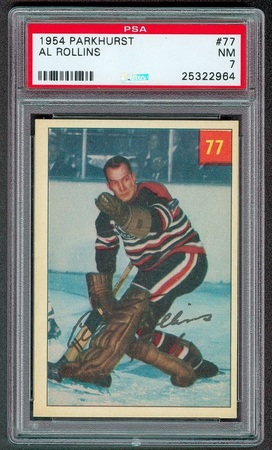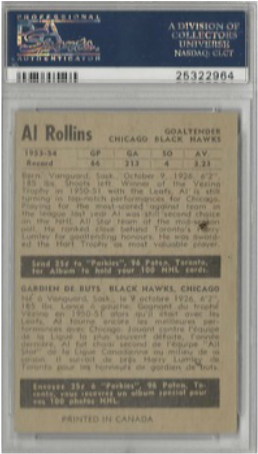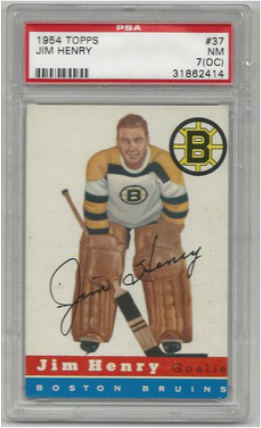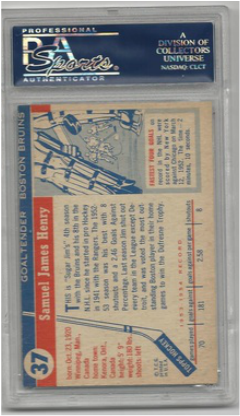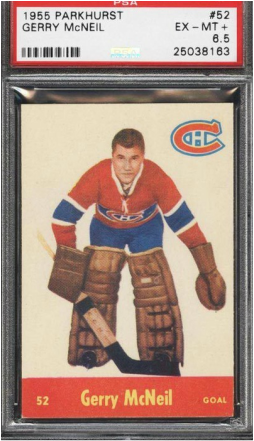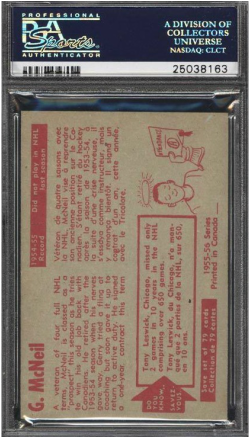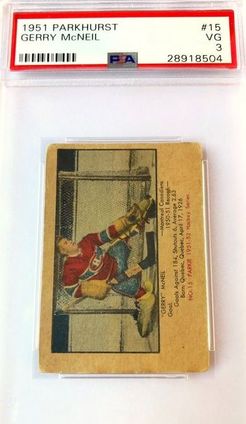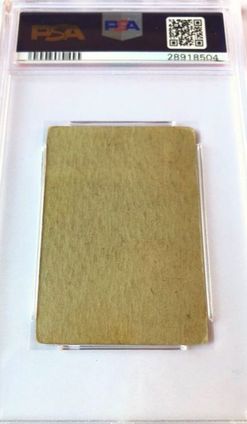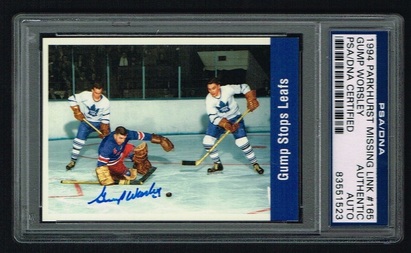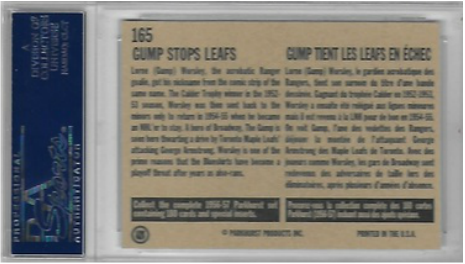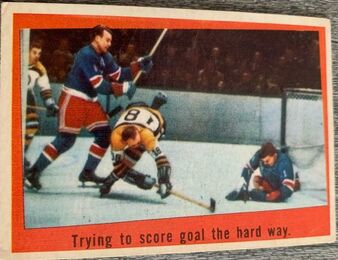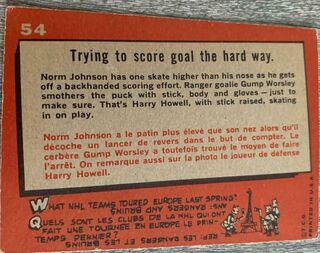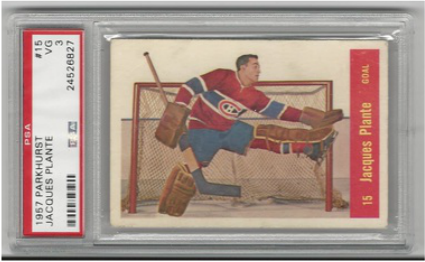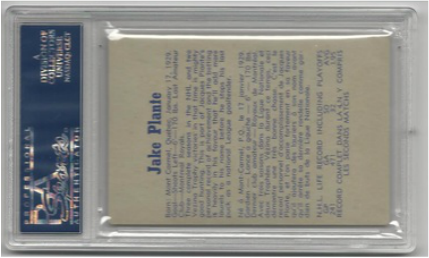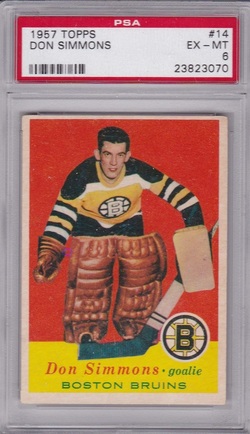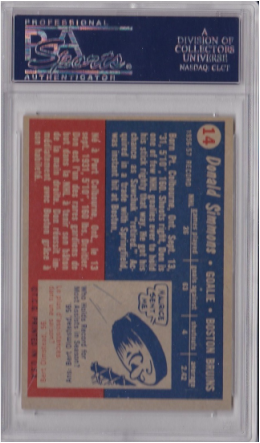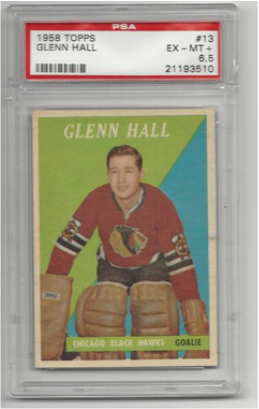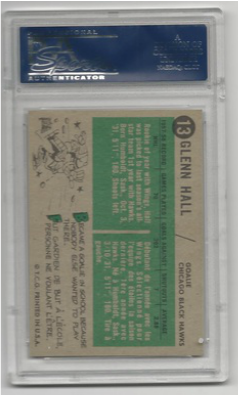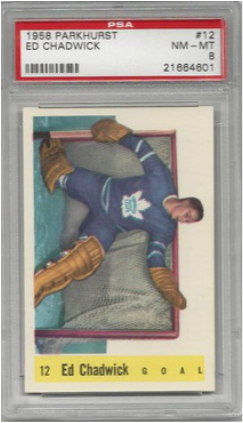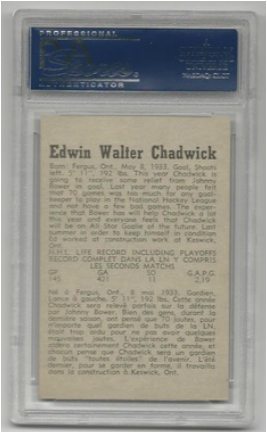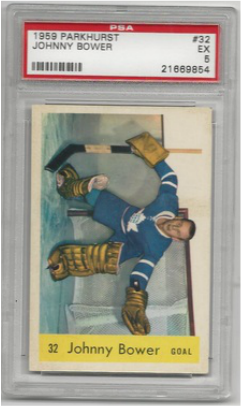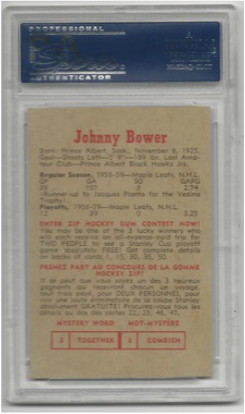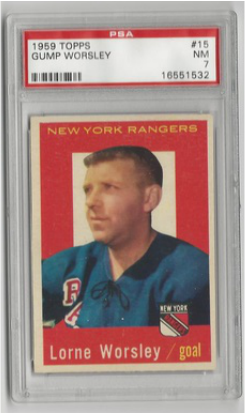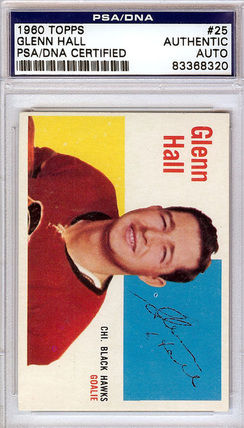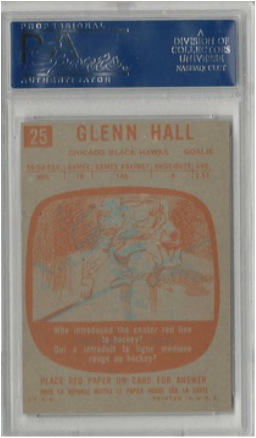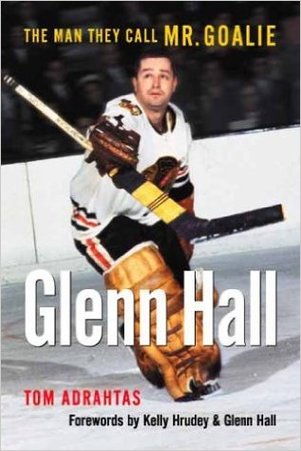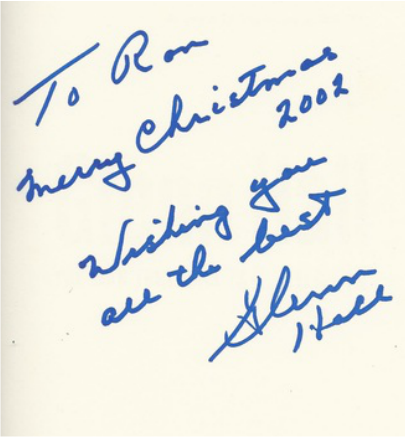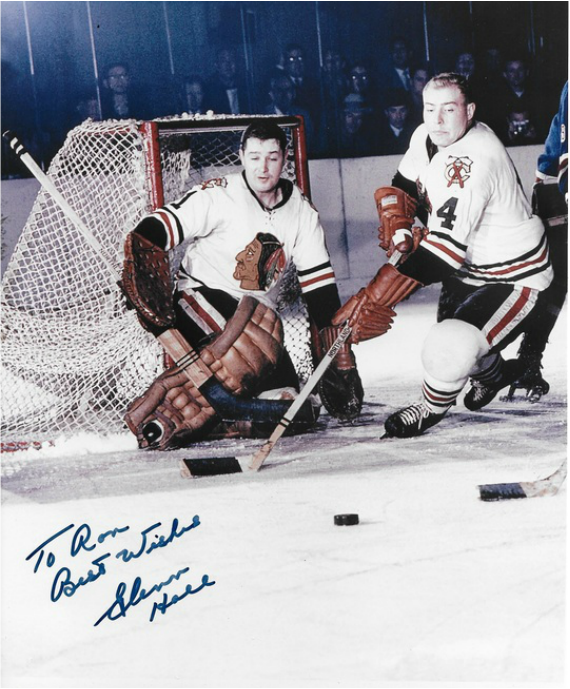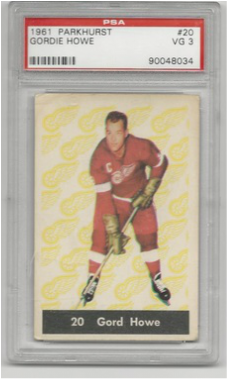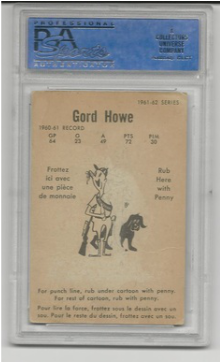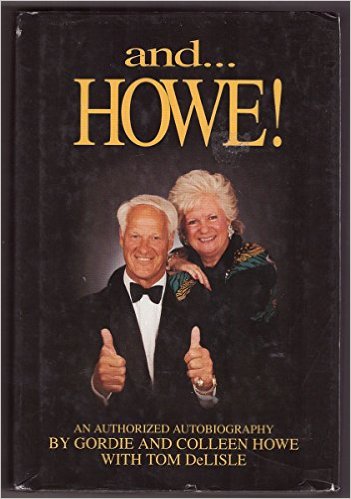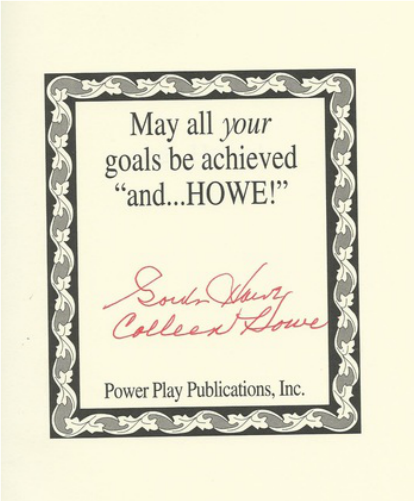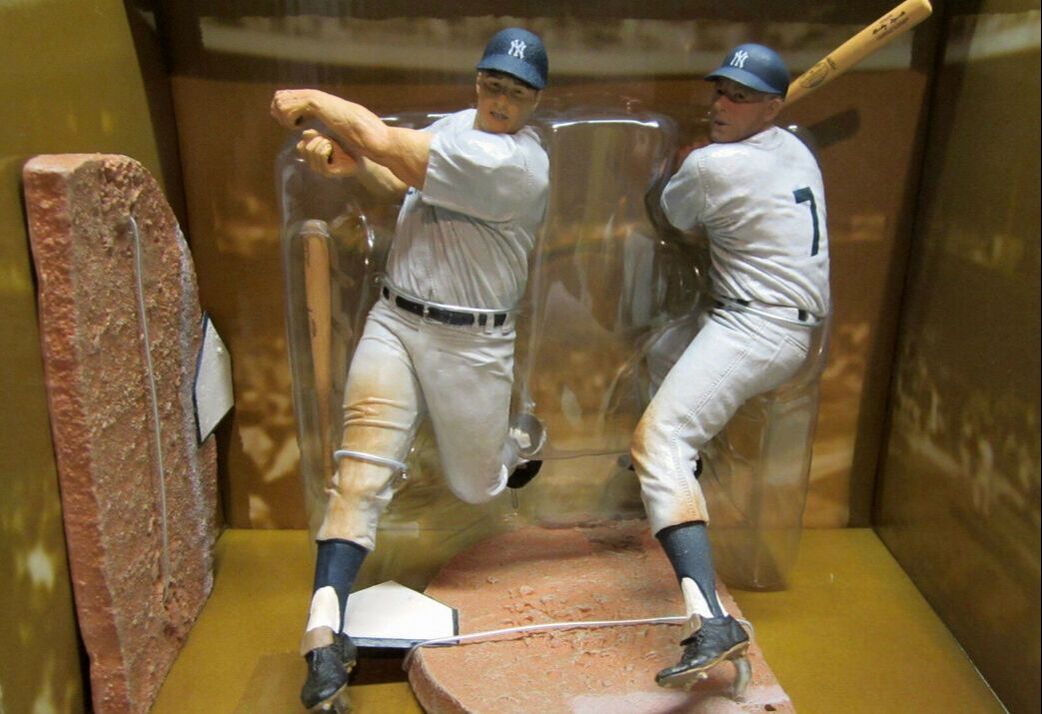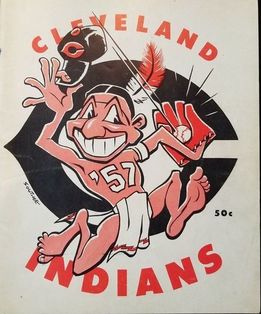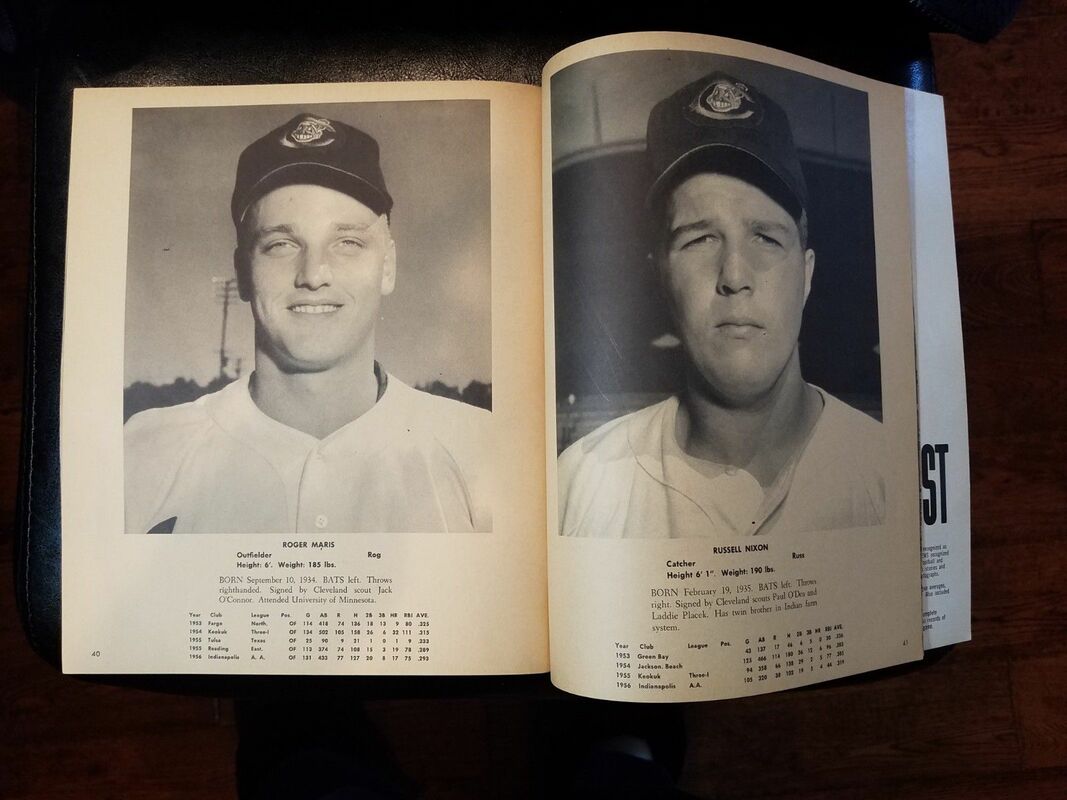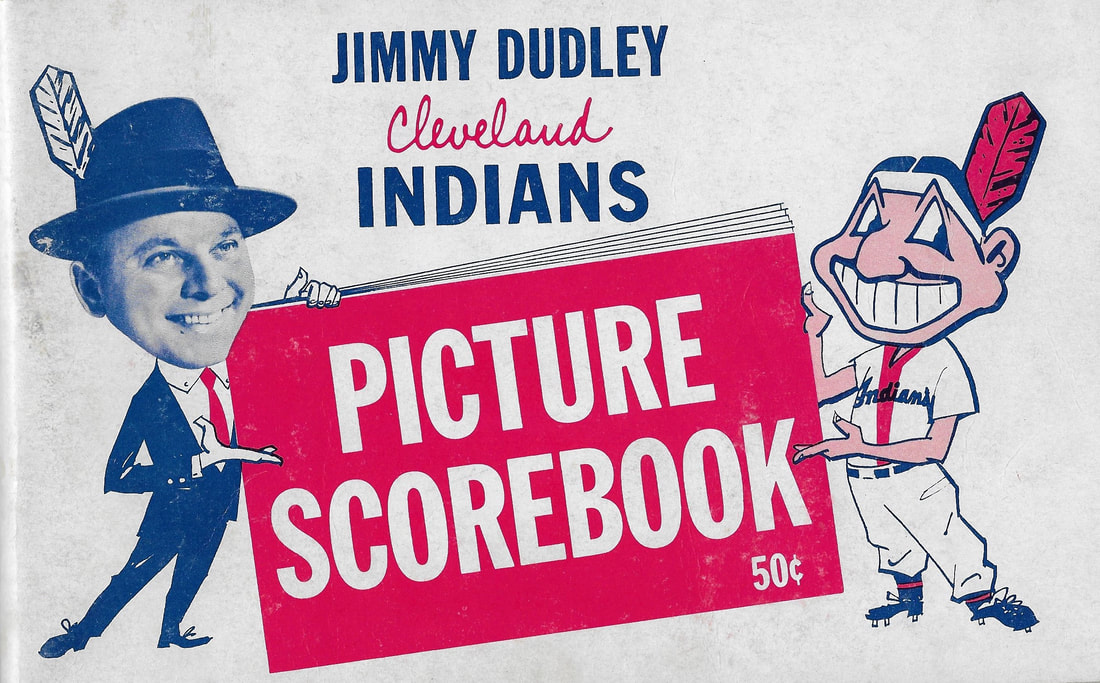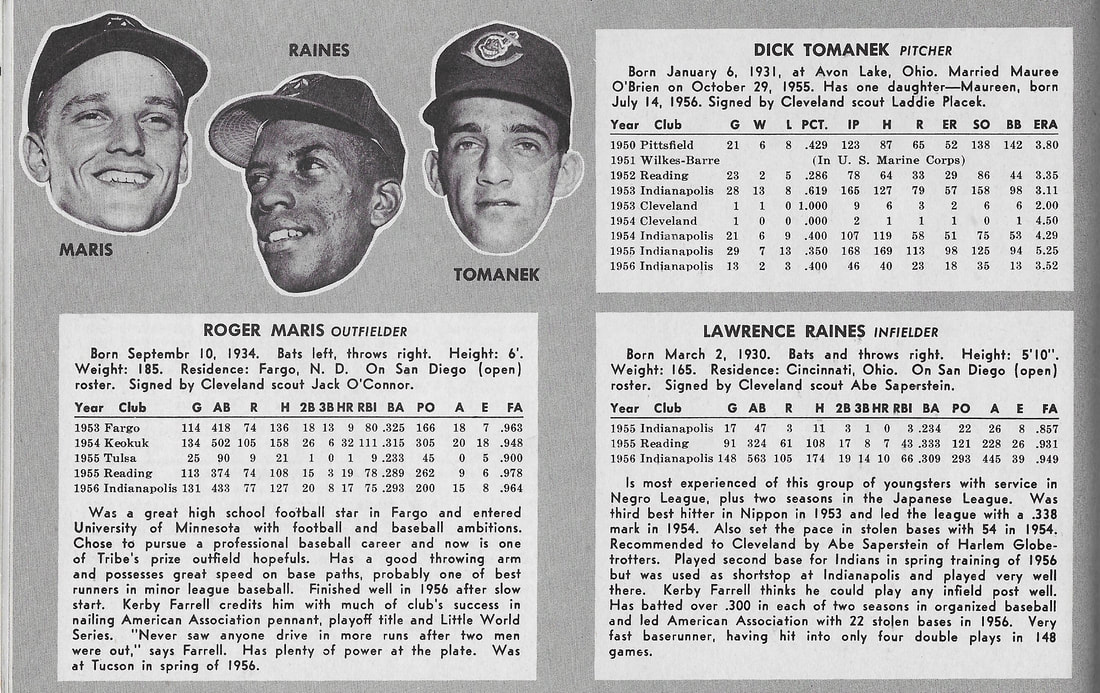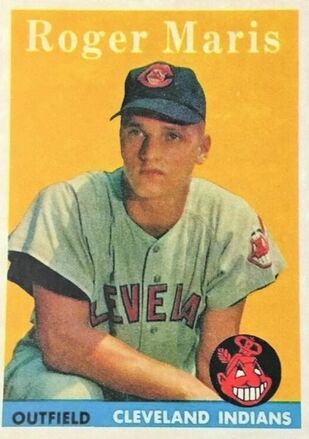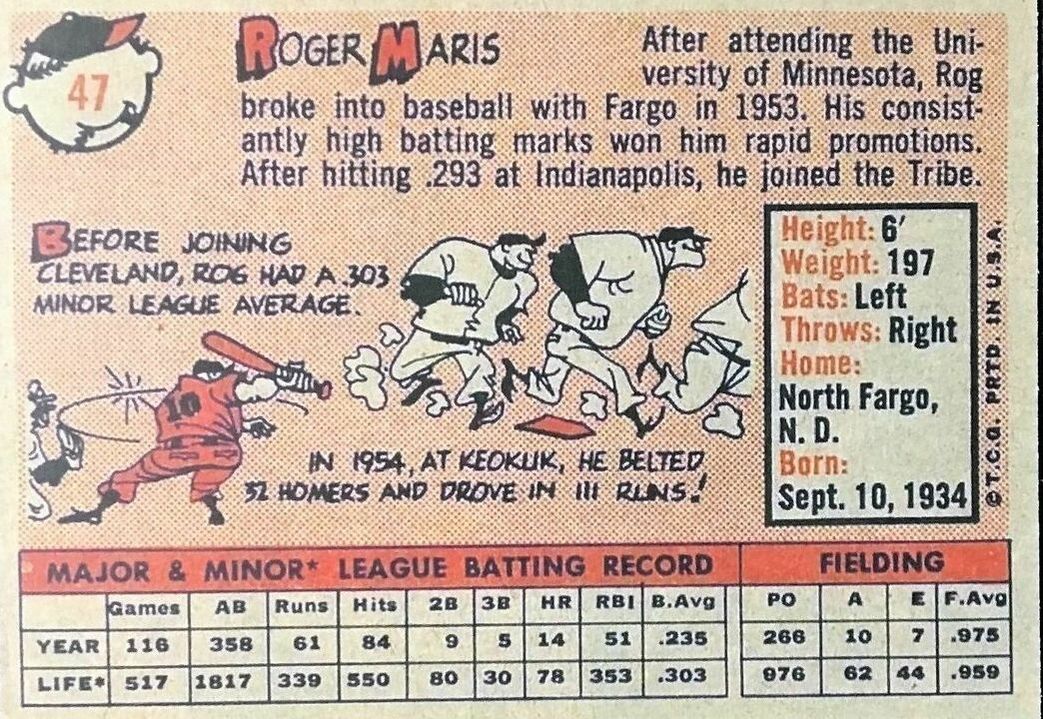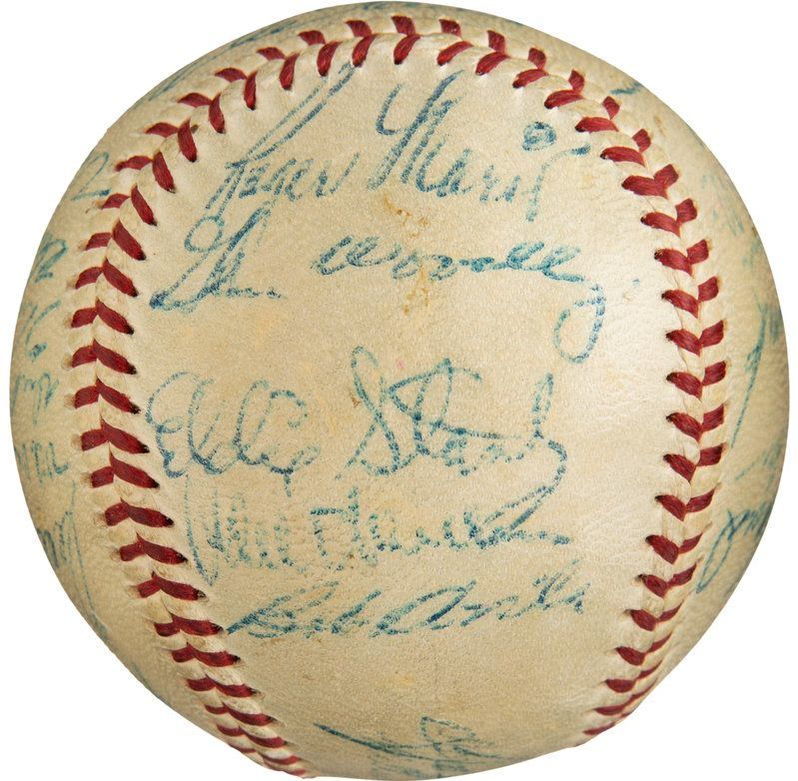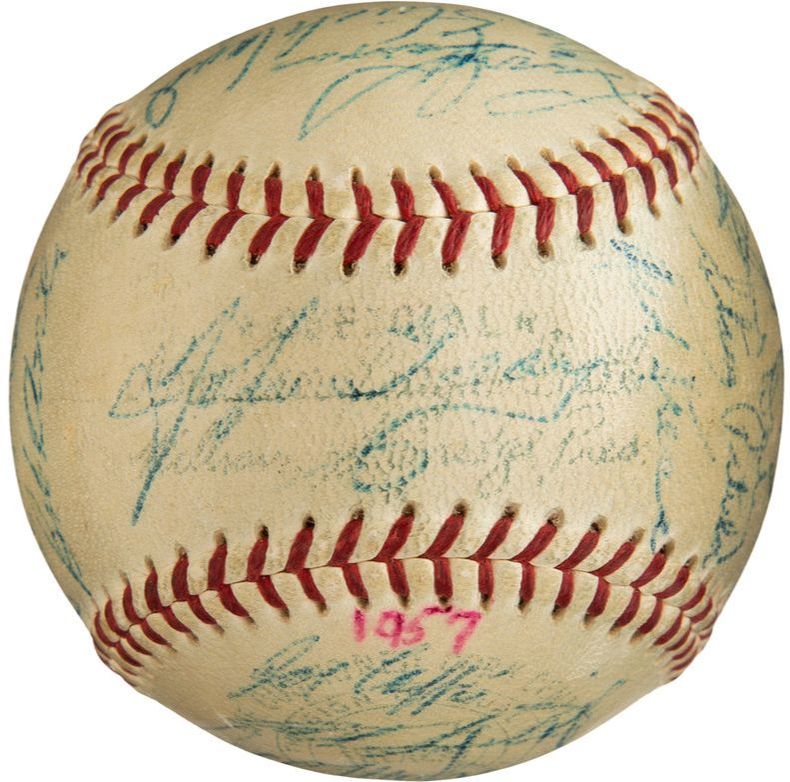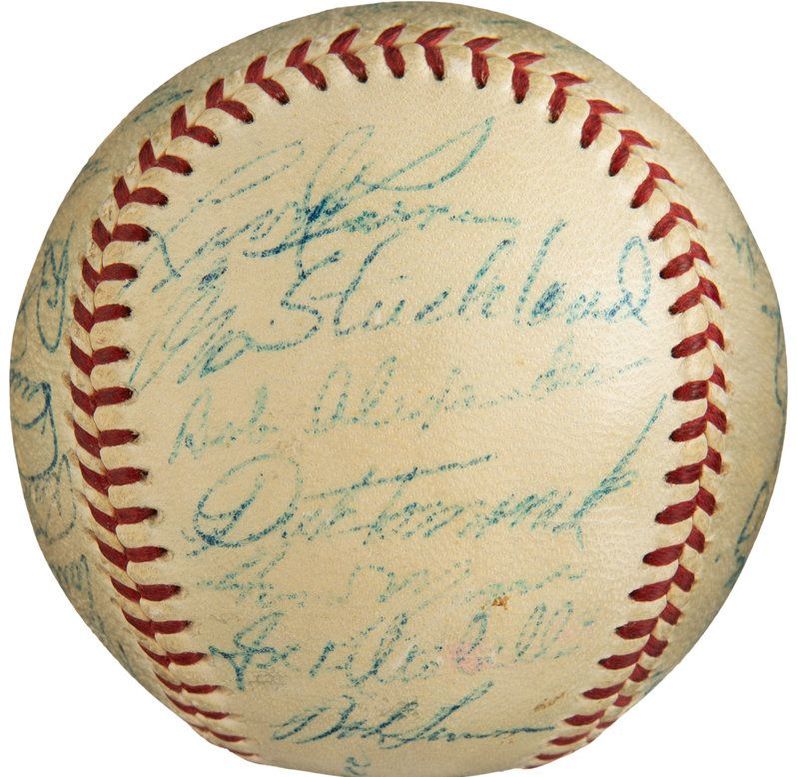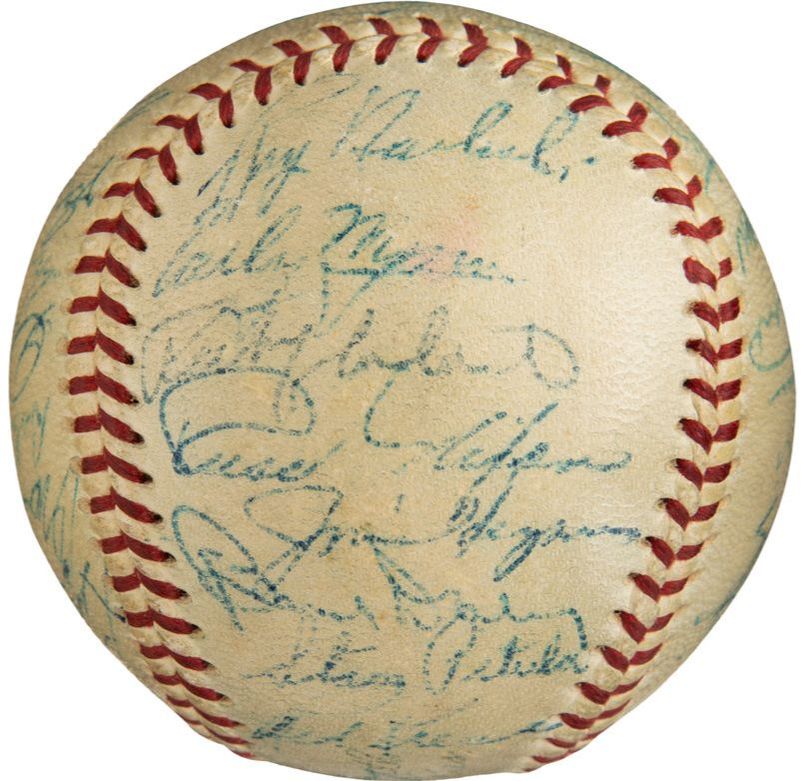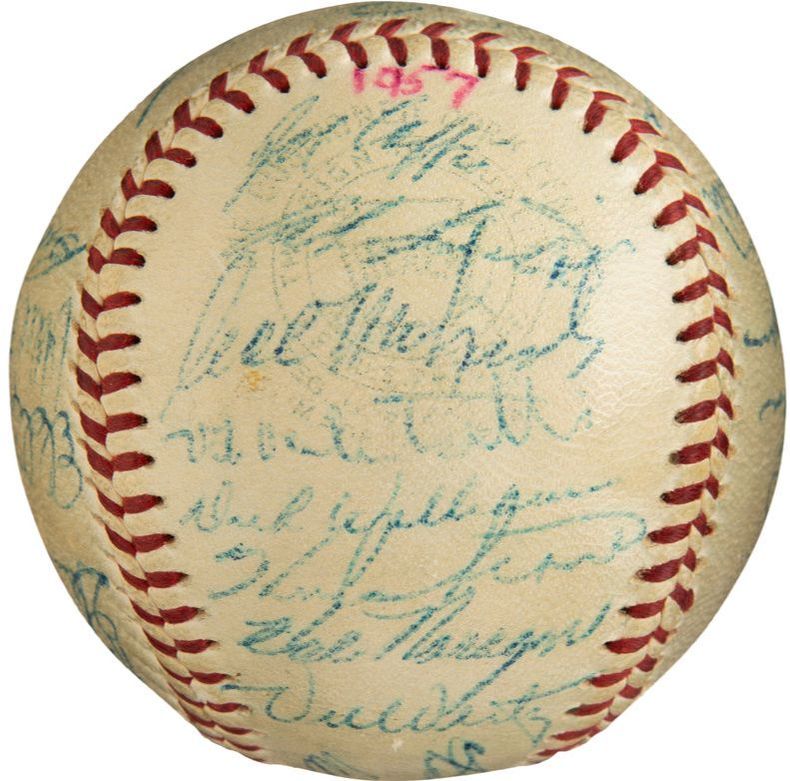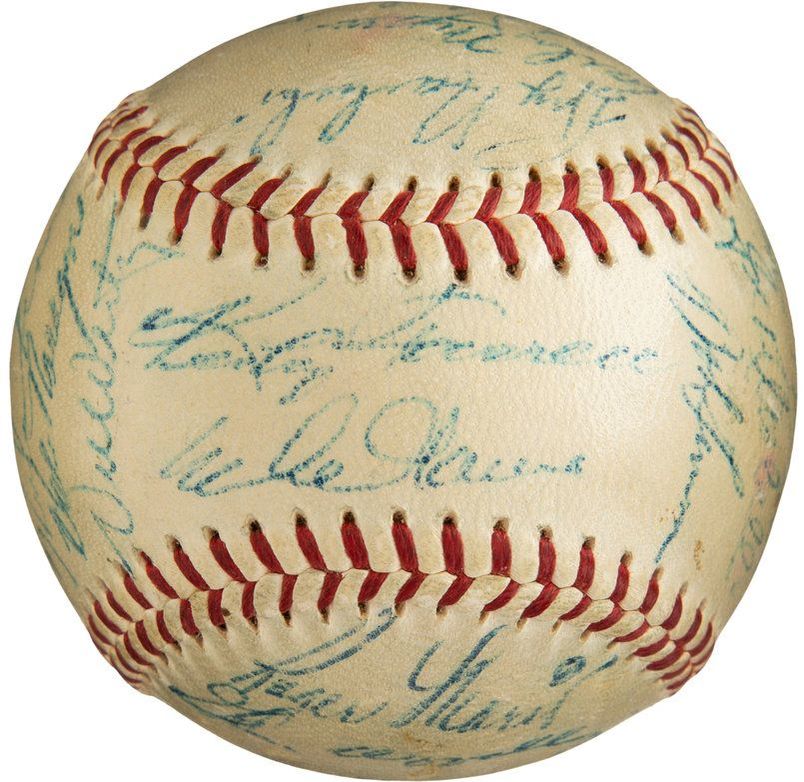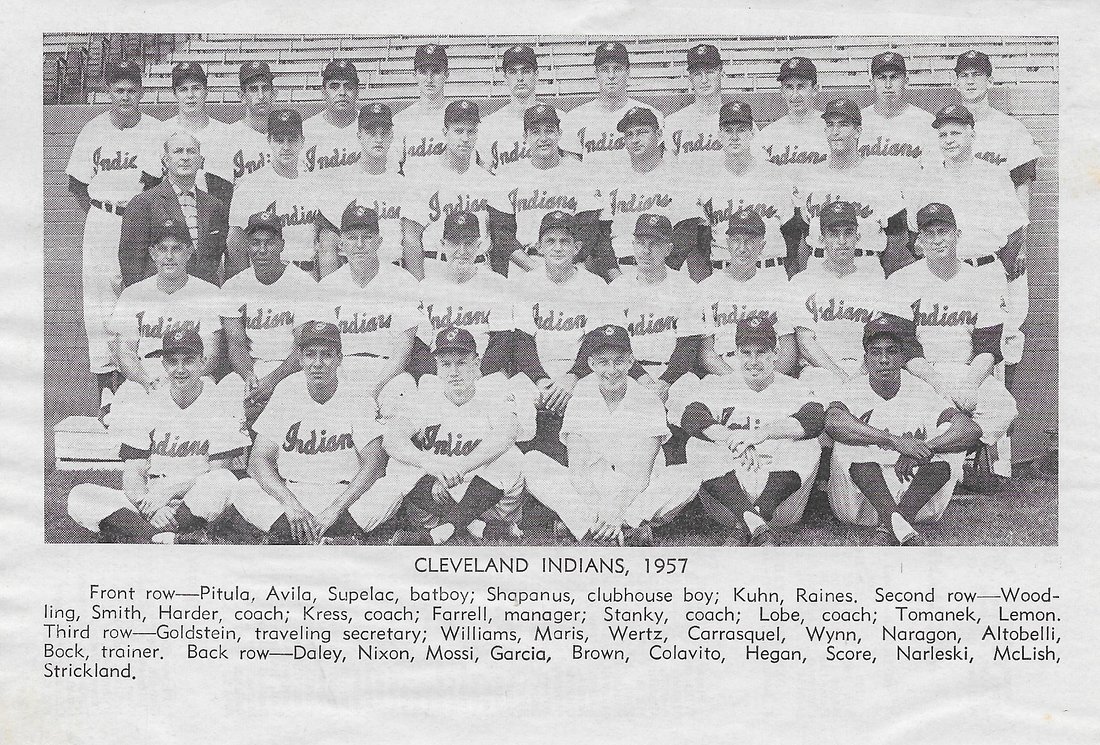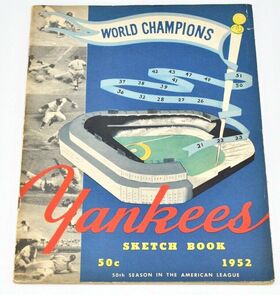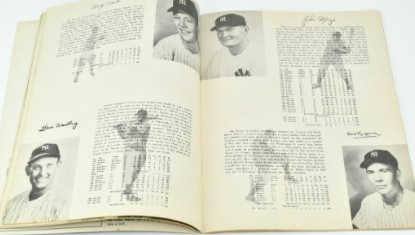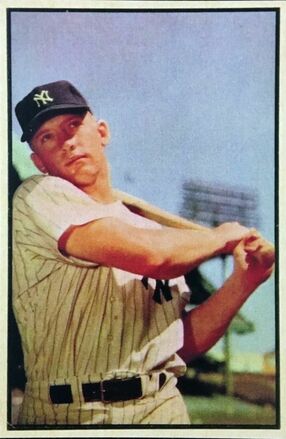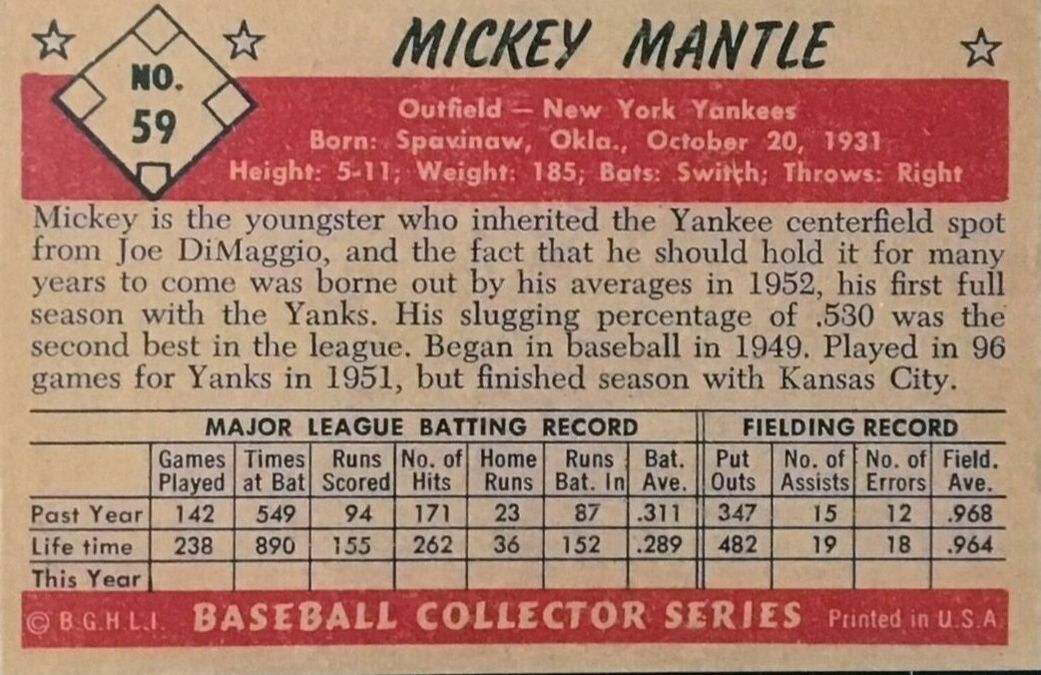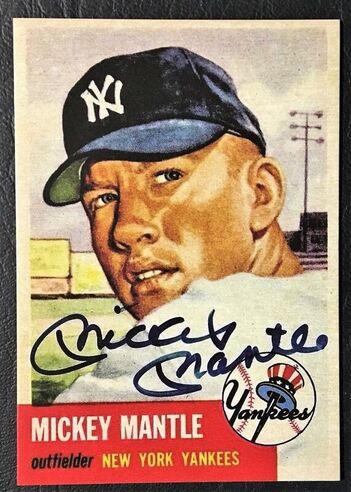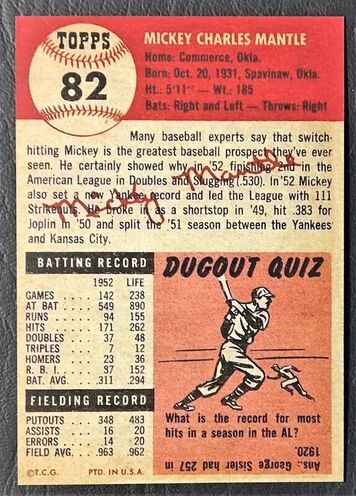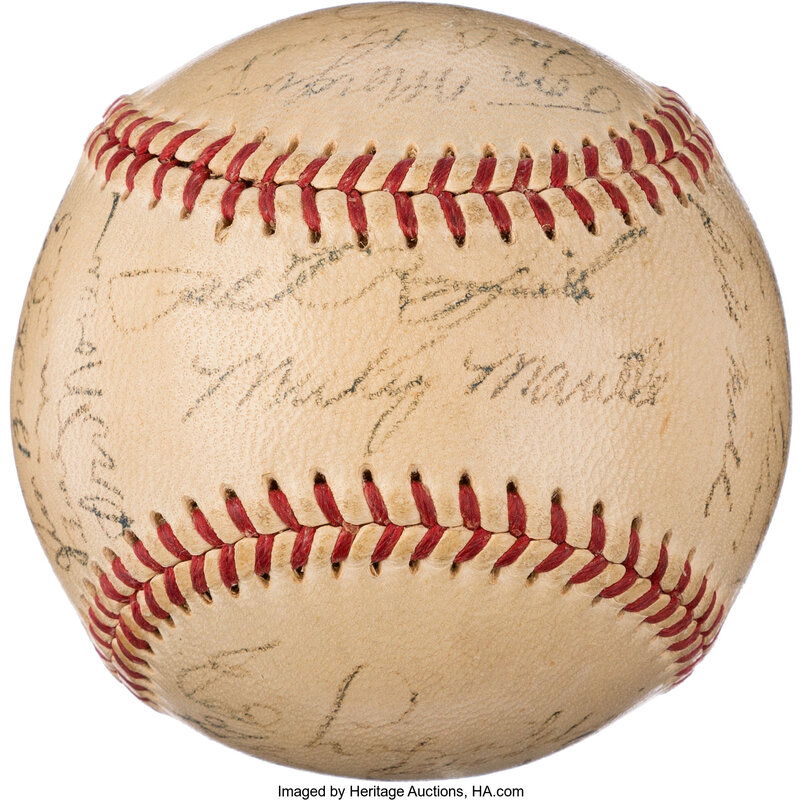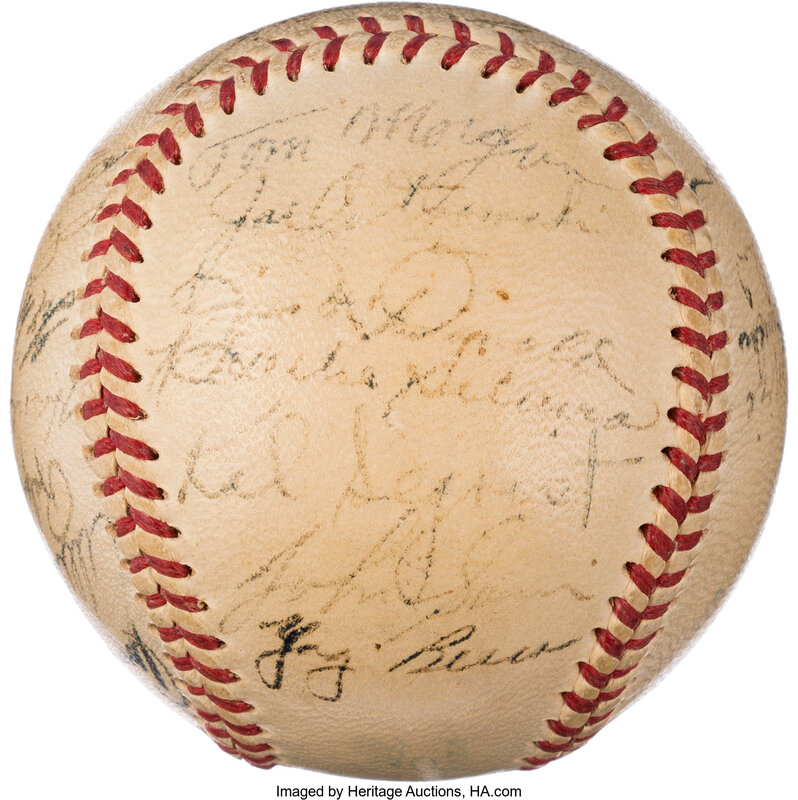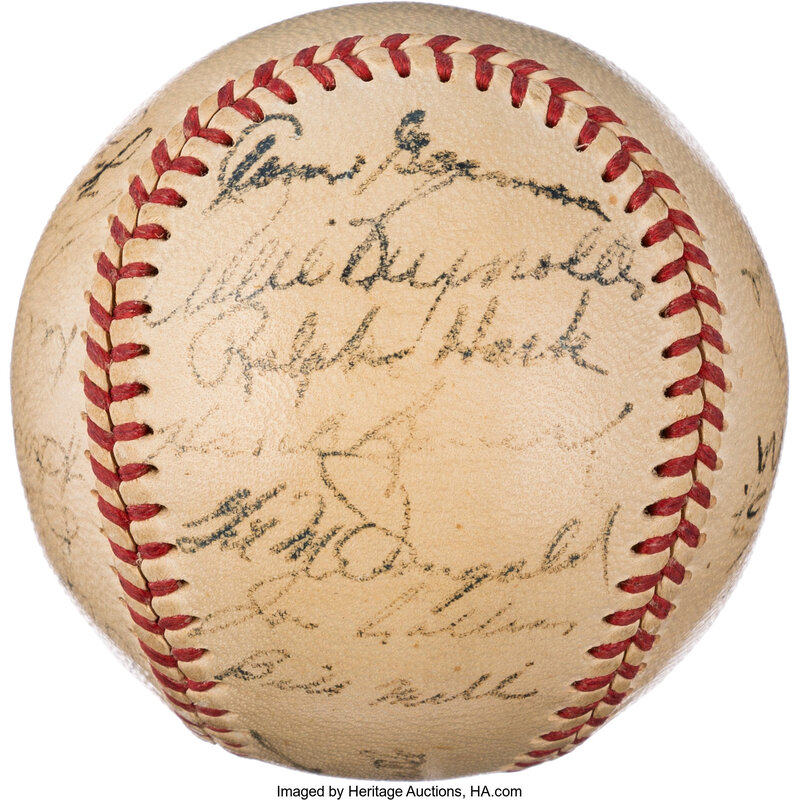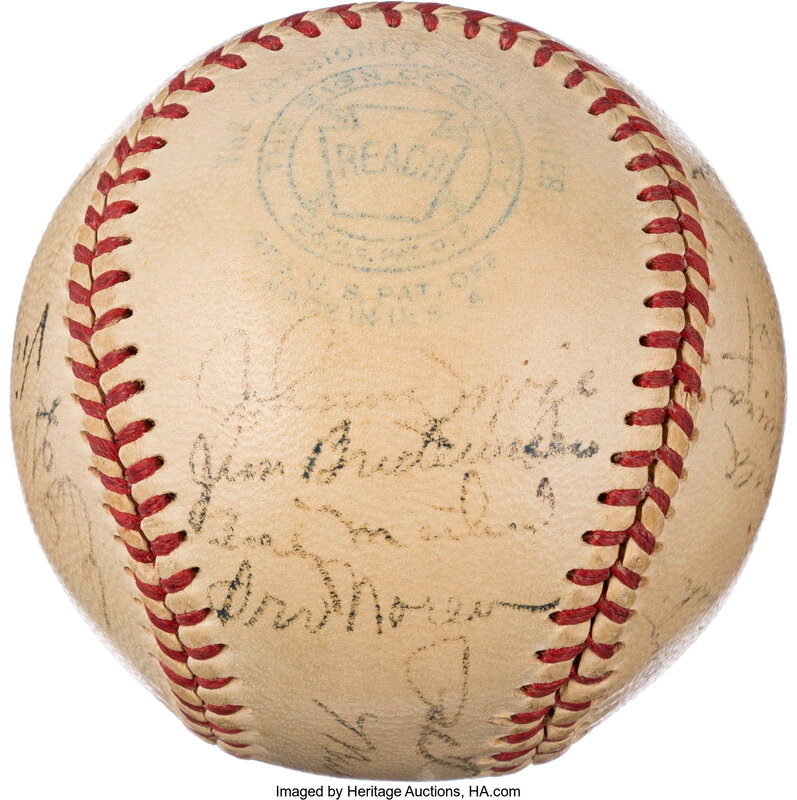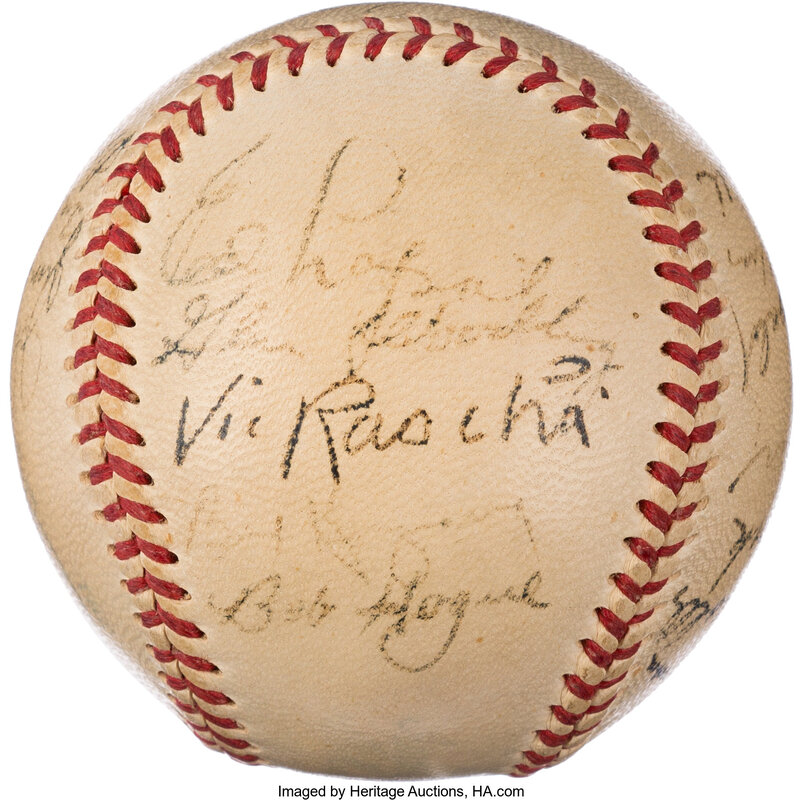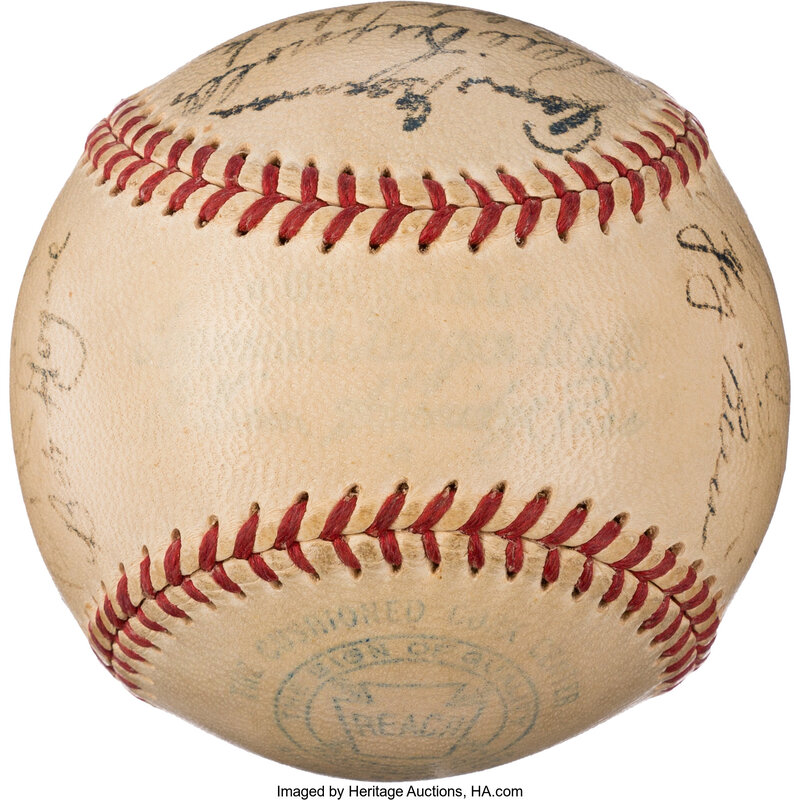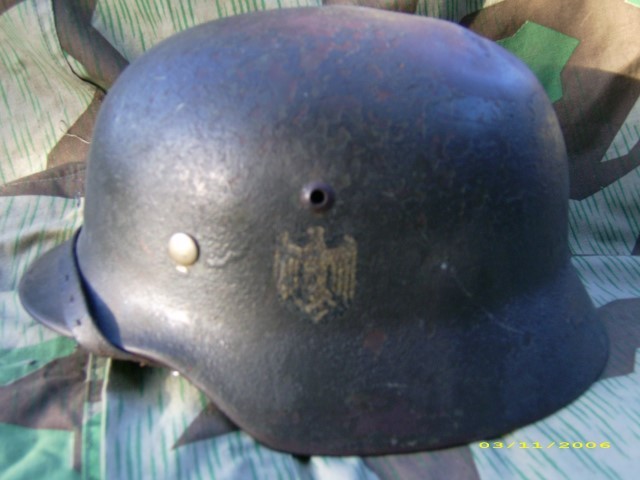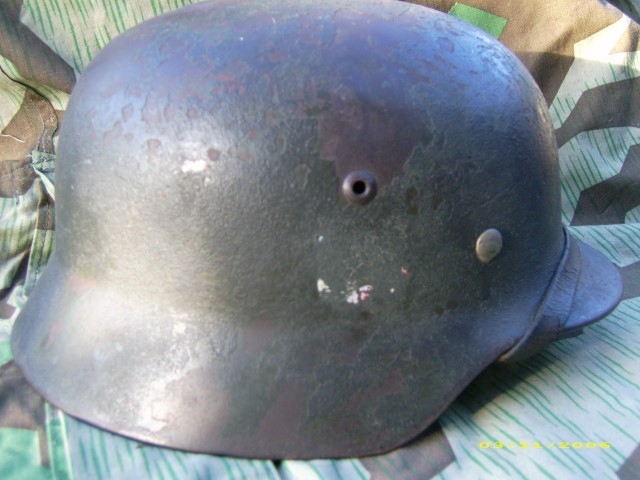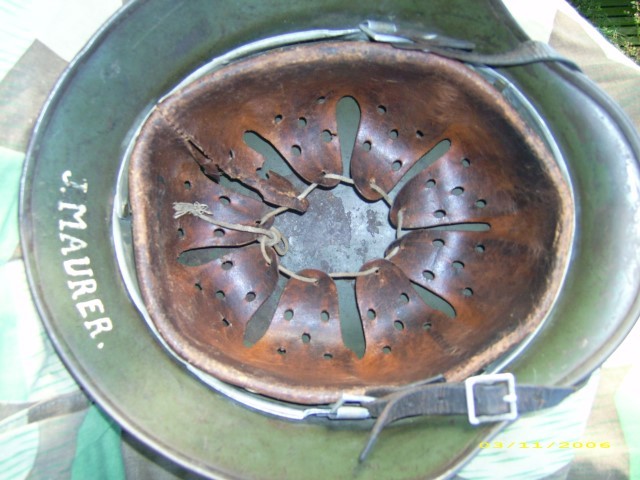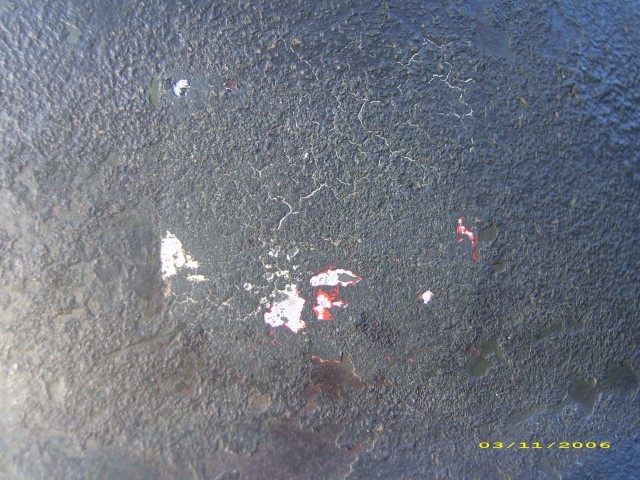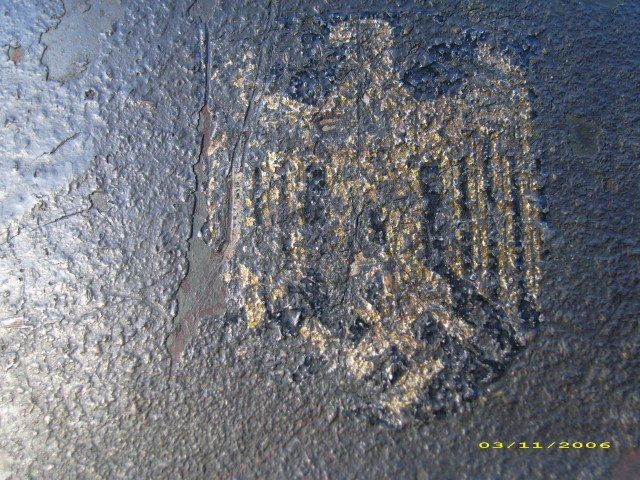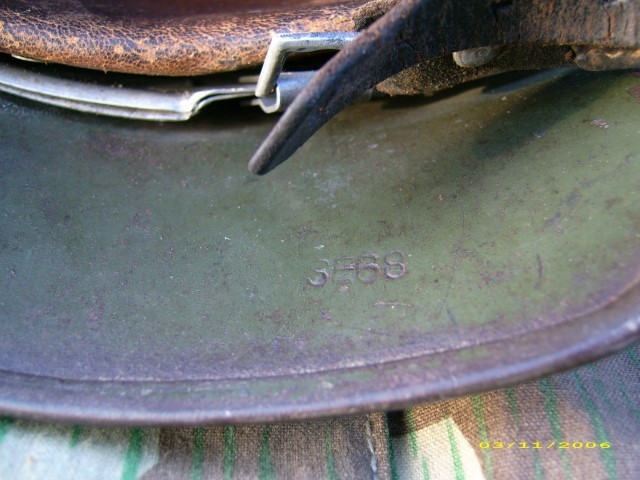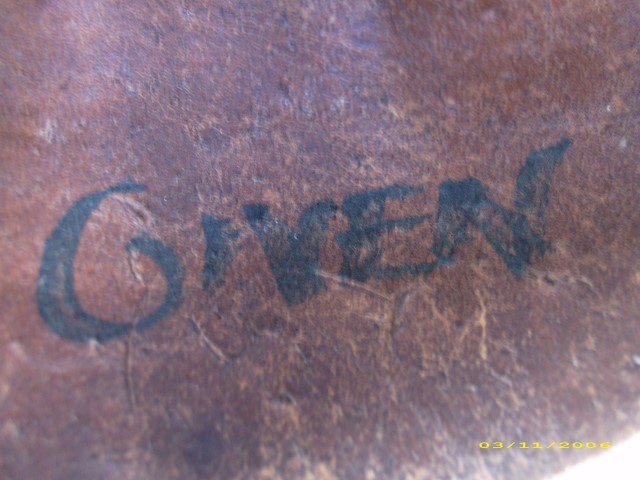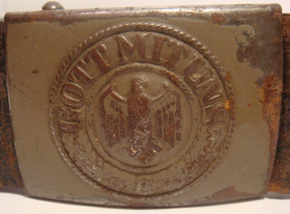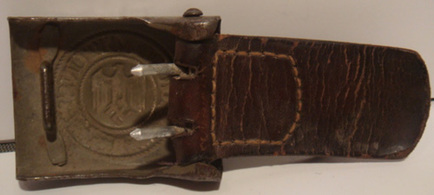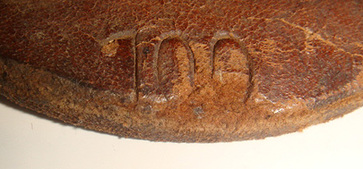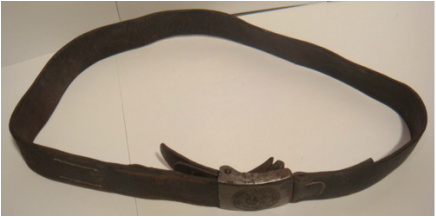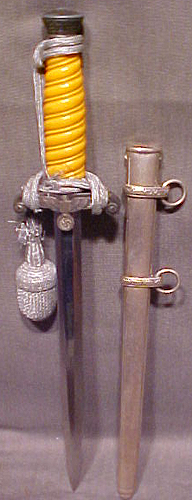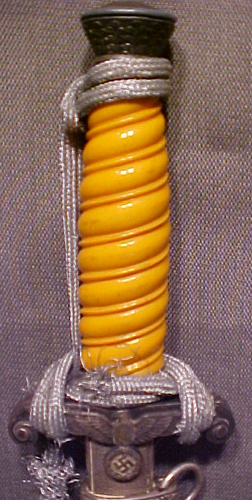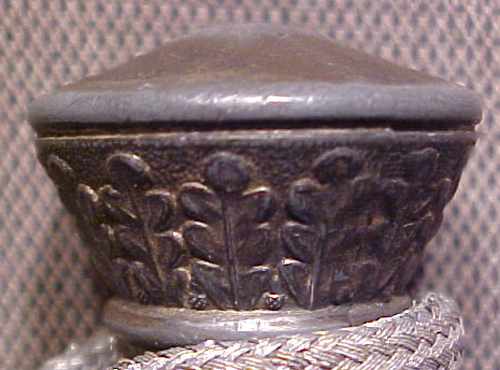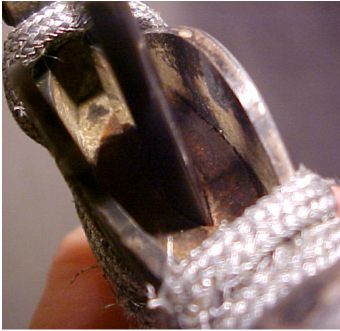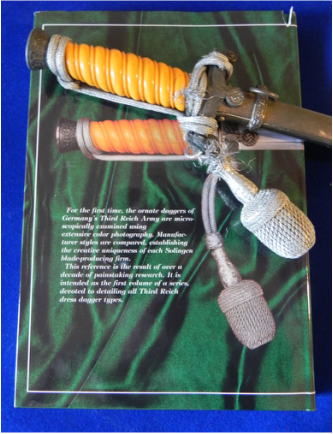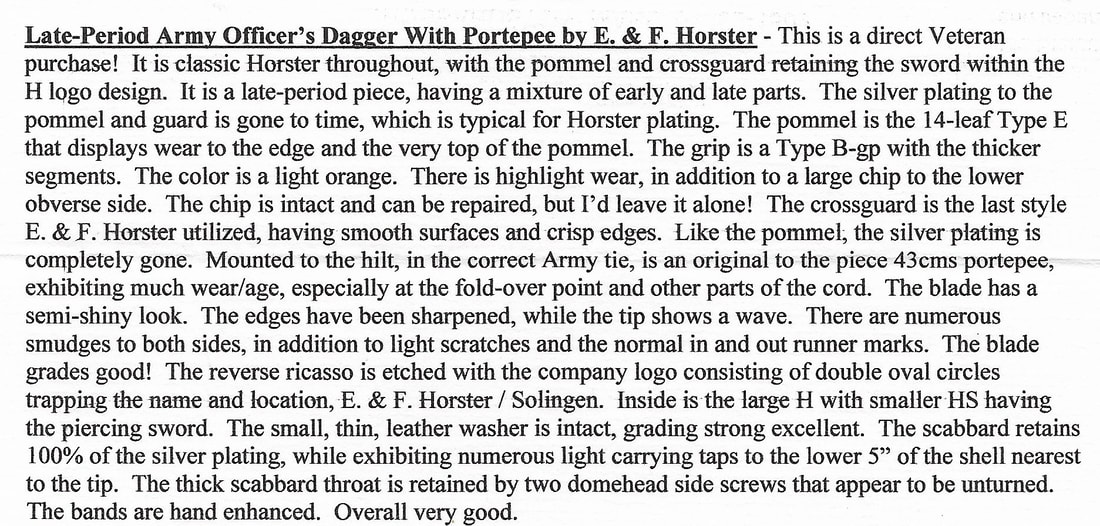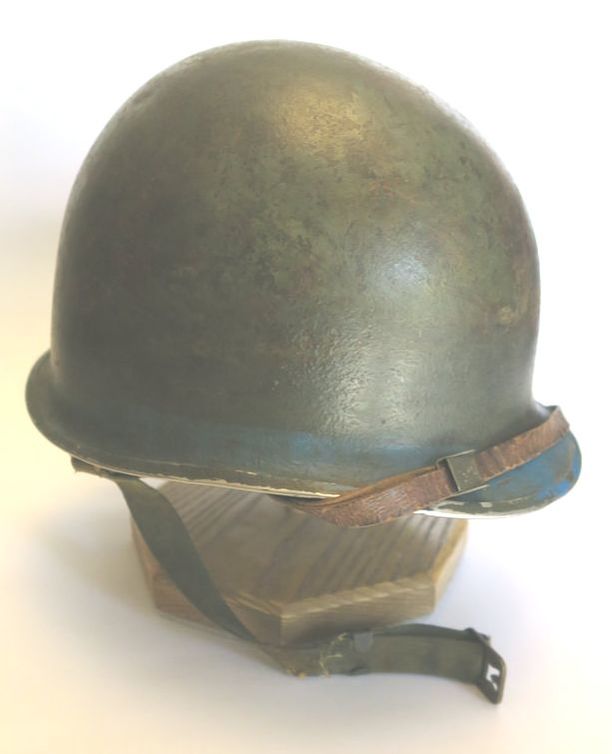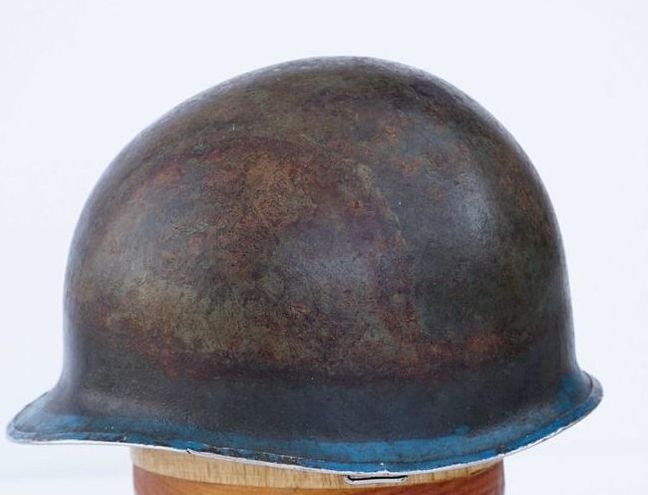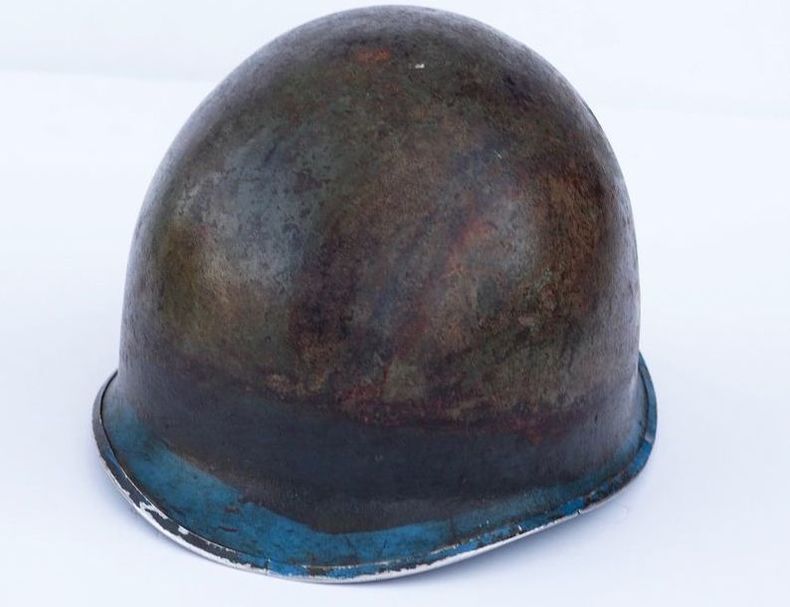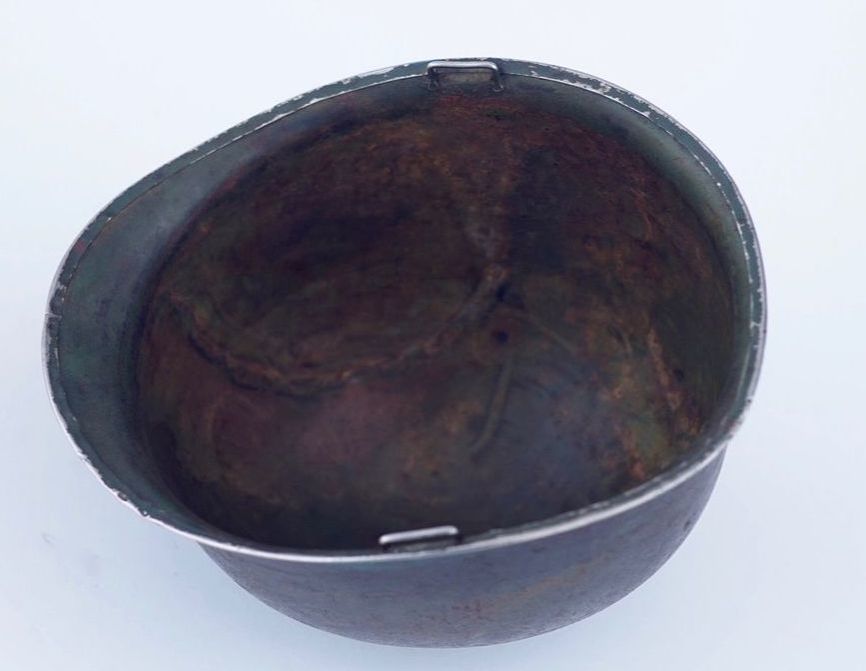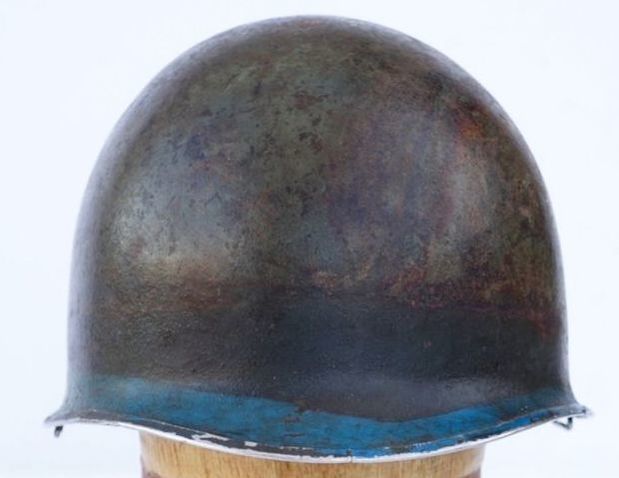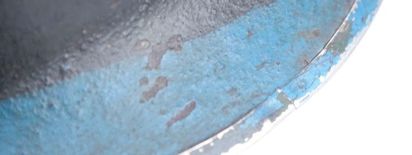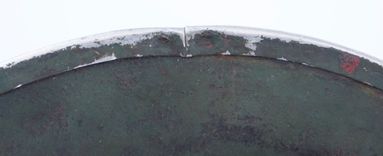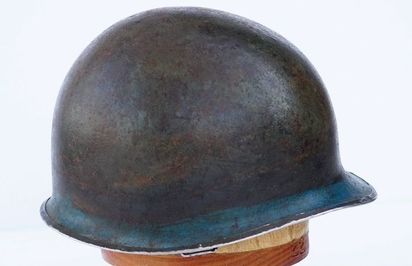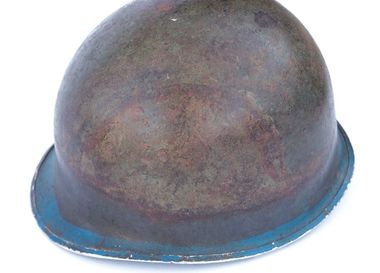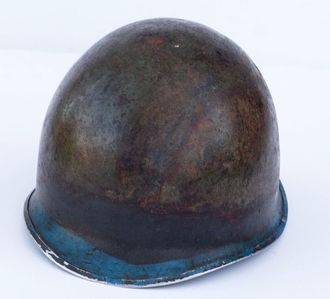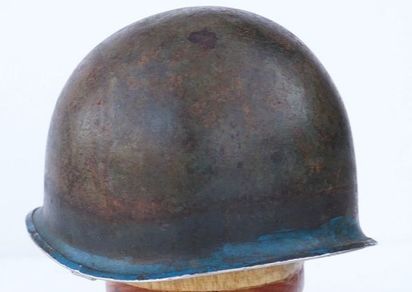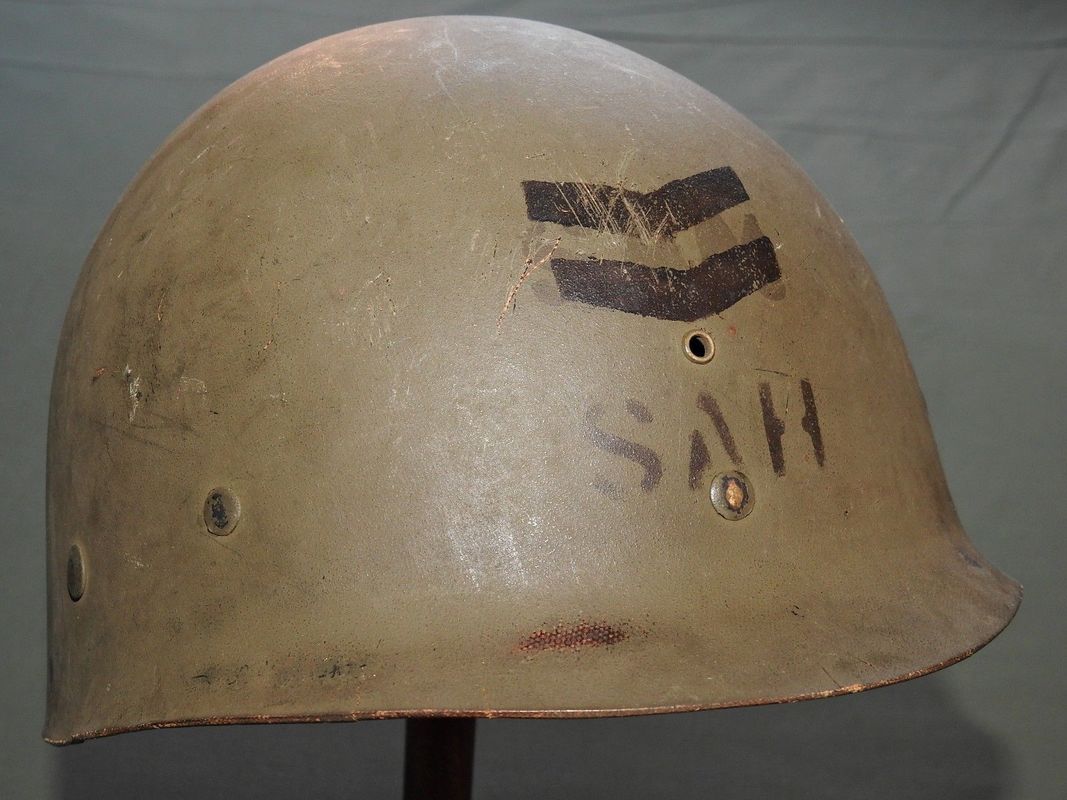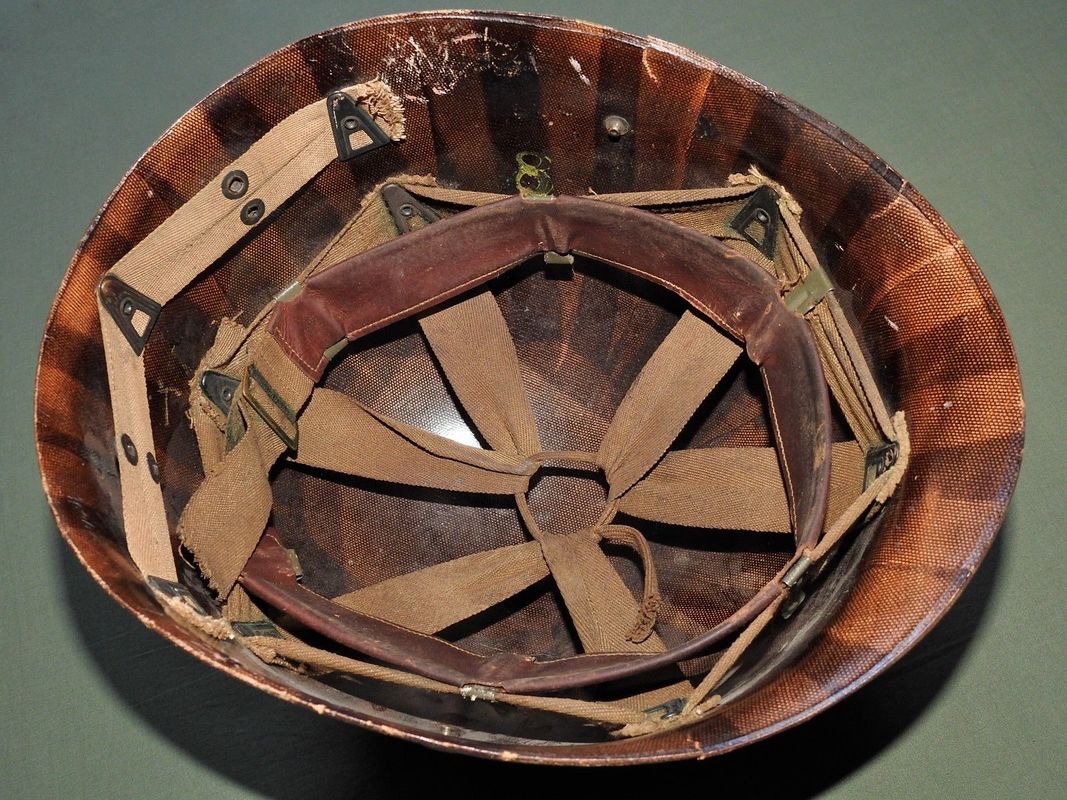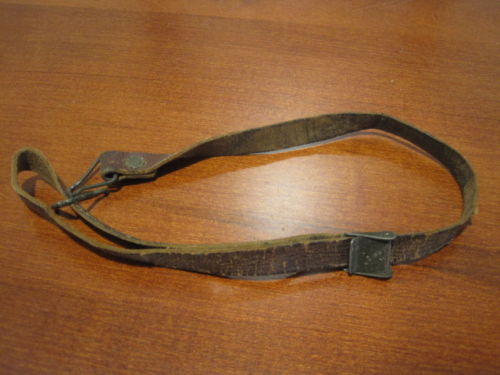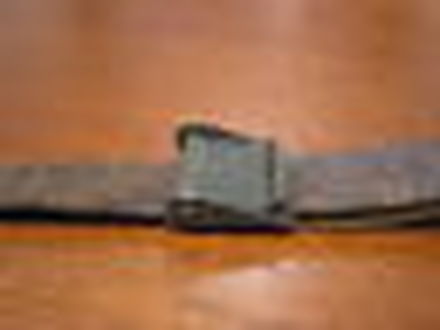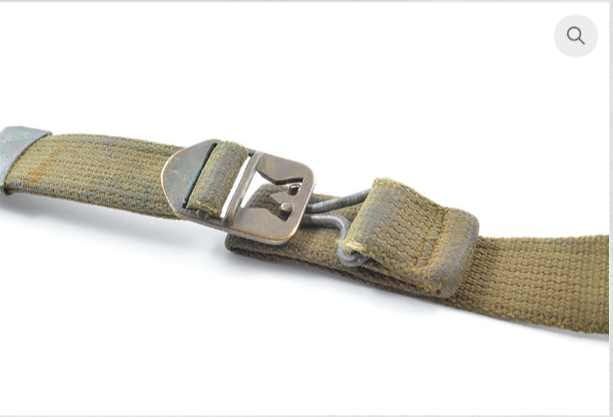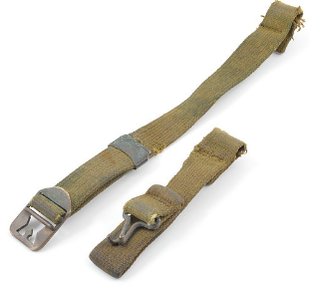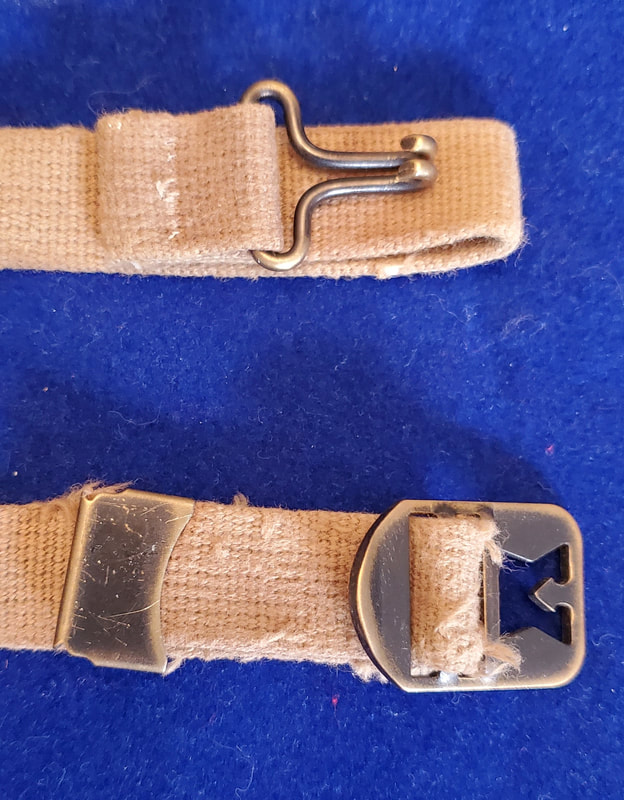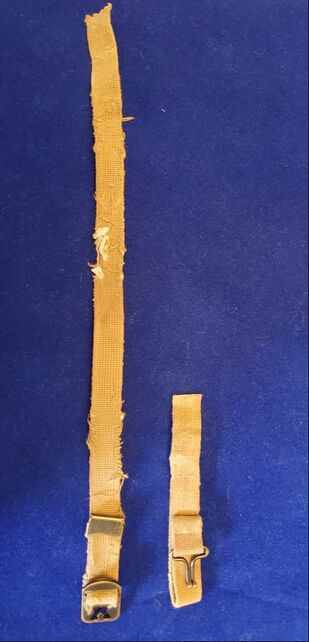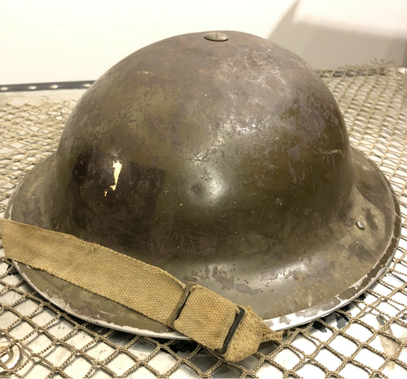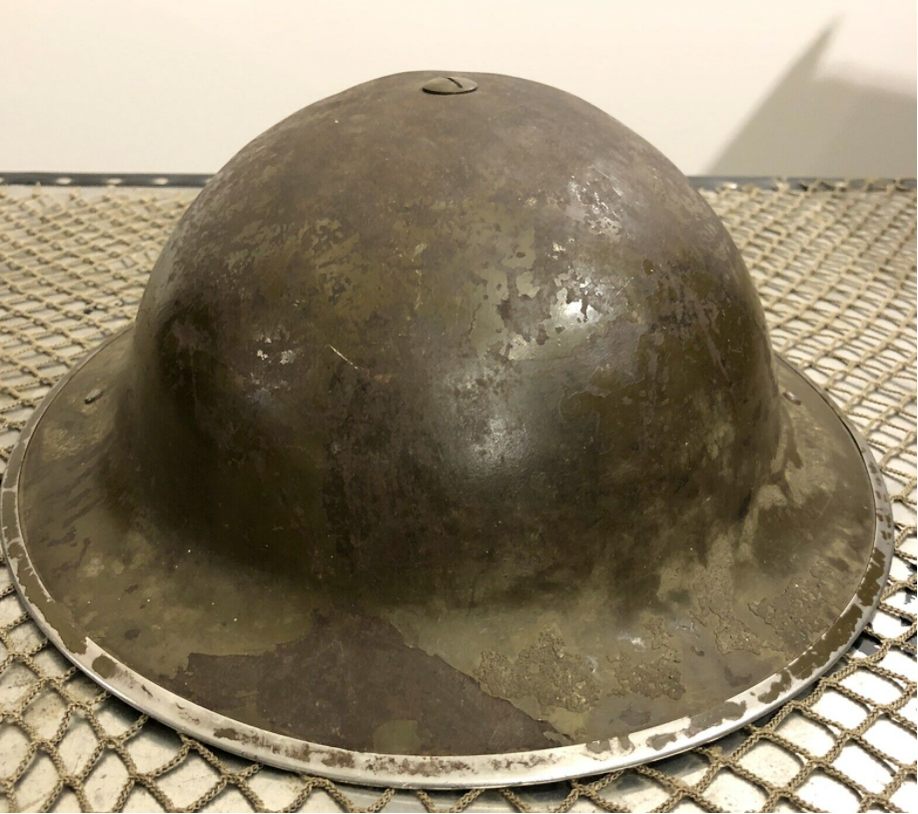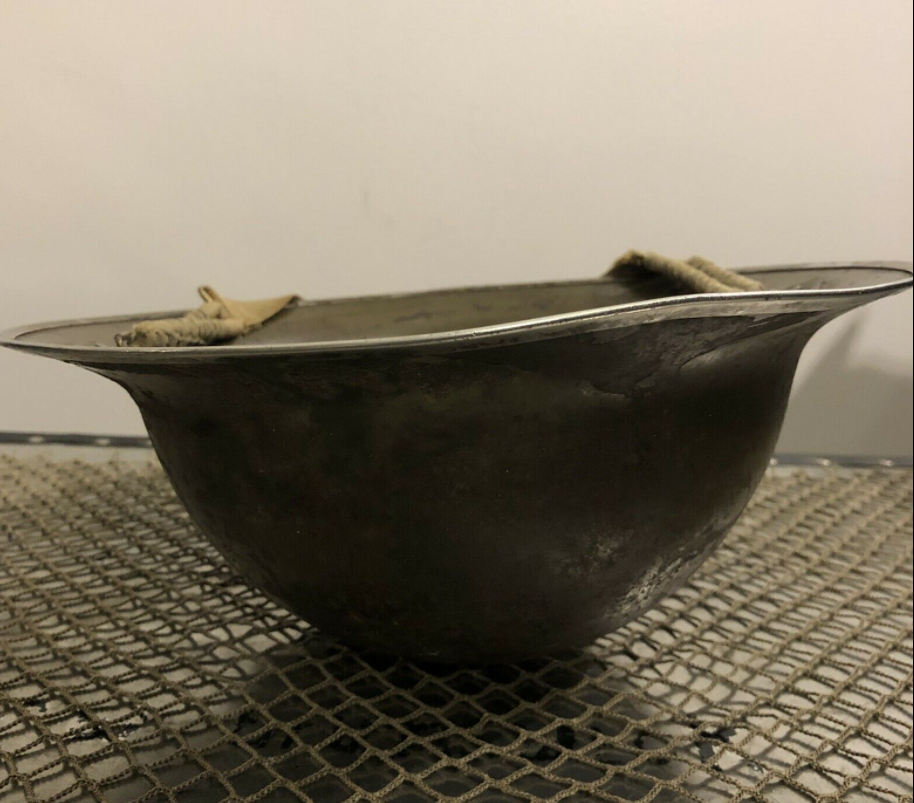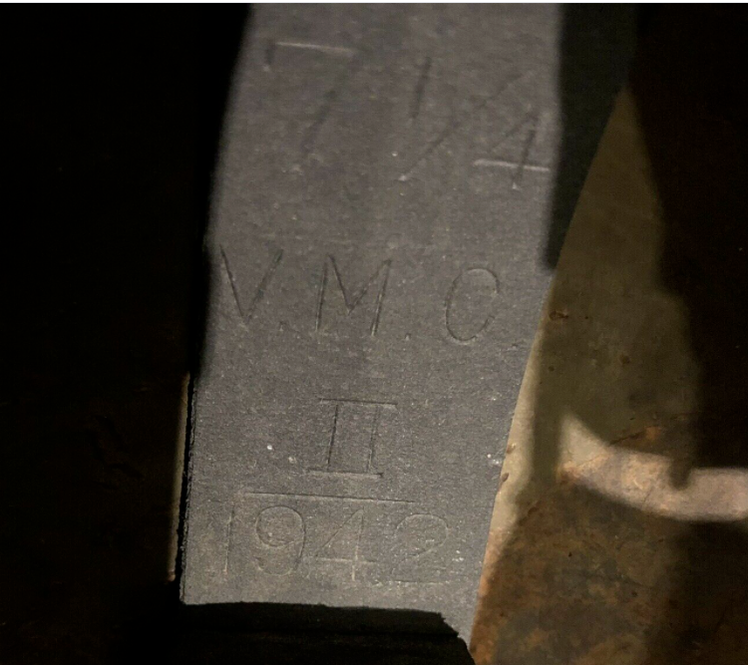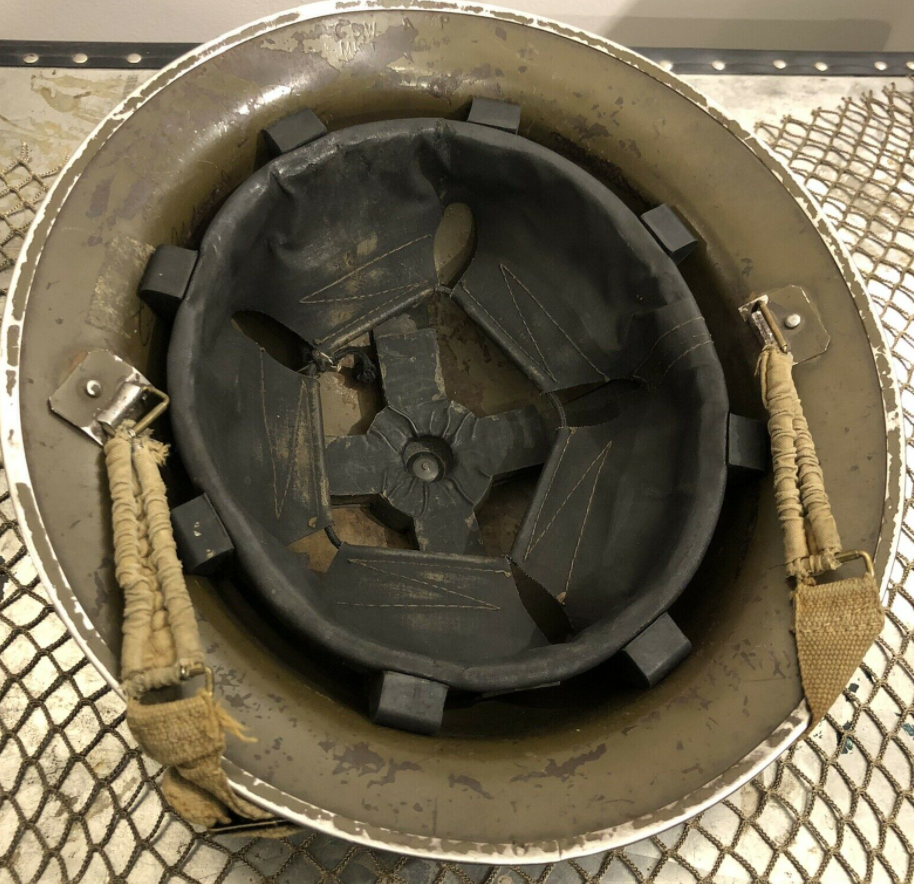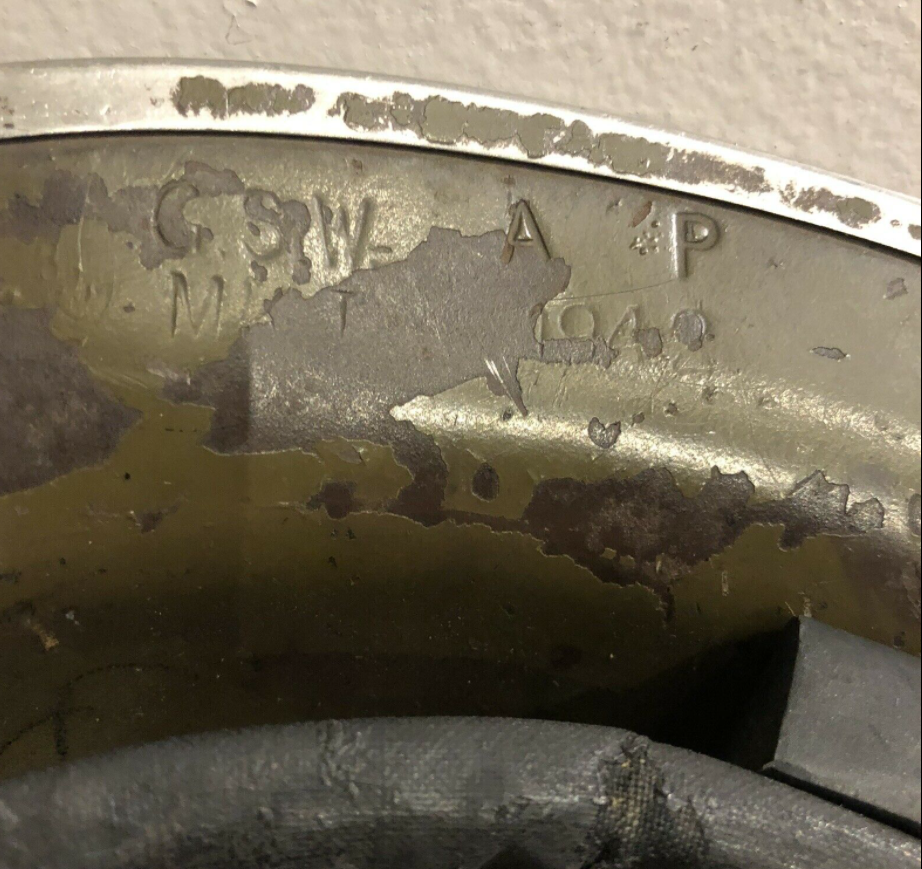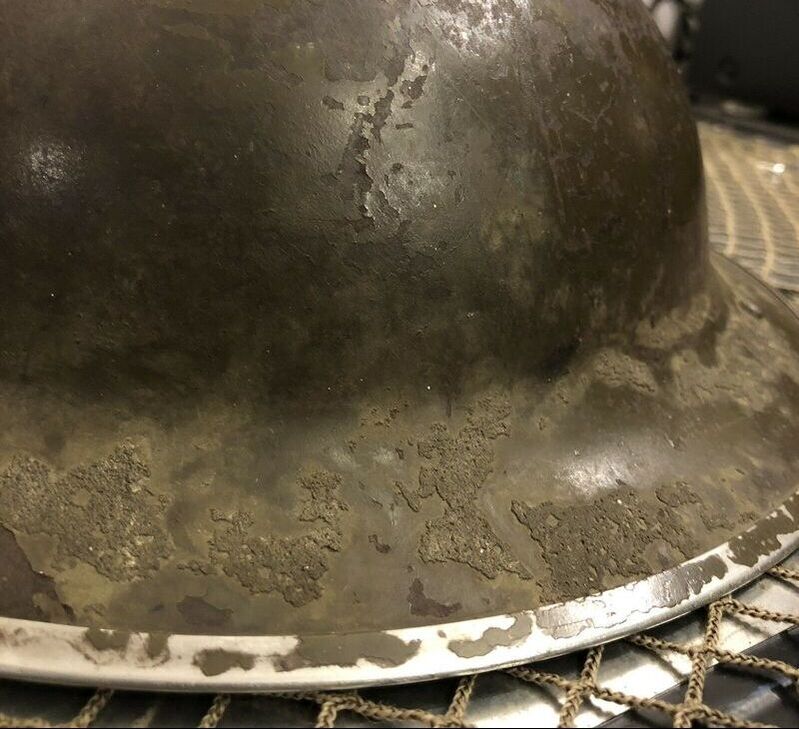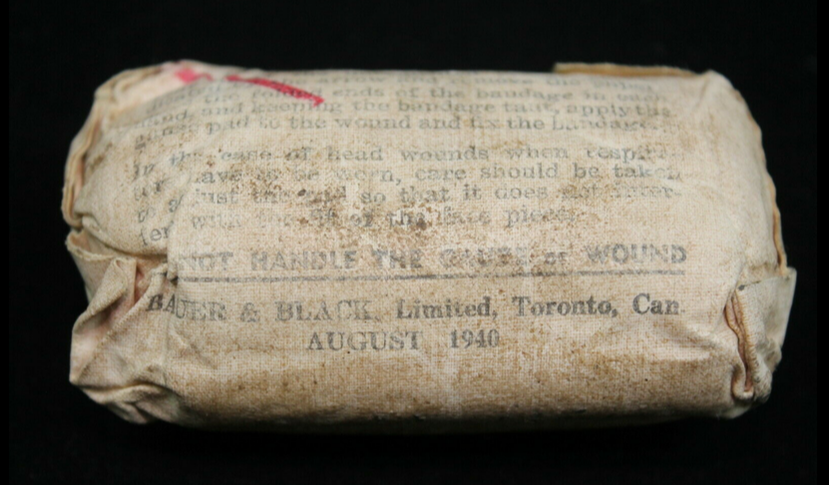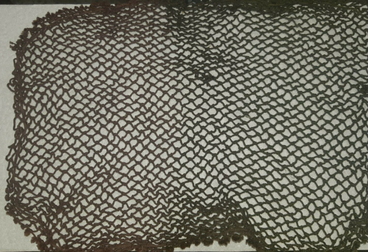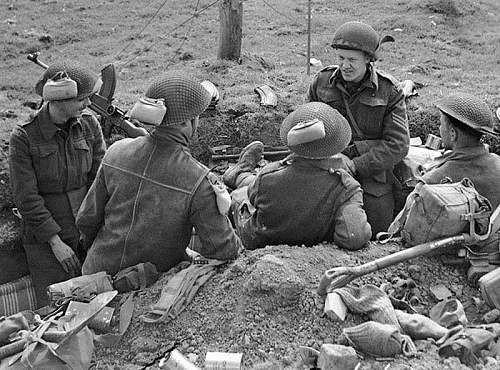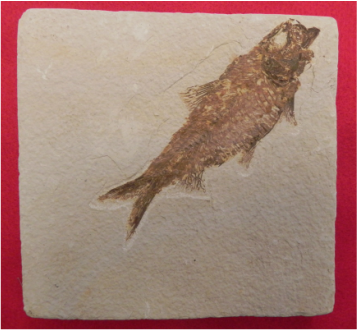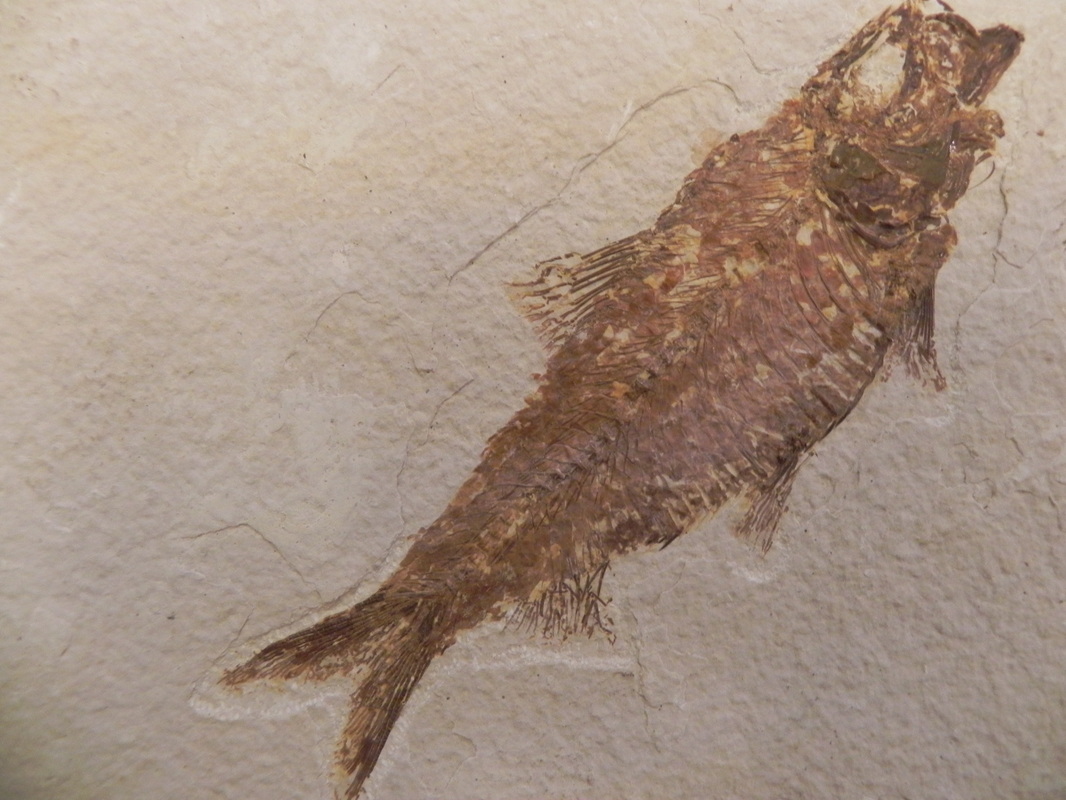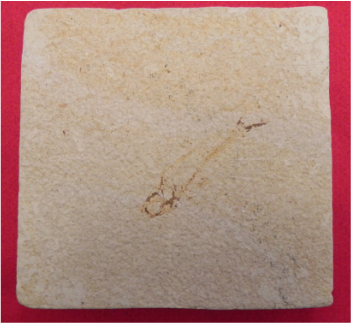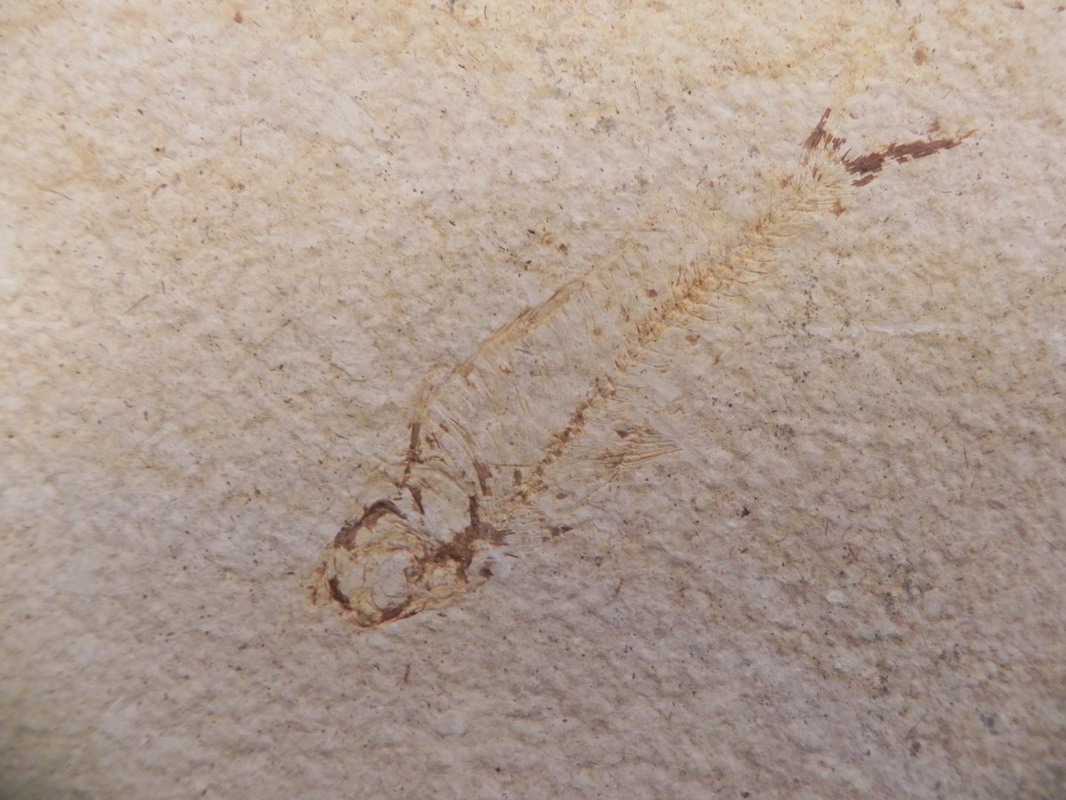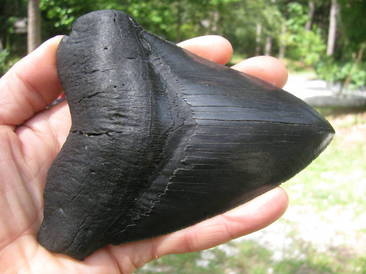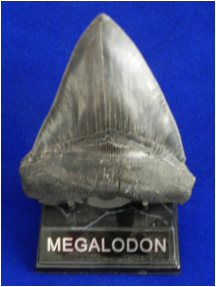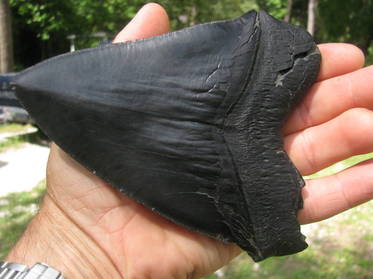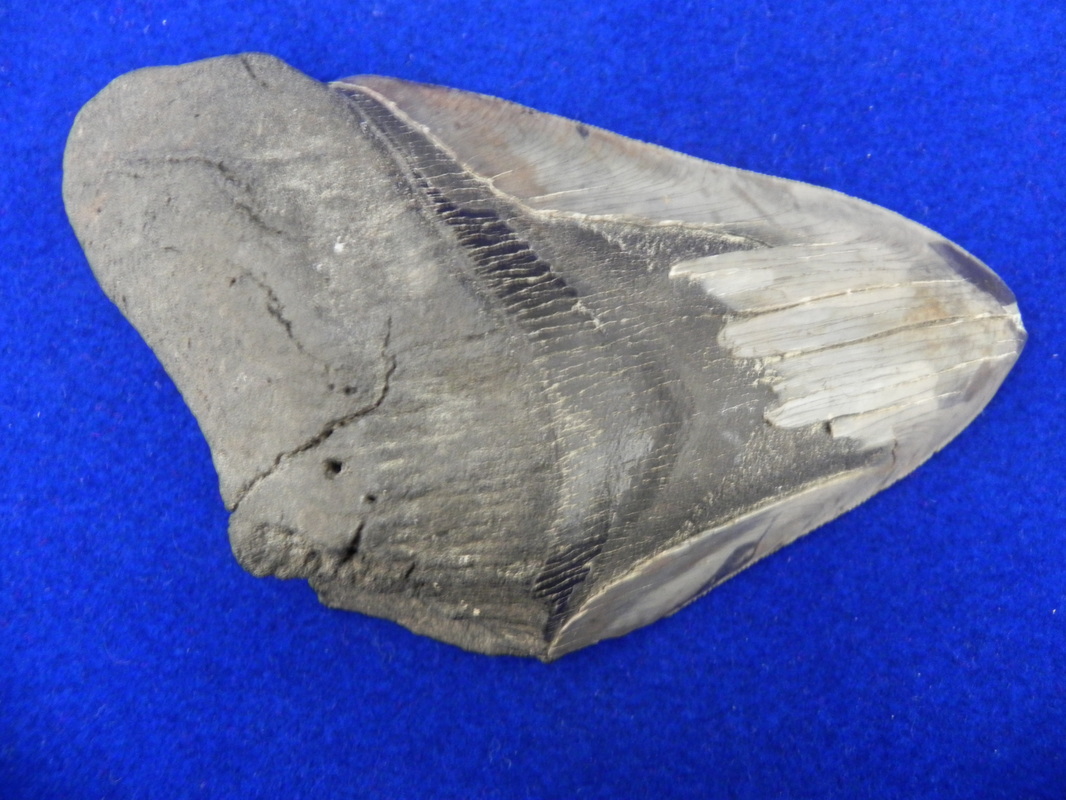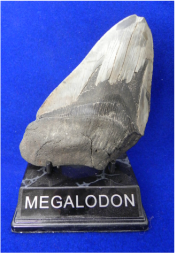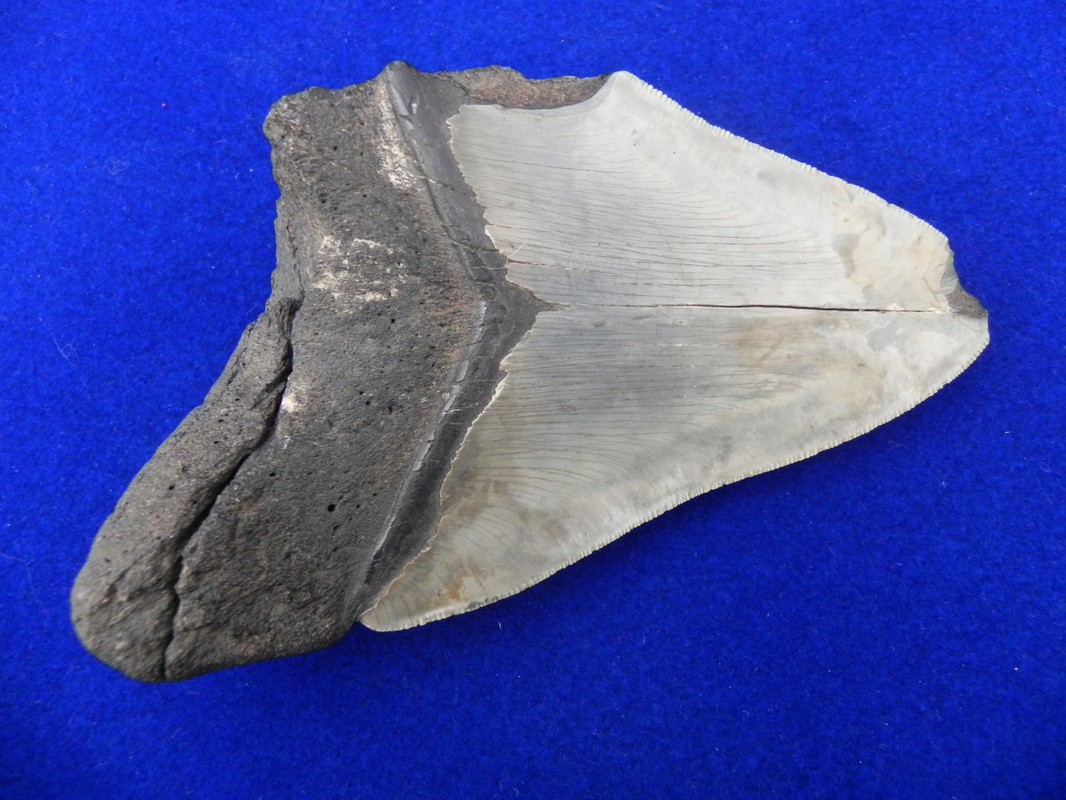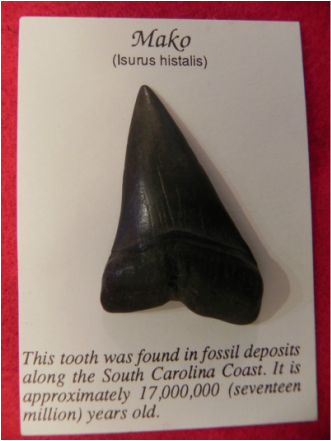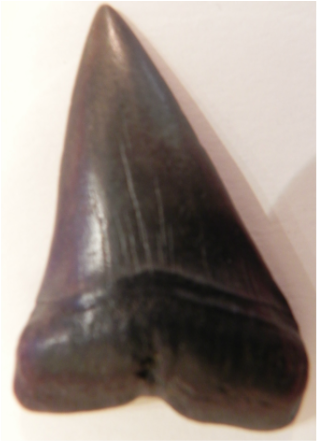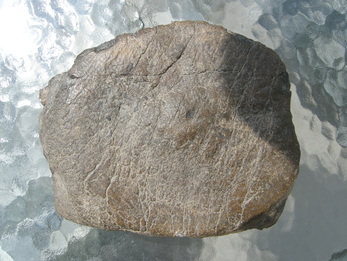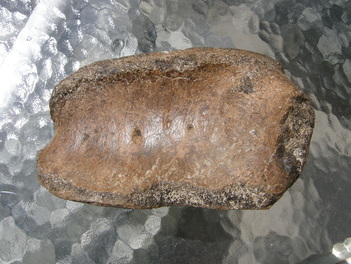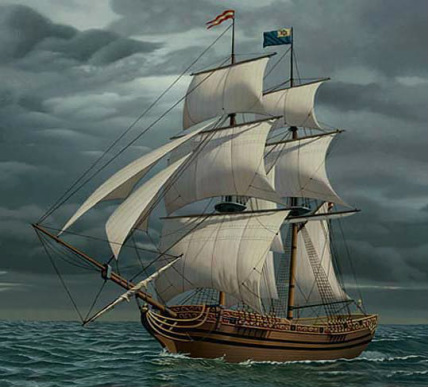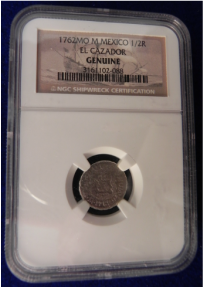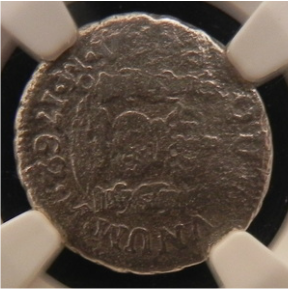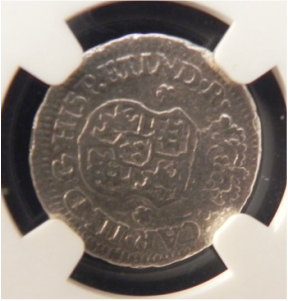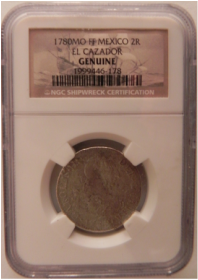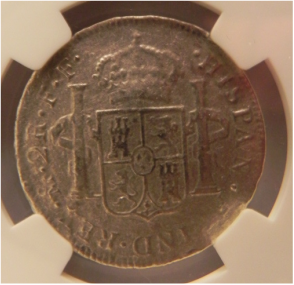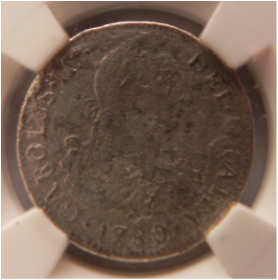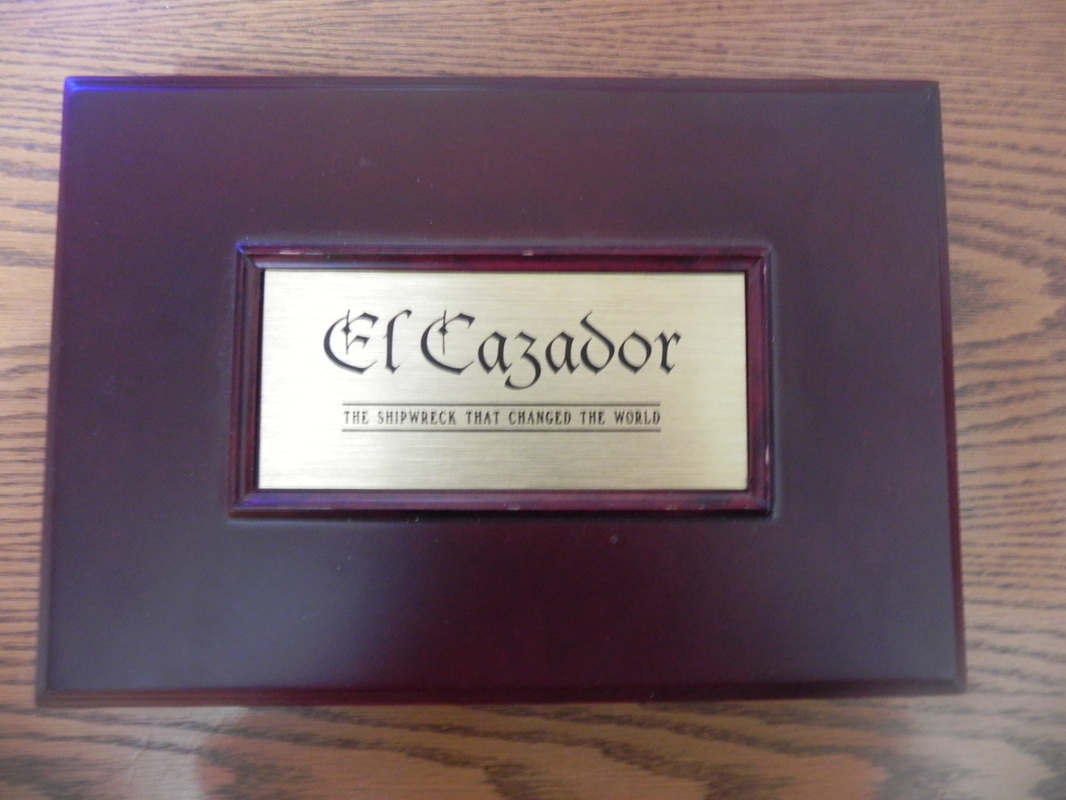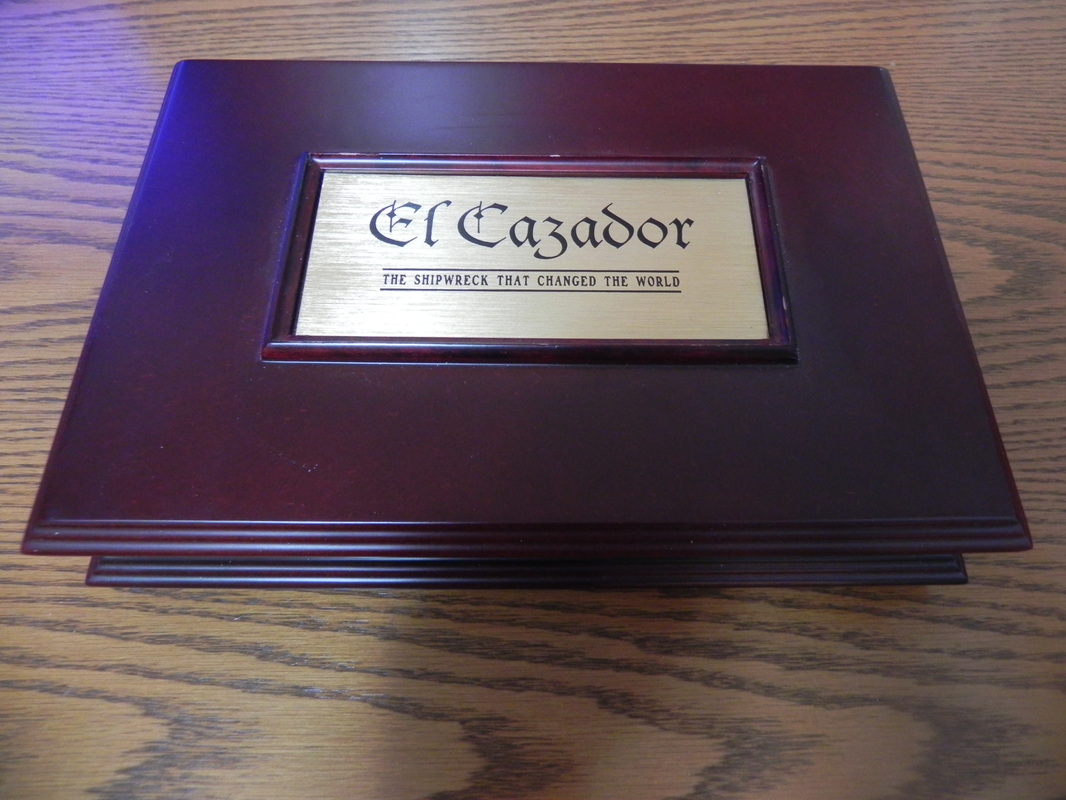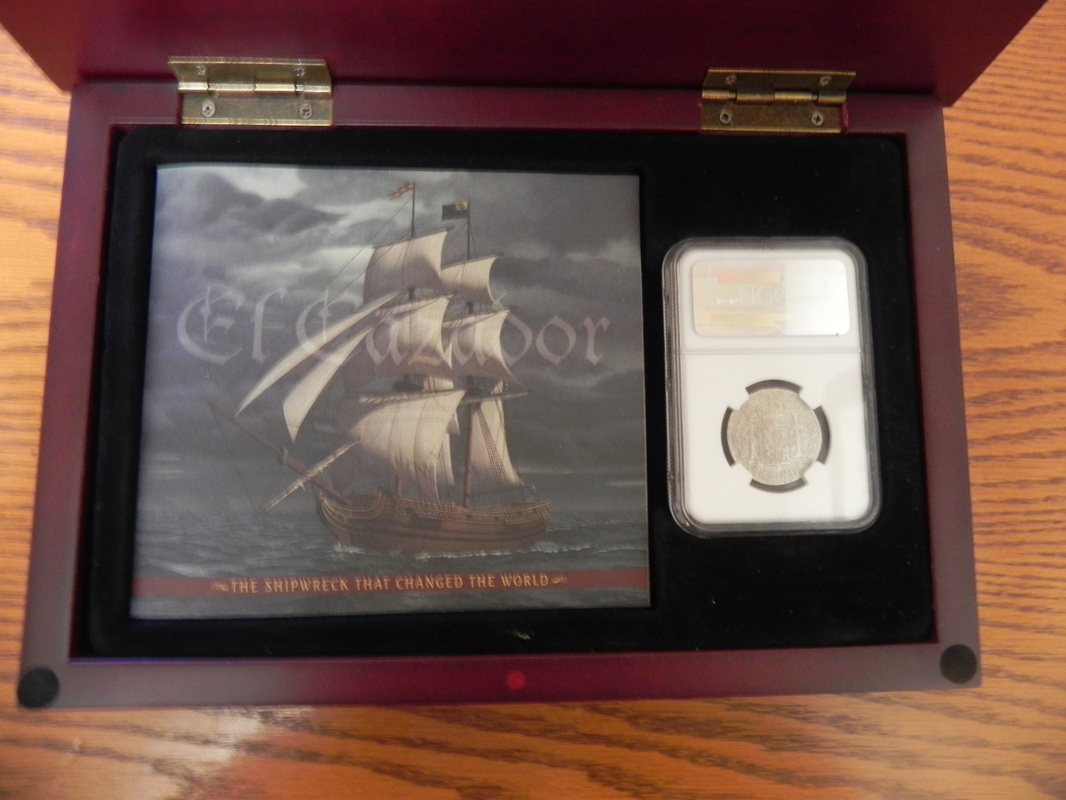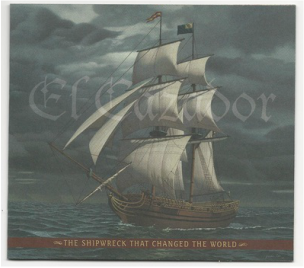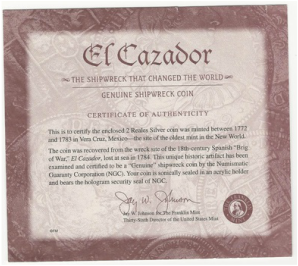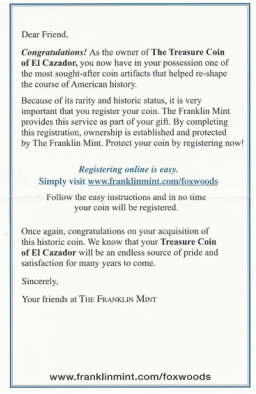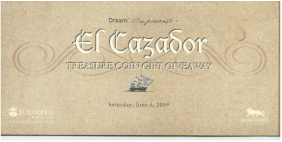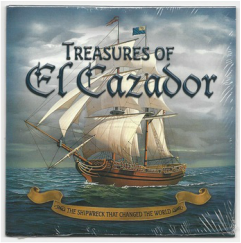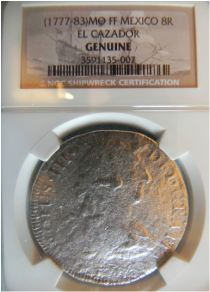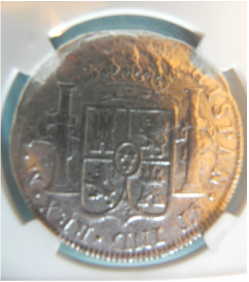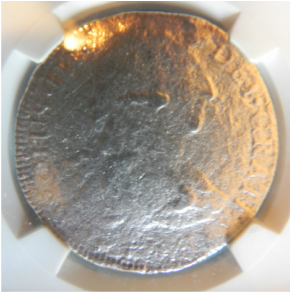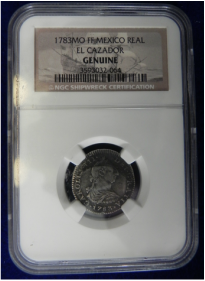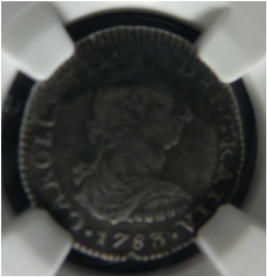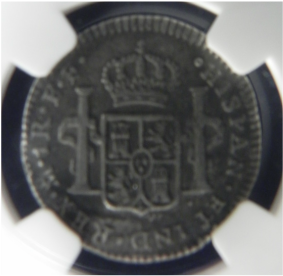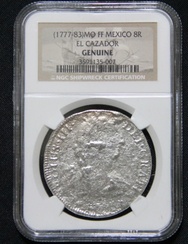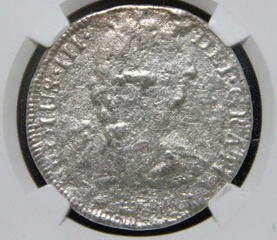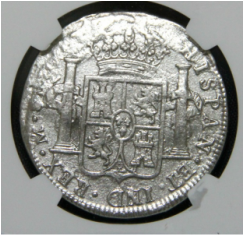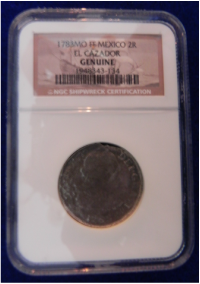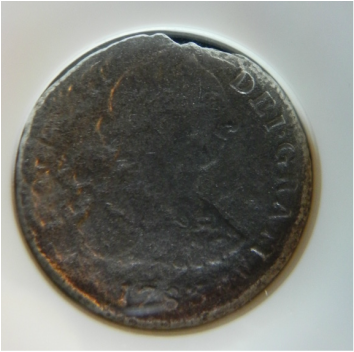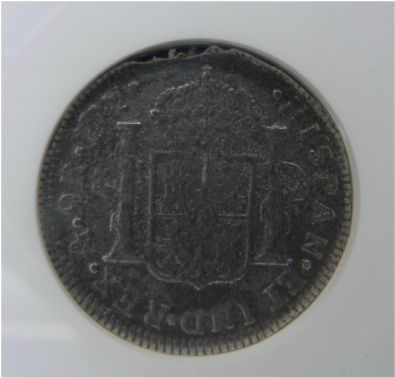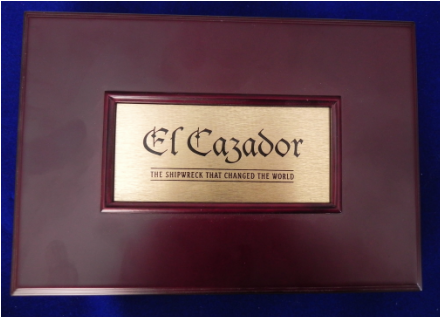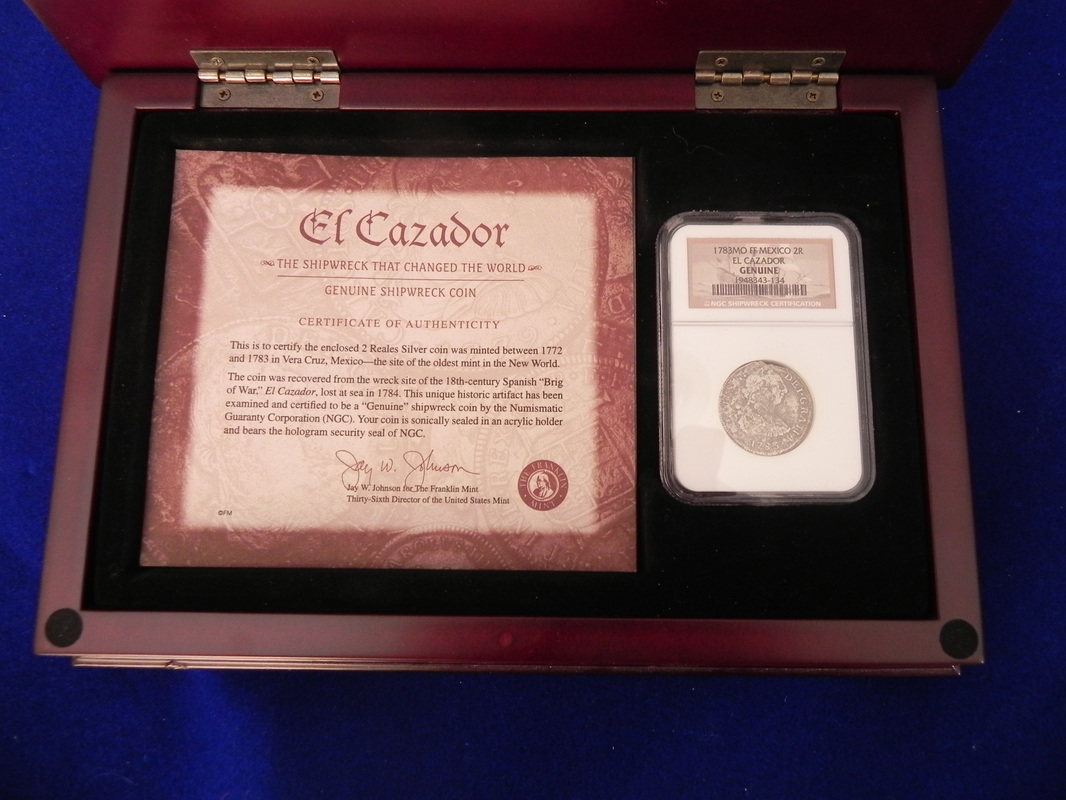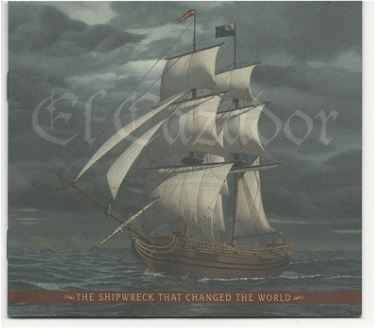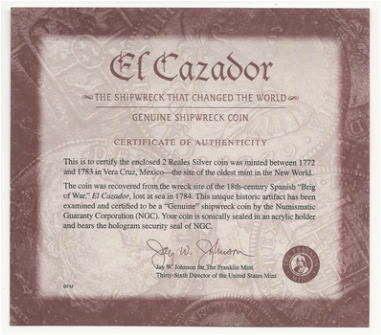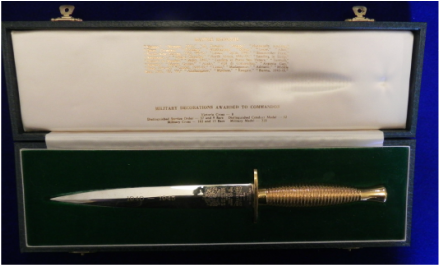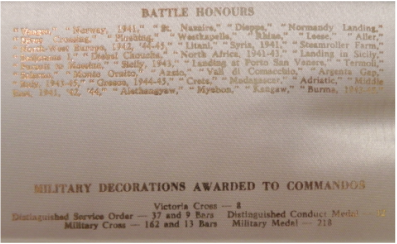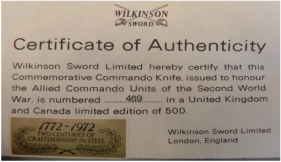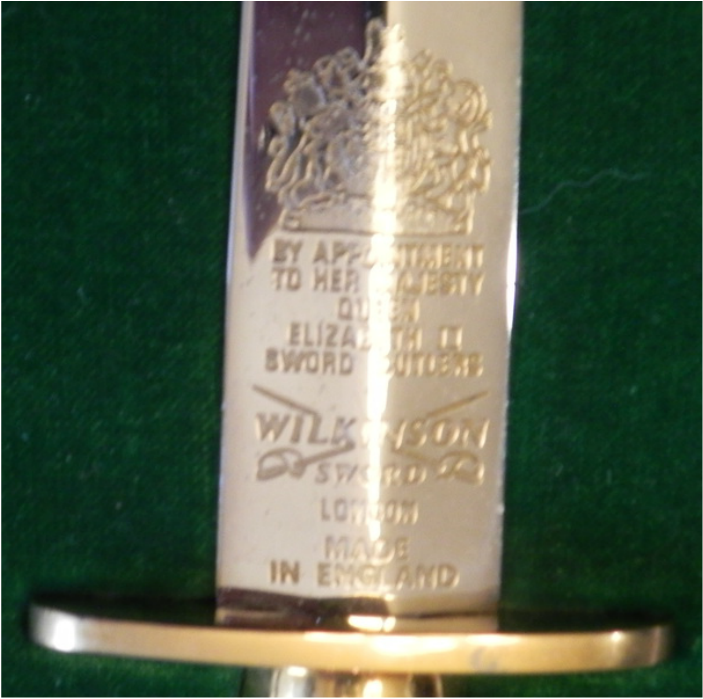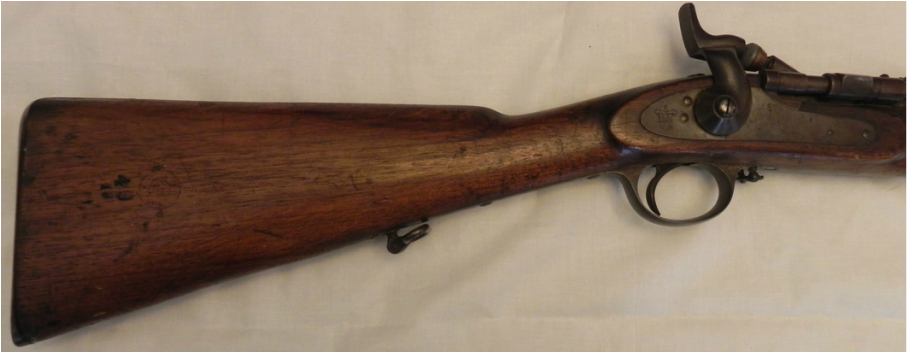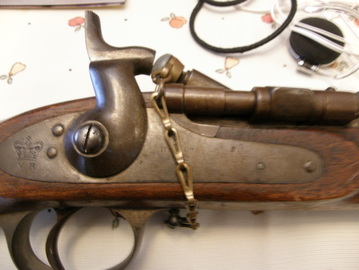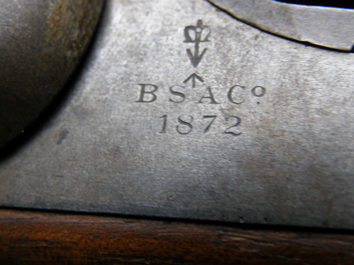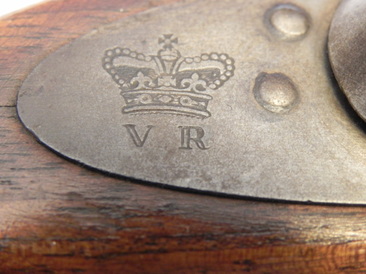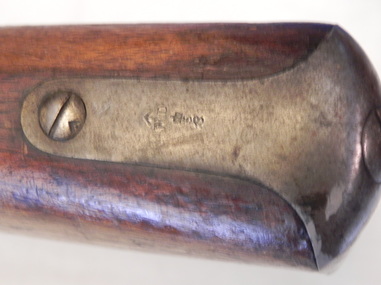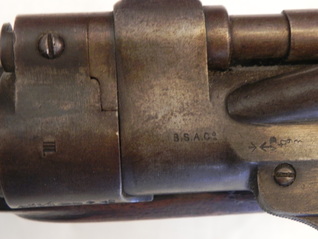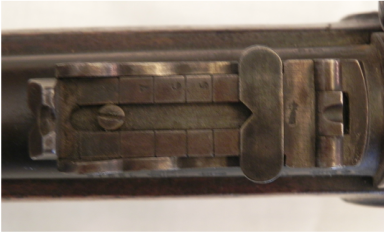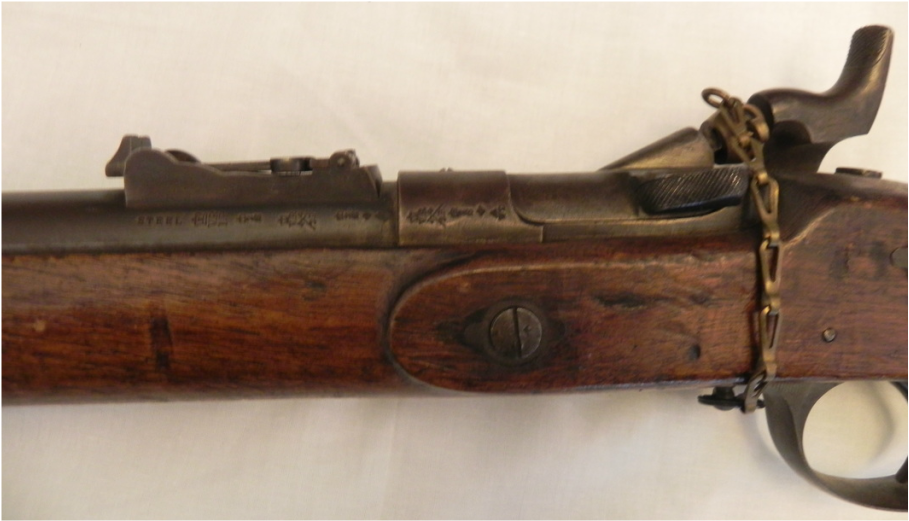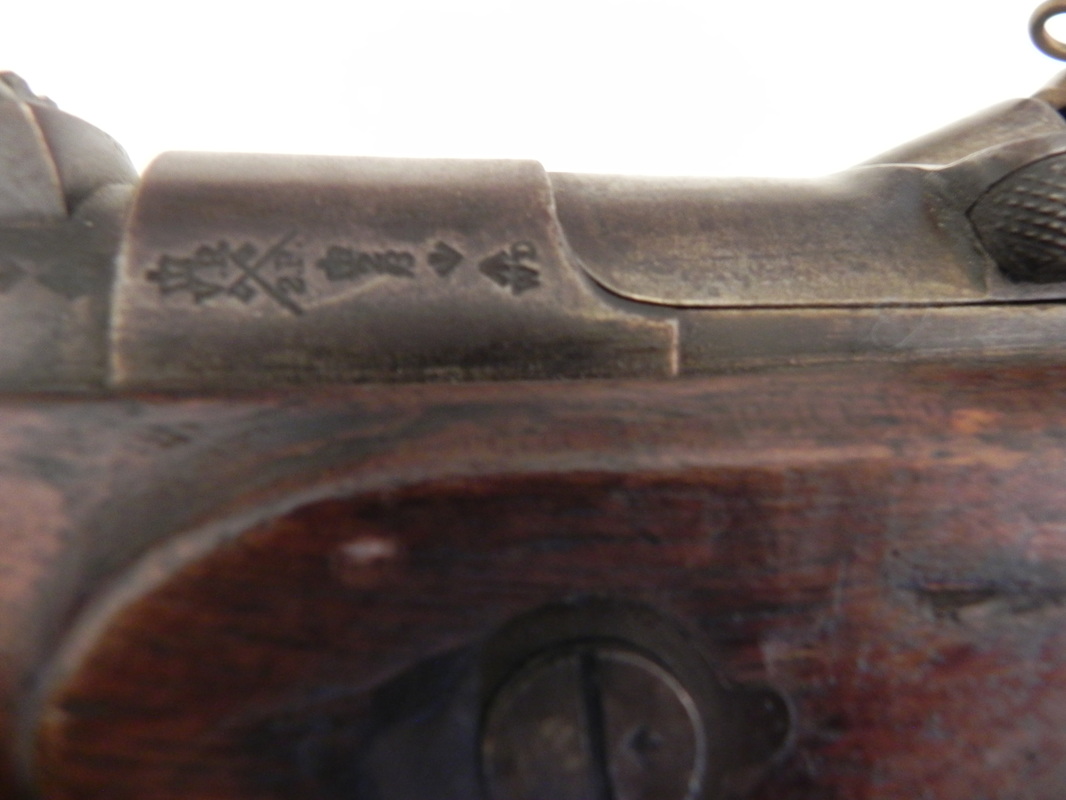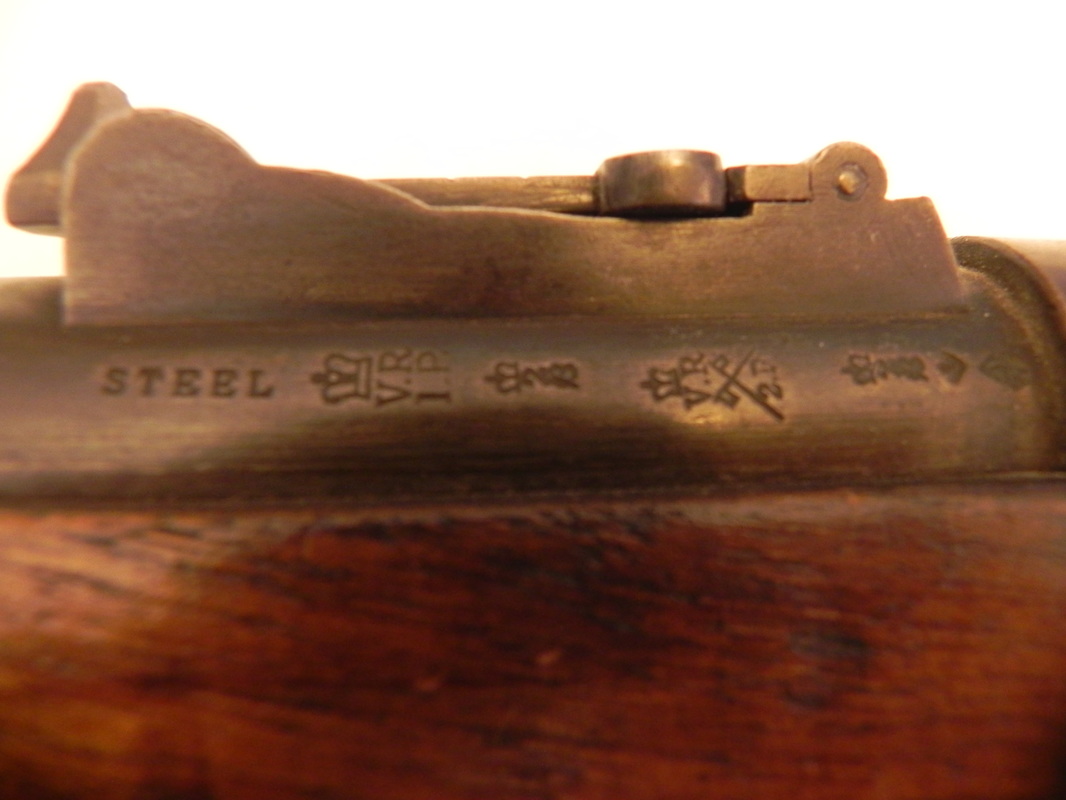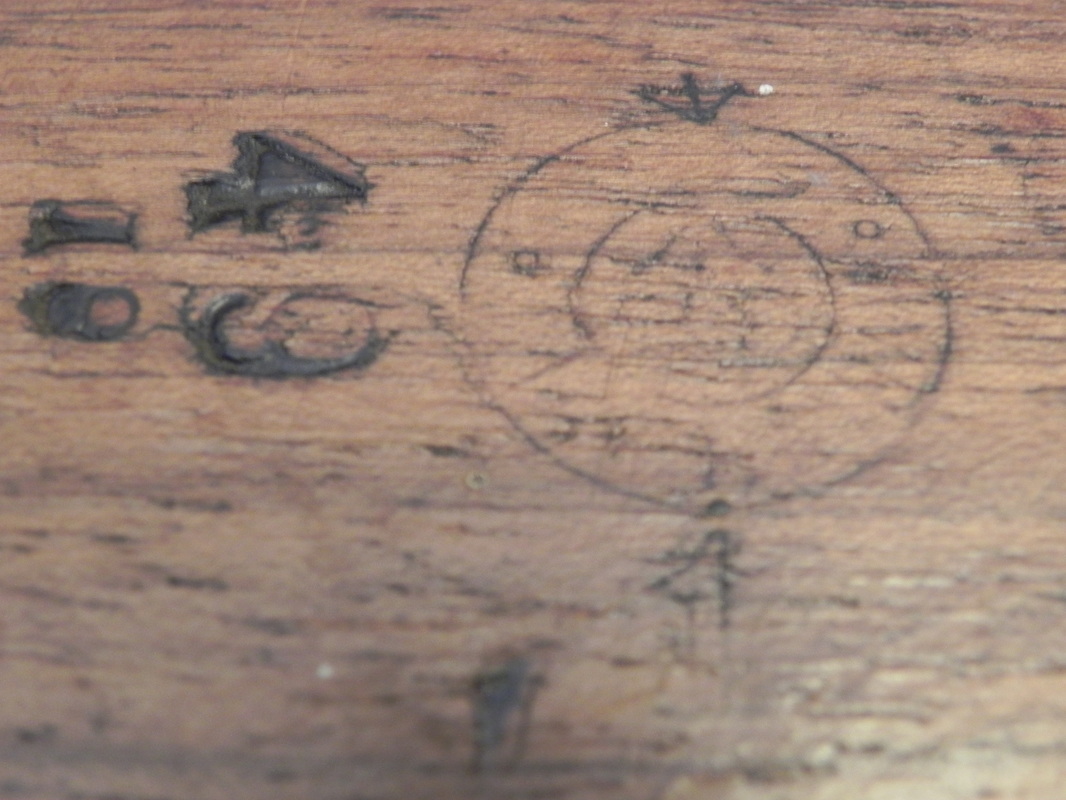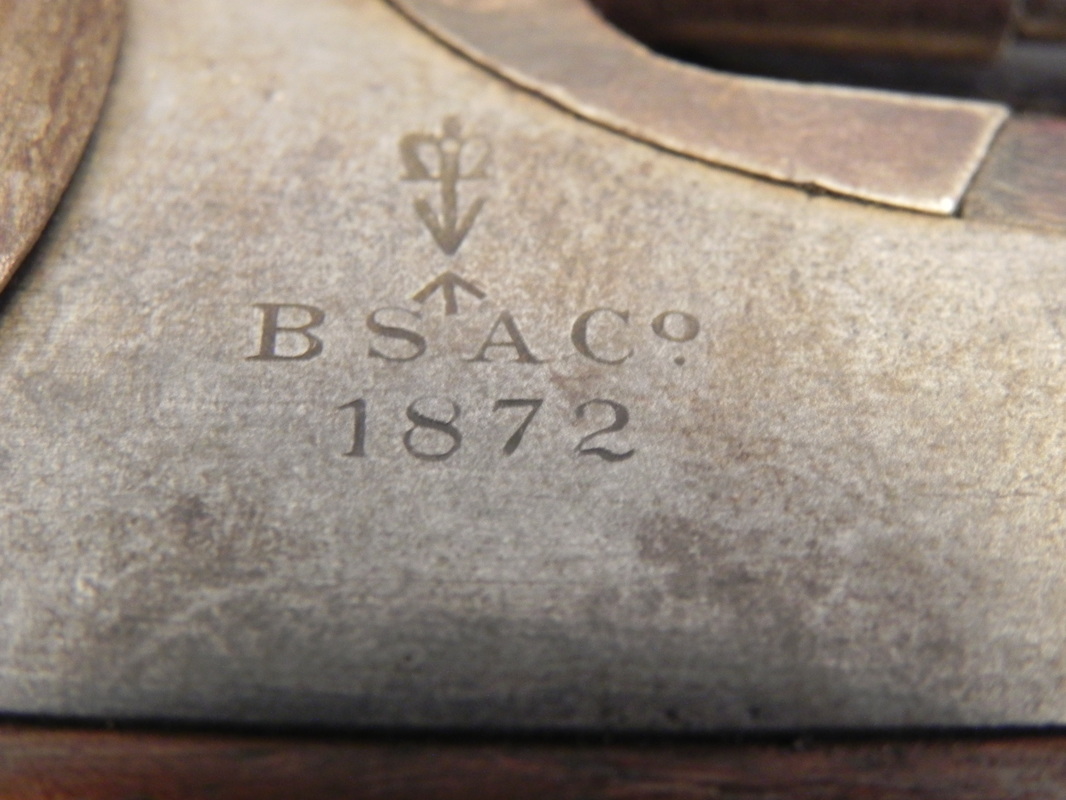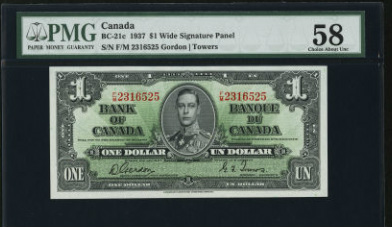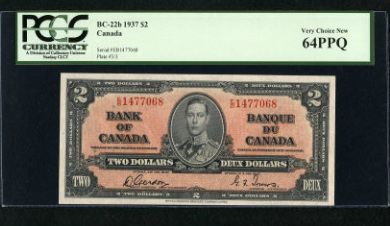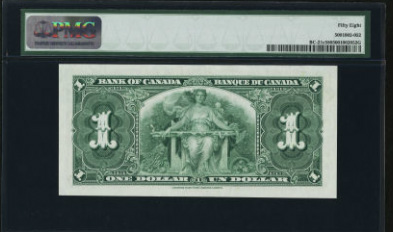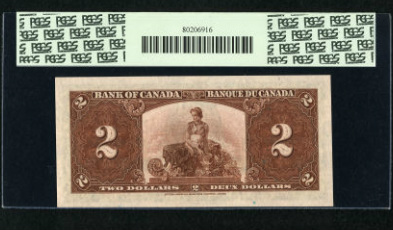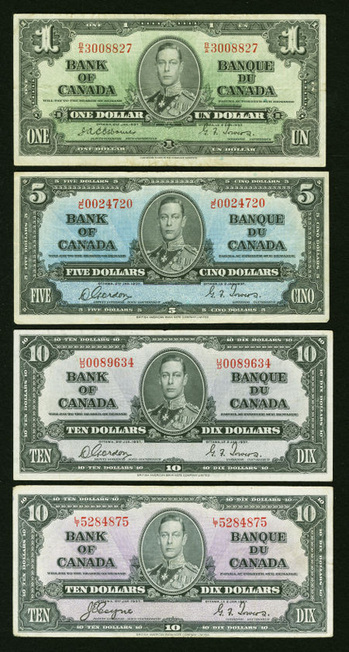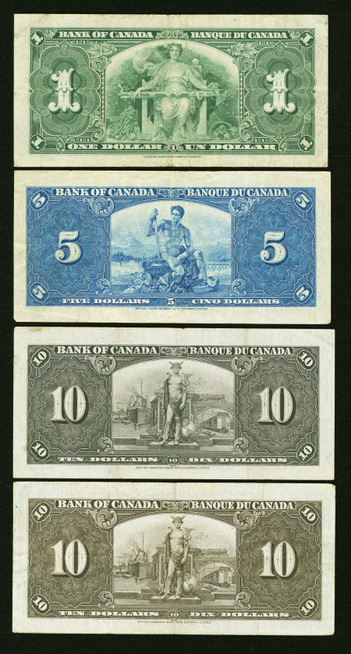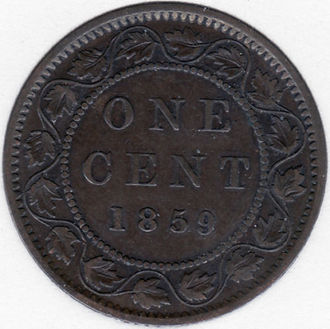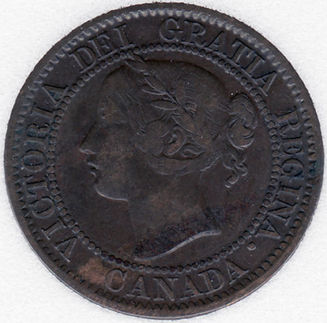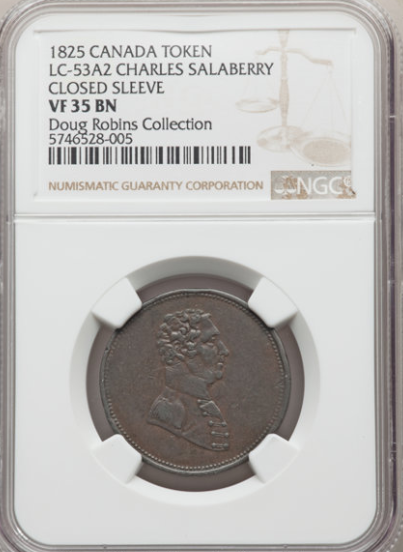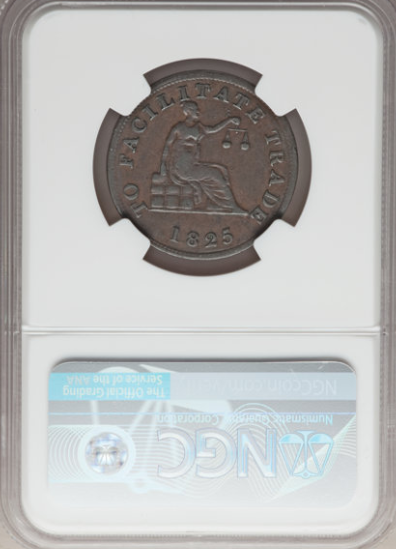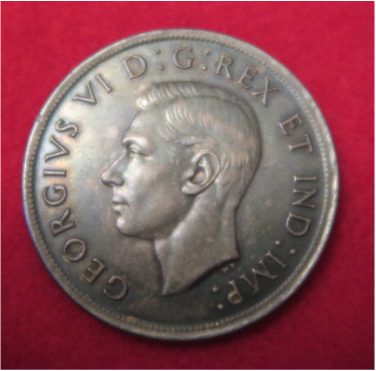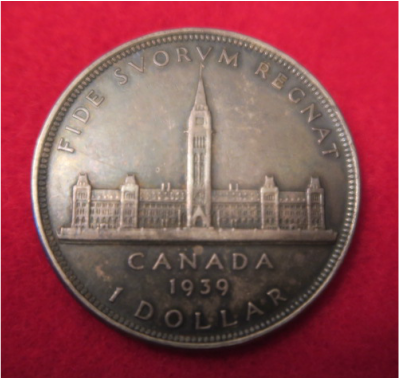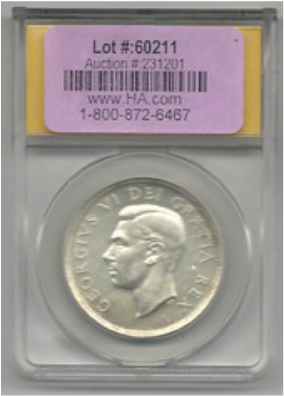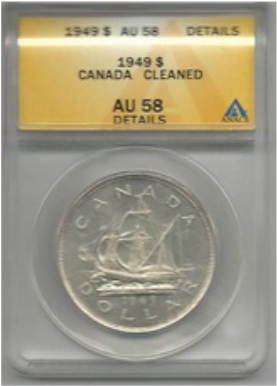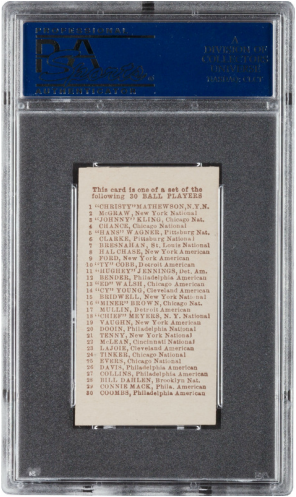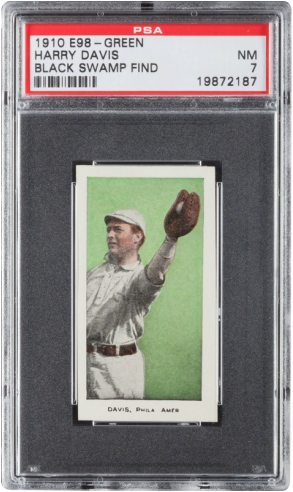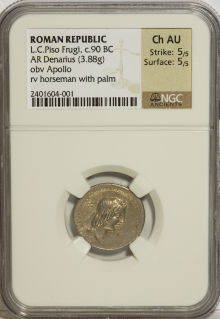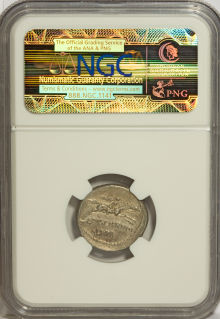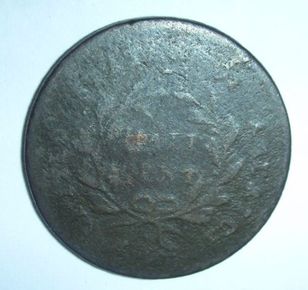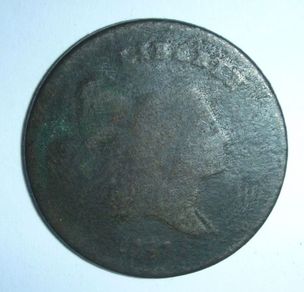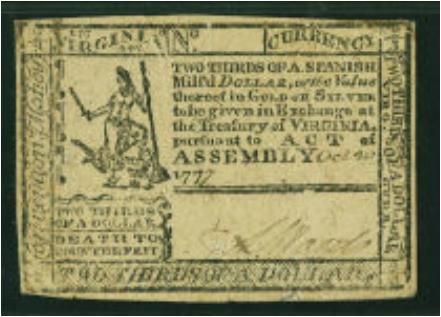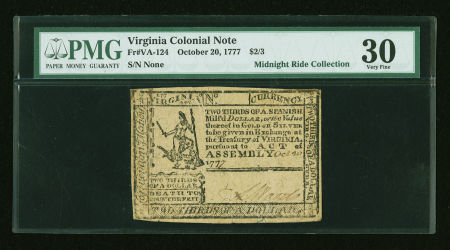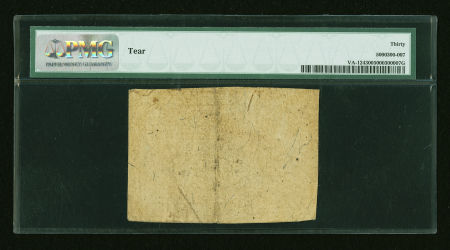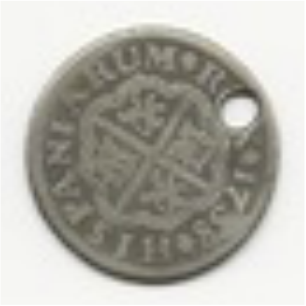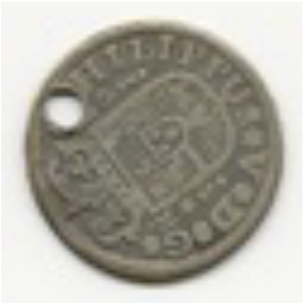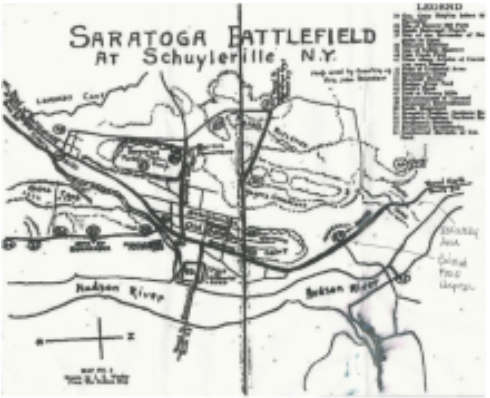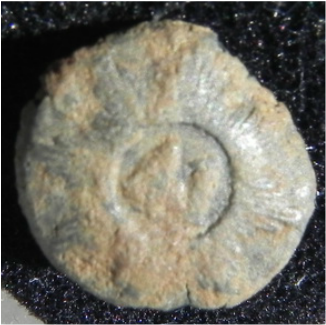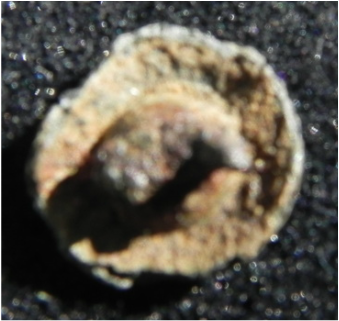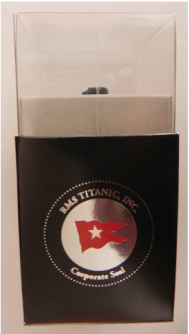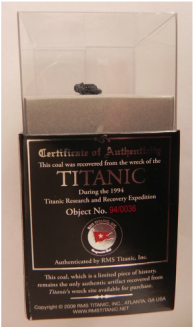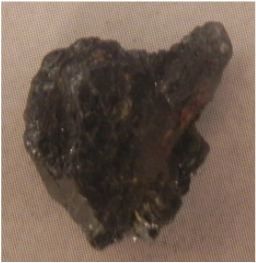Other Collectables
1950'S WILD BILL HICKOK GUN AND HOLSTER SET
This is the "Wild Bill Hickok" double gunslinger holster set with pop-up cap box cap guns by Leslie-Henry. The guns and holsters are the RARE Canadian version. The set was only sold in Canada. The holster is similar to the set made in America except a different color scheme. It is made of high quality dark brown & light brown leather. Another Canadian feature are the Robertson square slotted screws in the grips of the cap guns. It is loaded with lots of chrome studs and two diamond shaped conchos with red jewels on the holster pocket. It still retains 100% of the original felt backing indicating that it received very little play wear and comes complete with 16 of the original toy bullets. They can be worn in the traditional way or can be worn in the reverse-draw style made famous by Wild Bill Hickok. I purchased this set from the original owner.
1964 TOPPS BEATLES COLOR TRADING CARDS
There certainly wasn't a shortage of Beatles trading cards at the height of Beatlemania. 1964 Topps Beatles Color trading cards is one of seven sets made by the card maker that year. It's also one of the most insightful.
As the name suggests, 1964 Topps Beatles Color features full-color photos. This is a stark contrast from the company's multi-series Beatles Black and White set. Card fronts offer a lively look at the band, with a large color photo framed by a thin white border. Several of the images are very similar to those used in other Topps Beatles sets.
Card backs are also a big step up from the plain backs of the Black and White sets. They have an orange background with illustrations of all four of the Beatles running down the side. The top of the card reads, "Beatles Color Cards." Below that is a large box that has a question for one of the band members. Either John, Paul, Ringo or George answer the question.
The 1964 Topps Beatles Color checklist has 64 cards.
HOCKEY CARDS
(OF COURSE THERE'S HOCKEY CARDS. WE'RE CANADIAN, EH!)
(OF COURSE THERE'S HOCKEY CARDS. WE'RE CANADIAN, EH!)
1950-1959 Hockey Cards
After a down decade in the 1940s, hockey cards saw a resurgence during the 1950s. Parkhurst and Topps both released full-color products during this period. The early 1950s cards from Parkhurst, particularly 1951-52 Parkhurst, feature some of the most valuable and popular hockey cards in existence.
The top overall rookie options from the 1950s include Gordie Howe and Maurice “Rocket” Richard. Both rookie cards are found in 1951-52 Parkhurst. Other top rookies from the decade include Doug Harvey, Tim Horton, Dickie Moore, Jean Beliveau, Johnny Bower, Jacques Plante, Frank Mahovlich, and Bobby Hull.
Below is a representation of the decade in hockey cards. These examples capture each year of the best decade for collecting hockey cards. The collection also represents the top twelve goalies of the fifties. Also had to throw in a sample of "Mr. Hockey", Gordie Howe; any collection of over two cards has to include a Howe card.
1950-1959 GOALIE GREATS
1951-52 PARKHURST
TERRY SAWCHUK (PSA 2)
Ushering in the modern hockey card era, 1951-52 Parkhurst Hockey is one of the hobby’s all-time great sets. The first set in several years, the checklist is nearly all rookies, including Gordie Howe and Maurice Richard.Before O-Pee-Chee became a Canadian institution for hockey cards, there was Parkhurst. The Ontario-based card maker was the first to issue hockey sets after World War II. They began the modern era with their 1951-52 Parkhurst Hockey set.
The cards resemble strip cards of the prewar era, with crude photographs on heavy paper stock. Measuring just 1 3/4 inches by 2 1/2 inches, they are smaller than what we now know as a standard size. Most of the card shows a player picture that is either posed or uses a game-action shot. The player's name, team and a few stat lines appear in black ink below the picture. A line along the bottom in red ink identifies both the card number and the set. For the only time in the company's history, backs are blank.
1951-52 Parkhurst Hockey has 105 cards, with each of the six teams then in the NHL having its own subset. The only notable exception is card 52, which shows a famous picture of Bill Barilko after scoring the goal that won the previous year's Stanley Cup. The set has been counterfeited, so be careful in buying high-grade examples, especially among the big-name stars.
As the first hockey set printed in more than a decade, virtually every card in it is a "rookie" card. The two keys of the set are the rookie cards of two of hockey's most legendary players, Gordie Howe and Maurice "Rocket" Richard. Terry Sawchuk's first card is also heavily coveted. Other notable rookies include Alex Delvecchio, "Boom Boom" Geoffrion, Doug Harvey, Red Kelly, Ted Lindsay and Gerry McNeil.
The cards resemble strip cards of the prewar era, with crude photographs on heavy paper stock. Measuring just 1 3/4 inches by 2 1/2 inches, they are smaller than what we now know as a standard size. Most of the card shows a player picture that is either posed or uses a game-action shot. The player's name, team and a few stat lines appear in black ink below the picture. A line along the bottom in red ink identifies both the card number and the set. For the only time in the company's history, backs are blank.
1951-52 Parkhurst Hockey has 105 cards, with each of the six teams then in the NHL having its own subset. The only notable exception is card 52, which shows a famous picture of Bill Barilko after scoring the goal that won the previous year's Stanley Cup. The set has been counterfeited, so be careful in buying high-grade examples, especially among the big-name stars.
As the first hockey set printed in more than a decade, virtually every card in it is a "rookie" card. The two keys of the set are the rookie cards of two of hockey's most legendary players, Gordie Howe and Maurice "Rocket" Richard. Terry Sawchuk's first card is also heavily coveted. Other notable rookies include Alex Delvecchio, "Boom Boom" Geoffrion, Doug Harvey, Red Kelly, Ted Lindsay and Gerry McNeil.
- 1954-55 Parkhurst #100 Sawchuk stops Boom-boom in action Canadian Red Wings
1952-53 PARKHURST
CHUCK RAYNER (PSA 2)
1952-53 Parkhurst Hockey marked the company’s second attempt at making cards for the sport. Key cards include the Tim Horton rookie and non-rookies of superstars Gordie Howe and Maurice Richard.
For its second hockey set, Parkhurst made some changes. The 1952-53 Parkhurst Hockey cards were made slightly larger, the pictures were improved and information was added to the backs. The set size, however, remained constant at 105 cards.
There were two basic designs for 1952-53 Parkhurst Hockey card fronts. On-ice photos include their natural rink backgrounds, while posed player pictures feature a solid background of two colors divided by a diagonal line. A facsimile autograph appears on the picture and a white border surrounds the card. Backs are oriented horizontally. The card number appears inside a black box in the upper left corner. The player's name, position and team run across the top. Some vital stats and a biography in English follow, along with statistics from the previous season. A black box at the bottom contains a send-in offer for an album to hold the entire set.
1952-53 Parkhurst Hockey cards are just under 2-by-3 inches in size and contain players from all six teams then in the NHL. Although teammates are generally grouped together, only the Boston Bruins are given their own subset. While the action shots are similar to the design of the 1953-54 Parkhurst Hockey cards, they can be easily distinguished by their backs and smaller size.
Tim Horton is the biggest rookie in 1952-53 Parkhurst Hockey. Non-rookies of Gordie Howe and Maurice Richard are the other important key cards. Additional rookies include George Armstrong, Dickie Moore and Leo Boivin.
For its second hockey set, Parkhurst made some changes. The 1952-53 Parkhurst Hockey cards were made slightly larger, the pictures were improved and information was added to the backs. The set size, however, remained constant at 105 cards.
There were two basic designs for 1952-53 Parkhurst Hockey card fronts. On-ice photos include their natural rink backgrounds, while posed player pictures feature a solid background of two colors divided by a diagonal line. A facsimile autograph appears on the picture and a white border surrounds the card. Backs are oriented horizontally. The card number appears inside a black box in the upper left corner. The player's name, position and team run across the top. Some vital stats and a biography in English follow, along with statistics from the previous season. A black box at the bottom contains a send-in offer for an album to hold the entire set.
1952-53 Parkhurst Hockey cards are just under 2-by-3 inches in size and contain players from all six teams then in the NHL. Although teammates are generally grouped together, only the Boston Bruins are given their own subset. While the action shots are similar to the design of the 1953-54 Parkhurst Hockey cards, they can be easily distinguished by their backs and smaller size.
Tim Horton is the biggest rookie in 1952-53 Parkhurst Hockey. Non-rookies of Gordie Howe and Maurice Richard are the other important key cards. Additional rookies include George Armstrong, Dickie Moore and Leo Boivin.
1953-54 PARKHURST
HARRY LUMLEY (PSA 4)
1953-54 Parkhurst Hockey has a strong rookie roster that includes Jean Beliveau, Gump Worsley and Andy Bathgate. Some of the cards look like those from the previous set, but card backs and a larger size make them easily distinguished
1953-54 Parkhurst Hockey saw an increase in the physical size the cards but a smaller checklist. The pictures show better quality, more information, including bilingual text, were added to the backs. However, the design was the same as some of the cards from the previous year, which may be confusing to newer collectors.
1953-54 Parkhurst Hockey card fronts show a game-action player picture along with a facsimile autograph. The only other feature is the white border that surrounds the card. Backs are vertically oriented. A card number appears in the upper left, with the player's name, team and position running along the top, followed by his statistics from the previous season. The rest of the card is essentially divided into two parts. The first part leads off with vital stats and then gives a short biography of the player. A black box then details a send-in offer for an album that holds the complete set. The second part is a French translation of the first, including the offer in the black box.
There are 100 cards in the set, which are subdivided by team. One card features two players (Maurice Richard and Elmer Lach) that appear on their own cards elsewhere in the set, with their last names rendered in block letters. Cards are 2 1/2" by 3 5/8". While their similarity in design to some cards for the previous year can be a problem, the larger size and different back design make them easily distinguishable.
Notable rookies in the 1953-54 Parkhurst Hockey include Jean Beliveau, Gump Worsley, Al Arbour, Andy Bathgate and Harry Howell.
1954-55 PARKHURST
AL ROLLINS
With competition from Topps for the first time, 1954-55 Parkhurst Hockey features lots of colorful action images and a 100-card checklist. The key rookie in the set is legendary goaltender, Johnny Bower.
1954-55 Parkhurst Hockey had competition for the first time in its history. Topps issued a set of hockey cards that only featured players from the four American NHL teams. Unlike later years, the two companies did not split the teams, as Parkhurst focused on each squad in its own set. In addition, they spotlighted All-Star players, action photos and even featured variation backs.
The front of 1954-55 Parkhurst Hockey base cards show a game-action picture of a player along with a facsimile autograph. A red box in the upper-right corner contains a card number. The only other feature is the white border that surrounds the card. Backs feature two different versions. The regular back is vertically oriented and has the player's name, team and position running along the top, with a line of statistics from the previous season following that. The rest of the card is essentially divided into two parts. The first part leads off with vital stats and then gives a short biography of the player. A black box then details a send-in offer for an album that holds the complete set. The second part is a French translation of the first, including the offer in the black box. Cards 1 through 88 can also be found with one of three Lucky Premium backs that can be redeemed for gifts or a catalog. Though the premium backs are scarcer, there is no added value to either version.
Cards 89 through 100 in 1954-55 Parkhurst Hockey feature action shots, and have no autographs on the front. They also have a bilingual description of the action on the backs. All-Star players are given a solid white background on their cards, as well as a star in the upper left corner. A red star indicates that player was a first-team All-Star, and a blue star is for the second-team unit.
The main rookie in 1954-55 Parkhurst Hockey is Johnny Bower, whose name is incorrectly spelled on the back. Since this was never corrected, there is no added value to the error. In the action subset, a card of Jacques Plante is featured, which predates his official rookie card by one year.
1954-55 Parkhurst Hockey had competition for the first time in its history. Topps issued a set of hockey cards that only featured players from the four American NHL teams. Unlike later years, the two companies did not split the teams, as Parkhurst focused on each squad in its own set. In addition, they spotlighted All-Star players, action photos and even featured variation backs.
The front of 1954-55 Parkhurst Hockey base cards show a game-action picture of a player along with a facsimile autograph. A red box in the upper-right corner contains a card number. The only other feature is the white border that surrounds the card. Backs feature two different versions. The regular back is vertically oriented and has the player's name, team and position running along the top, with a line of statistics from the previous season following that. The rest of the card is essentially divided into two parts. The first part leads off with vital stats and then gives a short biography of the player. A black box then details a send-in offer for an album that holds the complete set. The second part is a French translation of the first, including the offer in the black box. Cards 1 through 88 can also be found with one of three Lucky Premium backs that can be redeemed for gifts or a catalog. Though the premium backs are scarcer, there is no added value to either version.
Cards 89 through 100 in 1954-55 Parkhurst Hockey feature action shots, and have no autographs on the front. They also have a bilingual description of the action on the backs. All-Star players are given a solid white background on their cards, as well as a star in the upper left corner. A red star indicates that player was a first-team All-Star, and a blue star is for the second-team unit.
The main rookie in 1954-55 Parkhurst Hockey is Johnny Bower, whose name is incorrectly spelled on the back. Since this was never corrected, there is no added value to the error. In the action subset, a card of Jacques Plante is featured, which predates his official rookie card by one year.
1954-55 TOPPS
JIM HENRY (PSA 7)
1954-55 Topps Hockey is the company’s first-ever set for the sport. Featuring players from the NHL’s four American teams, Gordie Howe and Terry Sawchuk are the most popular cards.
1954-55 Topps Hockey is the company's first set for the sport. The 60-card set features players from the four teams that played their home games in the United States at that time: the New York Rangers, Boston Bruins, Detroit Red Wings and Chicago Blackhawks. They are also the only set of hockey cards Topps printed in its larger pre-1957 size.
Card fronts feature an action shot of the player superimposed onto a solid white background. A team logo appears in an upper corner and a facsimile autograph runs across the player's image. Below the picture, a red strip has the player's name and position. A blue strip has the team name.
1954-55 Topps Hockey card backs are printed in red and blue ink on white card stock, matching the all-American content of the set. The card number is inside a puck-shaped circle in the upper left corner. A blue stripe along the top names the player's position and gives his team, while a red stripe under that has his full name. There is a blue hockey stick that isolates the player's vital stats over to the left side. A cartoon on the right side explains a generic hockey term. In the center of the card, a biography is printed in blue ink, and a line of stats from the previous season runs along the bottom.
Although it was the first Topps set, few cards actually show rookies because Parkhurst had been making their own hockey cards for several years. Despite that, the card showing Gordie Howe is the key card of the set. Terry Sawchuk's card is also very popular among collectors. Rookie cards in 1954-55 Topps Hockey include Camille Henry and Doug Mohns.
1955-56 PARKHURST
GERRY McNEIL ( psa 6.5)
GERRY McNEIL ( psa 3)
1955-56 Parkhurst Hockey is the sport’s only set of the year. Highlighting players from the Toronto Maple Leafs and Montreal Canadiens, Jacques Plante is the key rookie card
1955-56 Parkhurst Hockey was the sport's only card set for the year. That said, the set borrows a lot of the previous year's Topps design. They also introduced coach and manager cards as well, as cards showing two NHL venues. Finally, a parallel series of the cards was featured in boxes of cereal.
Fronts show player portraits superimposed against a solid white background. For most players, a team logo appears in one of the upper corners. A red strip below the player has their name, team and a card number. Card backs are bilingual and printed in red ink. A player's name and vital stats run along the top, and a red block with his statistics from the previous year runs across the middle. There are two biographies, with an English version above the block and a French translation below. A "Did You Know?" question and a send-in offer for an album take up the bottom.
The set was also distributed in boxes of Quaker Oats cereal. They are printed in green ink on the back and have a different bottom that identify them as Quaker Oats Hockey Cards. They are scarcer than the regular Parkhurst variations and can sell for multiple times their price.
The 1955-56 Parkhurst Hockey checklist was cut to 79 cards and only features players from the Toronto Maple Leafs and the Montreal Canadiens. Old-time Greats are included in the set, as are cards of the two team's coaches and venues. Cards 69 through 77 feature game action shots, with descriptions on the backs.
The key rookie in the set is Jacque Plante, even though he had already appeared on an action card the previous year. Oddly, his photo features a background, is vertically oriented and is missing a team logo.
1956-57 "MISSING LINK"
GUMP WORSLEY (PSA 9)
As part of the Upper Deck/Parkurst licence agreement during the 1993–94 hockey season, and under the Upper Deck/NHL licence to create and release three retrospective Parkhurst trading cards sets. The first set of cards was known unofficially as "The Missing Link" (a mock 1956-57 set). These cards were produced to complement the fact that Parkhurst did not make cards in 1956. All the cards in the set featured the Original Six teams. The cards featured stats from the 1955–56 season, and had a very retro feel to them, with a no-gloss finish and simple design. One of the most unusual cards in the set was a card featuring the likeness of Johnny Bower in a New York Rangers uniform, while other Parkhurst traditions were upheld, such as action cards.
1959-60 T0PPS HOCKEY GUMP WORSLEY IN ACTION # 54 NYR LEGEND
1957-58 PARKHURST
JACQUE PLANTE (PSA 3)
Focusing exclusively on the Toronto Maple Leafs and Montreal Canadiens, 1957-58 Parkhurst Hockey includes rookie cards of Frank Mahovlich and Henri Richard.
After a one-year layoff, supposedly to assess the hockey card market, the company returned with 1957-58 Parkhurst Hockey. The set was a scaled-back version of their previous effort, and a hint of the rest of the sets that would follow until the brand shut down in 1964.
1957-58 Parkhurst Hockey fronts resemble the design from the 1955-56 Parkhurst Hockey set. A player photo is superimposed against a solid white background. A red box at the bottom contains a card number, the player's name and position. For most cards, a team loo appears in a top corner. The backs were a little simpler than what Parkhurst's predecessors offered, though. Printed in blue ink, the player's name appears along the top. A couple of lines of vital stats and a biography in English follow, along with a French translation of the text. The player's stats from the previous season run along the bottom.
There are 50 cards in the complete 1957-58 Parkhurst Hockey set. It is broken up evenly between the Montreal Canadiens and Toronto Maple Leafs. Each team is numbered from 1 through 25, with both teams' coaches and five action cards for Montreal to even out the numbers.
The only major rookie in the set is Frank Mahovlich.
After a one-year layoff, supposedly to assess the hockey card market, the company returned with 1957-58 Parkhurst Hockey. The set was a scaled-back version of their previous effort, and a hint of the rest of the sets that would follow until the brand shut down in 1964.
1957-58 Parkhurst Hockey fronts resemble the design from the 1955-56 Parkhurst Hockey set. A player photo is superimposed against a solid white background. A red box at the bottom contains a card number, the player's name and position. For most cards, a team loo appears in a top corner. The backs were a little simpler than what Parkhurst's predecessors offered, though. Printed in blue ink, the player's name appears along the top. A couple of lines of vital stats and a biography in English follow, along with a French translation of the text. The player's stats from the previous season run along the bottom.
There are 50 cards in the complete 1957-58 Parkhurst Hockey set. It is broken up evenly between the Montreal Canadiens and Toronto Maple Leafs. Each team is numbered from 1 through 25, with both teams' coaches and five action cards for Montreal to even out the numbers.
The only major rookie in the set is Frank Mahovlich.
1957-58 TOPPS
DON SIMMONS (PSA 6)
1957-58 Topps Hockey is the company’s second set for the sport. They returned after a couple of years off, making several adjustments. Key rookies include Glenn Hall, Johnny Bucyk and Norm Ullman.
After issuing a premier hockey set in 1954-55, Topps took two years to monitor the hockey market before releasing a second set. Evidently, the research they did said that the cards would sell better if they also included French translations on their backs, which weren't present in the first set. Once again, 1957-58 Topps Hockey is limited only to the players on America teams. The cards were also reduced to the 2 1/2 x 3 1/2 standard Topps adopted in 1957.
1957-58 Topps Hockey card fronts have a player picture superimposed over a solid-colored background. There are three background colors: red, yellow and blue. A differently-colored solid block below the player contains his name, position and team. A team logo covers both the background and the block.
Card backs use red and blue ink that split the card into two parts. At the top left corner, a circle contains the card number. The player's name, team and position run across the top, followed by a line of stats from the previous season. The biographical information appears twice: in the blue area, it appears in English and the French translation is in the red area. To the right is a trivia question, with the English translation in blue ink and the French translation printed in red.
There are 66 cards in the 1957-58 Topps Hockey set, with the four teams grouped together numerically. The Boston Bruins show up on cards #1-18, Chicago Blackhawks take cards #19-33, Detroit Red Wings are cards #34-50 and New York Rangers are on cards 51-66.
Key rookies include Glenn Hall, Johnny Bucyk, Norm Ullman and Pierre Pilote.
After issuing a premier hockey set in 1954-55, Topps took two years to monitor the hockey market before releasing a second set. Evidently, the research they did said that the cards would sell better if they also included French translations on their backs, which weren't present in the first set. Once again, 1957-58 Topps Hockey is limited only to the players on America teams. The cards were also reduced to the 2 1/2 x 3 1/2 standard Topps adopted in 1957.
1957-58 Topps Hockey card fronts have a player picture superimposed over a solid-colored background. There are three background colors: red, yellow and blue. A differently-colored solid block below the player contains his name, position and team. A team logo covers both the background and the block.
Card backs use red and blue ink that split the card into two parts. At the top left corner, a circle contains the card number. The player's name, team and position run across the top, followed by a line of stats from the previous season. The biographical information appears twice: in the blue area, it appears in English and the French translation is in the red area. To the right is a trivia question, with the English translation in blue ink and the French translation printed in red.
There are 66 cards in the 1957-58 Topps Hockey set, with the four teams grouped together numerically. The Boston Bruins show up on cards #1-18, Chicago Blackhawks take cards #19-33, Detroit Red Wings are cards #34-50 and New York Rangers are on cards 51-66.
Key rookies include Glenn Hall, Johnny Bucyk, Norm Ullman and Pierre Pilote.
1958-59 TOPPS
GLENN HALL (PSA 6.5)
Led by the Bobby Hull rookie card, 1958-59 Topps Hockey is one the company’s most memorable sets. The 66-card checklist also includes rookies of Eddie Shack and Ken Wharram.
1958-59 Topps Hockey is the company's third hockey set. It was also the first time they made sets in consecutive years. As the second of seven straight years with 66-card sets with only some of the teams represented, the 1958-59 Topps Hockey stays securely within its formula. However, the stars really aligned to create one of the hobby's true legendary cards.
1958-59 Topps Hockey card fronts feature a player picture superimposed over a two-color background that is divided diagonally. The player's name appears above his head, and his team and position appear in a solid-colored stripe that extends below him. A white stripe surrounds the card. The backs are dominated by a green box. Above the box are a dark circle with the card number, the player's name, position and team. The box itself begins with a single line of statistics from the previous season. The rest of the box contains a player biography written into two parts: the left side has the paragraph in English and the French translation is on the right side. A cartoon at the bottom appears next to a caption about the featured player, which is also bilingual.
The set is limited to just the NHL's four American teams at the time: the Boston Bruins, Chicago Blackhawks, Detroit Red Wings and New York Rangers.
The set's cornerstone is the rookie card of Bobby Hull. Not only is the card the first appearance of a hockey legend, it's also the final card of the set. It's tough to locate without centering issues. All these factors combine to make it a truly valuable card. Other key rookies in 1958-59 Topps Hockey include Eddie Shack and Ken Wharram.
1958-59 Topps Hockey is the company's third hockey set. It was also the first time they made sets in consecutive years. As the second of seven straight years with 66-card sets with only some of the teams represented, the 1958-59 Topps Hockey stays securely within its formula. However, the stars really aligned to create one of the hobby's true legendary cards.
1958-59 Topps Hockey card fronts feature a player picture superimposed over a two-color background that is divided diagonally. The player's name appears above his head, and his team and position appear in a solid-colored stripe that extends below him. A white stripe surrounds the card. The backs are dominated by a green box. Above the box are a dark circle with the card number, the player's name, position and team. The box itself begins with a single line of statistics from the previous season. The rest of the box contains a player biography written into two parts: the left side has the paragraph in English and the French translation is on the right side. A cartoon at the bottom appears next to a caption about the featured player, which is also bilingual.
The set is limited to just the NHL's four American teams at the time: the Boston Bruins, Chicago Blackhawks, Detroit Red Wings and New York Rangers.
The set's cornerstone is the rookie card of Bobby Hull. Not only is the card the first appearance of a hockey legend, it's also the final card of the set. It's tough to locate without centering issues. All these factors combine to make it a truly valuable card. Other key rookies in 1958-59 Topps Hockey include Eddie Shack and Ken Wharram.
1958-59 PARKHURST
ED CHADWICK (PSA 8)
1958-59 Parkhurst Hockey has just 50 cards, all of which are limited to only the Montreal Canadiens and Toronto Maple Leafs. Ralph Backstrom is the most significant rookie card
Once again, 1958-59 Parkhurst Hockey offers up a 50-card set featuring the era's only two Canadian teams. However, this time, the company mixed up the design, using something new rather than borrowing from previous years.
That said, the card fronts still feature a player image superimposed against a solid white background. What is different is the way the rest of the information is displayed. There were two yellow blocks on the card. The block below the player features their name, which sits next to a team logo. Another block running along the side features a hockey stick, a card number inside a graphic puck and the player's position. 1958-59 Parkhurst Hockey backs feature the player's name running along the top, followed by two lines of vital stats and a lengthy biography in English. After that are a line of statistics from the previous season and a French translation of the English text.
Several action cards appear throughout the set, as well as the head coaches of both teams. The only major rookie in the set is Ralph Backstrom.
Once again, 1958-59 Parkhurst Hockey offers up a 50-card set featuring the era's only two Canadian teams. However, this time, the company mixed up the design, using something new rather than borrowing from previous years.
That said, the card fronts still feature a player image superimposed against a solid white background. What is different is the way the rest of the information is displayed. There were two yellow blocks on the card. The block below the player features their name, which sits next to a team logo. Another block running along the side features a hockey stick, a card number inside a graphic puck and the player's position. 1958-59 Parkhurst Hockey backs feature the player's name running along the top, followed by two lines of vital stats and a lengthy biography in English. After that are a line of statistics from the previous season and a French translation of the English text.
Several action cards appear throughout the set, as well as the head coaches of both teams. The only major rookie in the set is Ralph Backstrom.
1959-60 PARKHURST
JOHNNY BOWER (PSA 5)
1959-60 Parkhurst Hockey marked the third straight year the company went with a 50-card set featuring the members of only two teams. This time, they went with a tweaked design. The checklist even featured executives for the first time. The backs were typical, however, featuring a fairly lengthy paragraph about each player.
The player picture on the front is superimposed, as it is for all of Parkhurst's base sets after 1956. Instead of just solid white, a colored element that resembles a red, blue or yellow hockey stick was also placed in the background. A team logo appears in one of the upper corners. The player's name is printed underneath his image. A circle with the card number is on the opposite side of the logo and the player's position runs under that. Backs follow the same format as the two previous sets but are in two colors. The player's name appears at the top in red ink. Two lines of vital stats and the previous season's record follow in black ink, along with a biography in English. A send-in offer appears in red, followed by a French translation of the biography in black. A French version of the send-in offer appears in red ink at the bottom.
Only players from the Montreal Canadiens and Toronto Maple Leafs are included in 1959-60 Parkhurst Hockey. The set has three action cards. Coaches from both teams and several executives are shown as well. Among the top-level men are Hall of Fame member Punch Imlach.
Imlach's card is considered to be a rookie card. The other key rookie in the set is Carl Brewer.
The player picture on the front is superimposed, as it is for all of Parkhurst's base sets after 1956. Instead of just solid white, a colored element that resembles a red, blue or yellow hockey stick was also placed in the background. A team logo appears in one of the upper corners. The player's name is printed underneath his image. A circle with the card number is on the opposite side of the logo and the player's position runs under that. Backs follow the same format as the two previous sets but are in two colors. The player's name appears at the top in red ink. Two lines of vital stats and the previous season's record follow in black ink, along with a biography in English. A send-in offer appears in red, followed by a French translation of the biography in black. A French version of the send-in offer appears in red ink at the bottom.
Only players from the Montreal Canadiens and Toronto Maple Leafs are included in 1959-60 Parkhurst Hockey. The set has three action cards. Coaches from both teams and several executives are shown as well. Among the top-level men are Hall of Fame member Punch Imlach.
Imlach's card is considered to be a rookie card. The other key rookie in the set is Carl Brewer.
1959-60 TOPPS
GUMP WORSLEY (PSA 7)
1959-60 Topps Hockey highlights just the teams from the United States. Although there are no major rookies, the 66-card set does have Gordie Howe, Bobby Hull and other stars.
1959-60 Topps Hockey returned to a format that included only some of the teams in the NHL. This time, however, the first specialty cards appear.
Card fronts feature a player picture superimposed over a two-color background. The background has a white block surrounded by one that is a different solid color. A team logo appears in an upper corner, while the player's name and position appear below him. A white border surrounds the card. 1959-60 Topps Hockey backs feature a red border surrounding a box that is slightly tilted. For the first time in a Topps set, the number is not inside a puck-shaped circle. It appears by itself in the upper left corner. Inside the box, the player's name, position and team stretch along the top, with a single line of the previous year's stats below. A player biography follows in black ink, with a French translation appearing below that in red ink. A general trivia question appears in the red area below the box. It is also bilingual and is flanked by a cartoon.
Once again, 1959-60 Topps Hockey is limited to just the four teams that played their home games inside the United States: the Boston Bruins, Chicago Blackhawks, Detroit Red Wings and New York Rangers. Scattered throughout the set are six action cards, a natural subset for hockey. The action cards feature a caption that is meant to be humorous and are only printed in English.
1959-60 Topps Hockey has no major rookie cards.
1959-60 Topps Hockey returned to a format that included only some of the teams in the NHL. This time, however, the first specialty cards appear.
Card fronts feature a player picture superimposed over a two-color background. The background has a white block surrounded by one that is a different solid color. A team logo appears in an upper corner, while the player's name and position appear below him. A white border surrounds the card. 1959-60 Topps Hockey backs feature a red border surrounding a box that is slightly tilted. For the first time in a Topps set, the number is not inside a puck-shaped circle. It appears by itself in the upper left corner. Inside the box, the player's name, position and team stretch along the top, with a single line of the previous year's stats below. A player biography follows in black ink, with a French translation appearing below that in red ink. A general trivia question appears in the red area below the box. It is also bilingual and is flanked by a cartoon.
Once again, 1959-60 Topps Hockey is limited to just the four teams that played their home games inside the United States: the Boston Bruins, Chicago Blackhawks, Detroit Red Wings and New York Rangers. Scattered throughout the set are six action cards, a natural subset for hockey. The action cards feature a caption that is meant to be humorous and are only printed in English.
1959-60 Topps Hockey has no major rookie cards.
1960-61 TOPPS
GLENN HALL (autograph)
I have to round off the greatest decade in hockey with the greatest goalie
GLENN HALL SIGNED BOOK
GLENN HALL SIGNED 8" X 10"
1961-62 PARKHURST
GORDIE HOWE (PSA3)
No hockey card collection would be complete without a Gordie Howe card. This is a Parkhurst 1961 card rated psa 3. The autograph below is from within a book which was gifted to me as a participant in a Gordie Howe function I attended.
MARIS AND MANTLE
CLEVELAND INDIANS 1957
Vintage 1957 Cleveland Indians Yearbook
- 1957 Jimmy Dudley Cleveland Indians Picture Scorebook
1958 Topps #47 Roger Maris Rookie Reprint
1957 Cleveland Indians Team Signed Baseball with Rookie Roger Maris. While the Tribe's 1957 edition could only muster an unmemorable sixth place finish in the A.L., this season will always be remembered as the beginning and the end for two young Indians. First, it was Roger Maris's rookie year. Rog would go on to win three World Series, two league MVP's, a Gold Glove, and, most significantly, break Babe Ruth's single season home run record. Second, it was season when ace hurler Herb Score had his career destroyed at age twenty-three by a line drive which hit him in the face.
This OAL (Harridge) ball holds thirty-one signatures including Maris. "1957" is written red ballpoint. Autographs range from 6/10 to 8/10 on average and include: Caffie, Smith, Williams, Score, Naragon, Wertz, Garcia, Harrell, Lemon, Altobelli, Tomanek, Alexander, Strickland, Maris (7.5/10), Woodling, Stanky, Avila, Pitula, Daley, Hegan, Nixon, Wynn, Narleski, Kress and seven more.
This OAL (Harridge) ball holds thirty-one signatures including Maris. "1957" is written red ballpoint. Autographs range from 6/10 to 8/10 on average and include: Caffie, Smith, Williams, Score, Naragon, Wertz, Garcia, Harrell, Lemon, Altobelli, Tomanek, Alexander, Strickland, Maris (7.5/10), Woodling, Stanky, Avila, Pitula, Daley, Hegan, Nixon, Wynn, Narleski, Kress and seven more.
- Indians 1957 Team Picture
1952 NEW YORK YANKEES
1952 Yankees Sketch Book, Rookie Mickey Mantle, MVP Yogi Berra
1953 Bowman #59 Mickey Mantle Reprint
1953 Topps #82 Mickey Mantle Reprint
1952 New York Yankees Team Signed Baseball. This was the season that Mickey Mantle became Mickey Mantle. Having emerged from the shadow of Joe DiMaggio and an unsteady rookie campaign, the twenty-year old Oklahoman added the first bold text of American League supremacy to his stat line--a thundering .924 OPS. He rather precociously claims sweet spot honors with fellow future Cooperstonian Phil Rizzuto, as twenty-three teammates fill the adjacent panels. These signatures include Berra, Mize, McDougald, Houk, Bauer, Raschi, Lopat and more. Mantle is 7/10, while the average rates a point or two below. OAL (Harridge). Full LOA from PSA/DNA.
WORLD WAR GERMAN II MILITARIA
WWII GERMAN ARMY HELMET
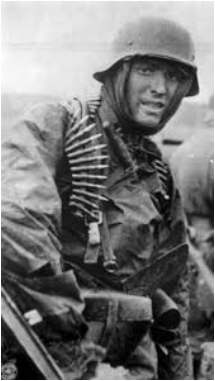
The first "modern" steel helmets were introduced by the French army in early 1915 and were shortly followed by the British army later that year. With plans on the drawing board, experimental helmets in the field, ("Gaede" helmet), and some captured French and British helmets the German army began tests for their own steel helmet at the Kummersdorf Proving Grounds in November, and in the field in December 1915. An acceptable pattern was developed and approved and production began at Eisen-und Hüttenwerke, AG Thale/Harz, in the spring of 1916. These first modern M16 helmets evolved into the M18 helmets by the end of WWI. The M16 and M18 helmets remained in usage through-out the Weimar Reichswehr era and on into the early years of the Third Reich until the development of the smaller, lighter M35 style helmet in June 1935. In an effort to reduce construction time and labor costs, minor modifications were introduced in March 1940 resulting in the M40 helmet. Further construction modifications were undertaken in August 1942 resulting in the M42 helmet.
This example is a war horse of a helmet, that's seen a lot of action. The helmet is a model M35 produced by the SE factory and came out of a yard sale in England so it was pretty much fresh to the market when I purchased it. Untouched and unmolested helmet with the liner and chinstrap in great condition. Large size 68. It started out as a DD and received a field repaint. Likely would have been issued in 37 or 38 and would have been worn at the time of the invasion of Poland. The liner has not been changed since it was put in the helmet. The helmet had its original parade green finish which when wet was very shiny and the tri-color decal was an ideal aiming site for the enemy thus the order to over paint in a non reflective grey and either remove the decal or paint over it. The order was issued in 1940 so the helmet has seen lots of action. The condition is what you would hope to see from a heavily used combat helmet.
(Reference: "Two Volume Set - German Helmets of the Second World War" by Branislav Radovic; "WW II German Helmets, Germany's Combat Helmets 1933 - 1945: A Modern Study" by Ken Niewiarowicz; "The History of the German Steel Helmet, 1916 -1945" by Ludwig Baer; "Combat Helmets Of The Third Reich
A Study in Photographs" by Thomas Kibler; "SS-Steel: (Expanded Ed.) Parade & Combat Helmets of Germany's Third Reich Elite"by Kelly Hicks; "SS Helmets: The History, Use and Decoration of the Helmets of the Black Corps" by Michael D. Beaver)
WWII GERMAN ARMY COMBAT BELT AND BUCKLE
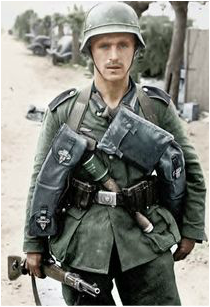
This buckle design consists of two ropes forming a circle. One inside the other. The German Army eagle is placed in the center of the circle and is standing over a swastika. The words "Gott Mit Uns" are scrolled just above the eagle. The back of the buckle has two spikes which help secure the buckle to the belt. Some of the buckles are manufacturer marked in the back section. Often times a year of manufacture is also found there. This buckle has no apparent markings. The pressed steel Army buckle is sound, retaining approximately 75% of its field grey combat finish. There is minor wear to the highlights. The brown leather tab is marked by the manufacturer, Bruder Schneider A.G. Wien, and dated 1940. The reverse features a "u" shaped bar with flat feet brazed to the buckle for a catch. The black leather belt is moderately worn, but still displays well. It is stamped, at the buckle end, with the size of 100 (cm approximately 38", would fit up to a size 34 waist). The hook retains approximately 85% of its field grey finish. Overall sound.
(Reference: German Belt Buckles 1845 - 1945 by Peter Nash)
GERMAN OFFICER'S DAGGER WITH PORTEPEE
"PURCHASED FROM THE SON OF A 3RD DIVISION VETERAN"
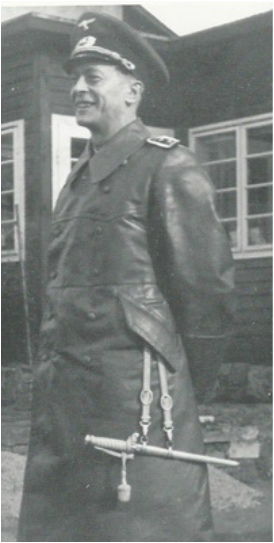
The Army dagger was initially issued on May 4th, 1935 and was designed by Paul Casburg, a well known designer of daggers during the Third Reich. The initial model submitted to the Fuhrer for approval had a white handle. The dagger was authorized to be worn by all officers up to the rank of Field Marshall. The last year of production was 1944. After this date officers were no longer allowed to wear the dagger.
There were no distinguishing marks in the dagger between the low level and high ranking officers.
HANDLES
Once the production was in full swing the handles were produced in three different colors; white, yellow and orange. Most of the handles were manufactured of celluloid, which is an early version of plastic.
The variations of handle colors were a matter of preference by the soldier. He could go to the local company store and order from a catalog. The handle consisted of a swirl ribbing pattern. No wire wrapping.
The pommel of the Army dagger consisted of a metal piece resembling the shape of a crown. Oakleaves were placed all around the pommel. The very top was plain. Not decorated and of dome shape.
Beyond the color of the handle, a soldier was able to customize his dagger by doing things such as having his initials engraved in different places of the dagger. The biggest determining factor was how much money tyhe person was willing to spend.
SCABBARD
The scabbard of the German Army officer's dagger was made of metal. The front and back had a tight pebbled design. The sides consisted of a smooth surface. A set of two loops were attached. One was located at about mid-point and the other was closer to the neck. A metal suspension ring was attached to each loop.
HANGERS
The Army dagger hanger consisted of two cloth sections attached to a single metal buckle. Each section of cloth ends with a clip, which attach to the suspension rings in the scabbard. An oval buckle is placed in each arm. This feature allows the length of the arm to be adjusted. The front of each arm is covered with silver stranded cloth. The back is usually a colored chamois. The hanger attached to a bracket sewn to the inside of the dress jacket.
As with many other components for the dagger, there were different quality levels of hangers. Some had the buckles more lavashly decorated. The choice was left up to the soldier based on his ability to pay for the upgrades.
BLADE
The blade of the dagger was of plain design. It was a double edge stilleto type, ending in a very fine point. Unlike other daggers, the Army blade did not have an organizational motto. Unless it was decorated with an engraved motiff, the only marking found was the manufacturer's logo.
CROSSGUARD EAGLE
The eagle placed in the crossguard of the German Army dagger had several variations. The different shapes were a result of having multiple companies produce the dagger. Some of the varying characteristics included the shape of the head, the wings, the chest, the talons, etc.
This example is an Army Officer's Dagger with Porteepee by E.&F. Horster. This is a direct Veteran purchase by the dealer who in turn sold it to me. It is a classic Horster throughout, with the pommel and crossguard retaining the sword with the H logo design. It is a late-period piece, having a mixture of early and late parts. The silver plating to the pommel and guard is gone to time, which is typical for Horster plating. The pommel is the 14-leaf Type E that displays wear to the edge and the very top of the pommel. The grip is a Type B-gp with the thicker segments.The color is a light orange. There is highlight wear, in addition to a chip to the lower obverse side. The chip is intact and can be repaired, but I will leave it alone. The crossguard is the last style E.& F. Horster utilized, having smooth surfaces and crisp edges. Like the pommel, the silver plating is completely gone. Mounted to the hilt, in the correct Army tie, is an original to the piece 43 cms portepee, exhibiting much wear/age, especially at the fold-over point and other parts of the cord. The blade has a semi-shiny look. The edges have been sharpened, while the tip shows a wave. There are smudges to both sides and light scratches and the normal in and out runner marks. The blade grades good. The reverse ricasso is etched with the company logo consisting of double oval circles trapping the name and location, E.&F. Horster/Soligen. Inside is the large H with the smaller HS having the piercing sword. The small, thin, leather washer is intact, grading strong excellent. The scabbard retains 100% of the silver plating, while exhibiting numerous light carrying taps to the lower 5" of the shell nearest to the tip. The thick scabbard throat is retained by two domehead side screws that appear to be untrurned. The bands are hand enhanced. Overall very good. Comes with a letter from Bill Shea from "The Ruptured Duck."
(Reference: " Exploring The Dress Daggers of the German Arm by Thomas Wittmann")
There were no distinguishing marks in the dagger between the low level and high ranking officers.
HANDLES
Once the production was in full swing the handles were produced in three different colors; white, yellow and orange. Most of the handles were manufactured of celluloid, which is an early version of plastic.
The variations of handle colors were a matter of preference by the soldier. He could go to the local company store and order from a catalog. The handle consisted of a swirl ribbing pattern. No wire wrapping.
The pommel of the Army dagger consisted of a metal piece resembling the shape of a crown. Oakleaves were placed all around the pommel. The very top was plain. Not decorated and of dome shape.
Beyond the color of the handle, a soldier was able to customize his dagger by doing things such as having his initials engraved in different places of the dagger. The biggest determining factor was how much money tyhe person was willing to spend.
SCABBARD
The scabbard of the German Army officer's dagger was made of metal. The front and back had a tight pebbled design. The sides consisted of a smooth surface. A set of two loops were attached. One was located at about mid-point and the other was closer to the neck. A metal suspension ring was attached to each loop.
HANGERS
The Army dagger hanger consisted of two cloth sections attached to a single metal buckle. Each section of cloth ends with a clip, which attach to the suspension rings in the scabbard. An oval buckle is placed in each arm. This feature allows the length of the arm to be adjusted. The front of each arm is covered with silver stranded cloth. The back is usually a colored chamois. The hanger attached to a bracket sewn to the inside of the dress jacket.
As with many other components for the dagger, there were different quality levels of hangers. Some had the buckles more lavashly decorated. The choice was left up to the soldier based on his ability to pay for the upgrades.
BLADE
The blade of the dagger was of plain design. It was a double edge stilleto type, ending in a very fine point. Unlike other daggers, the Army blade did not have an organizational motto. Unless it was decorated with an engraved motiff, the only marking found was the manufacturer's logo.
CROSSGUARD EAGLE
The eagle placed in the crossguard of the German Army dagger had several variations. The different shapes were a result of having multiple companies produce the dagger. Some of the varying characteristics included the shape of the head, the wings, the chest, the talons, etc.
This example is an Army Officer's Dagger with Porteepee by E.&F. Horster. This is a direct Veteran purchase by the dealer who in turn sold it to me. It is a classic Horster throughout, with the pommel and crossguard retaining the sword with the H logo design. It is a late-period piece, having a mixture of early and late parts. The silver plating to the pommel and guard is gone to time, which is typical for Horster plating. The pommel is the 14-leaf Type E that displays wear to the edge and the very top of the pommel. The grip is a Type B-gp with the thicker segments.The color is a light orange. There is highlight wear, in addition to a chip to the lower obverse side. The chip is intact and can be repaired, but I will leave it alone. The crossguard is the last style E.& F. Horster utilized, having smooth surfaces and crisp edges. Like the pommel, the silver plating is completely gone. Mounted to the hilt, in the correct Army tie, is an original to the piece 43 cms portepee, exhibiting much wear/age, especially at the fold-over point and other parts of the cord. The blade has a semi-shiny look. The edges have been sharpened, while the tip shows a wave. There are smudges to both sides and light scratches and the normal in and out runner marks. The blade grades good. The reverse ricasso is etched with the company logo consisting of double oval circles trapping the name and location, E.&F. Horster/Soligen. Inside is the large H with the smaller HS having the piercing sword. The small, thin, leather washer is intact, grading strong excellent. The scabbard retains 100% of the silver plating, while exhibiting numerous light carrying taps to the lower 5" of the shell nearest to the tip. The thick scabbard throat is retained by two domehead side screws that appear to be untrurned. The bands are hand enhanced. Overall very good. Comes with a letter from Bill Shea from "The Ruptured Duck."
(Reference: " Exploring The Dress Daggers of the German Arm by Thomas Wittmann")
EARLY WORLD WAR II M1 HELMET
M1 HELMET I was looking for a complete early M1 helmet when I came across this interesting shell. Over time I searched for and found appropriate components. The shell has the early fixed bails and front seam. What is most interesting with this helmet is an arch on the front quarter of the helmet. Interestingly, the arch is not front center but off center. There's also blue paint encircling the bottom of the helmet. More interesting is the ghost of paint (maybe tape) that runs the perimeter of the helmet. Inside the helmet is the ghost impression of a second arch that no doubt transferred from a similarly painted liner. The liner, unfortunately is long gone so I added the navy liner pictured above and discussed below. The helmet is in good condition with little to no rust present and the fixed bails still fully attached. I performed a lead test on the paint and the swab came out solid black indicating the paint is lead based which would date the helmet.
LINER The US Navy fought a global war during WW2, from the balmy South Seas to the howling gales of the North Atlantic. Some sailors, especially corpsmen and Seabees, were issued their own M-1 helmets and liners, which they often painted with their rate and initials. This US Navy WW2 PETTY OFFICER SECOND CLASS PAINTED M-1 HELMET LINER is in good condition, with three 1/2" cracks in the front right lip, one 1/2" crack in the front left lip, some scuffing and surface chipping at the top crown, some scattered scratching and spot soiling around the exterior, a few small nicks in the underside of the left lip, some spots of pinkish paint staining at each interior ear, some dark soiling to the suspension and sweatband, some tearing to the front right suspension, moderate tearing to the front right sweatband, and with some scattered age wear evident (most pictured). Otherwise, the liner is in fine shape, with no other damage to the tough fiberglass construction, which retains approximately 85% of the original textured OD exterior finish. Most interestingly, it boasts the classic two rockers rate of a US Navy Petty Officer Second Class hand painted in black at the front crown, over some previously marked letters, and above the initials "SAH" stenciled in black. The liner sports a khaki HBT interior suspension, features the original khaki HBT, brown leather, and green finished metal "clip" sweatband, and bears darkened brass "A" washers around the inside. It carries the traditional "little man in a circle" maker's logo of International Molded Plastics (IMP) at the interior top crown, and is a fine example of a rare, original US Navy WW2 PETTY OFFICER SECOND CLASS PAINTED M-1 HELMET LINER.
LINER CHINSTRAP This is an early period chinstrap that came off an original helmet. Hard to find early green buckle and the right chinstrap for the liner.
SHELL CHINSTRAP This is an original matching set of helmet chinstraps consisting of brass hardware and OD#3 (khaki) webbing. They were recovered from an early-war fixed loop McCord manufactured helmet. The grimy webbing is frayed near the brass end keeper and the j-hook is slightly bent. The straps were not cut and only their stitching had been undone so they are the original length. I sewed them onto the bails.
LINER The US Navy fought a global war during WW2, from the balmy South Seas to the howling gales of the North Atlantic. Some sailors, especially corpsmen and Seabees, were issued their own M-1 helmets and liners, which they often painted with their rate and initials. This US Navy WW2 PETTY OFFICER SECOND CLASS PAINTED M-1 HELMET LINER is in good condition, with three 1/2" cracks in the front right lip, one 1/2" crack in the front left lip, some scuffing and surface chipping at the top crown, some scattered scratching and spot soiling around the exterior, a few small nicks in the underside of the left lip, some spots of pinkish paint staining at each interior ear, some dark soiling to the suspension and sweatband, some tearing to the front right suspension, moderate tearing to the front right sweatband, and with some scattered age wear evident (most pictured). Otherwise, the liner is in fine shape, with no other damage to the tough fiberglass construction, which retains approximately 85% of the original textured OD exterior finish. Most interestingly, it boasts the classic two rockers rate of a US Navy Petty Officer Second Class hand painted in black at the front crown, over some previously marked letters, and above the initials "SAH" stenciled in black. The liner sports a khaki HBT interior suspension, features the original khaki HBT, brown leather, and green finished metal "clip" sweatband, and bears darkened brass "A" washers around the inside. It carries the traditional "little man in a circle" maker's logo of International Molded Plastics (IMP) at the interior top crown, and is a fine example of a rare, original US Navy WW2 PETTY OFFICER SECOND CLASS PAINTED M-1 HELMET LINER.
LINER CHINSTRAP This is an early period chinstrap that came off an original helmet. Hard to find early green buckle and the right chinstrap for the liner.
SHELL CHINSTRAP This is an original matching set of helmet chinstraps consisting of brass hardware and OD#3 (khaki) webbing. They were recovered from an early-war fixed loop McCord manufactured helmet. The grimy webbing is frayed near the brass end keeper and the j-hook is slightly bent. The straps were not cut and only their stitching had been undone so they are the original length. I sewed them onto the bails.
M1 HELMET CHINSTRAP
SHELL CHINSTRAP This is an original matching set of helmet chinstraps consisting of brass hardware and OD#3 (khaki) webbing. They were recovered from an early-war fixed loop manufactured helmet. The webbing is a bit frayed and the straps were cut to remove them from the helmet.
CANADIAN WORLD WAR 2 HELMET
Original,Complete WWII Canadian MkI Flashed Combat Helmet-G.S.W.1942-Large 7 1/4.
Shell has most the original khaki/medium green colour paint inside and out. Has some paint loss with a bit of oxidization to the very top, both inside and out. Full of knicks, blemishes and scratches. Slight distortion of the rim at the very back. Remnants of some original thick textured camo paint applied around the outside rim. Has what appears to be a 5th Canadian Armoured Division burgundy rectangular flash applied to the front along with a decal of the number 1. Flash looks original, not sure of the decal. Shell is stamped- G.S.W. A P 1942
Original liner is in very good condition, complete with all rubber bumpers, drawstring, top cruciform pad and the correct large head retaining screw and nut. Liner material itself is slightly dry with very minor cracking present. Liner is maker marked and dated 1942. Size 7 1/4.
Chinstrap is in good used condition, also original to the helmet. Has been folded over the rim for some of its life so it is a little distorted.
Overall a scarce, complete, as found Canadian Combat Helmet.
CANADIAN FIELD DRESSING DATED 1940 AND TWO TONE CAMOFLAGE NET MADE FOR CANADIAN HELMET
FOSSILS
FOSSILED FISH
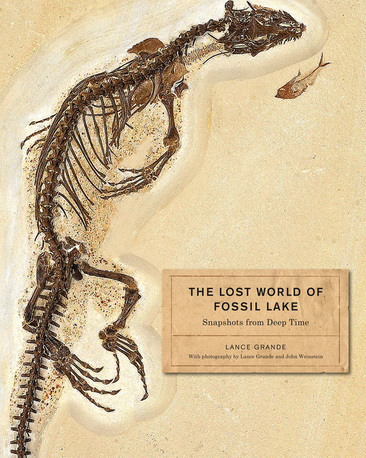
This 40 - 50 million year old fossilized fish was found in the Wyoming U.S., area called Fossil Lake which is part of the Green River Formation. This is the worlds largest fossil fish find. The ancient lake was located near erupting volcanoes. These fossil fish come in many different types including knightia (herring), diplomystus, phareodus, mioplosus (perch), and priscacara. These fish are found in limestone.The landscape of southwestern Wyoming around the ghost town of Fossil is beautiful but harsh; a dry, high mountain desert with cool nights and long, cold winters inhabited by a sparse mountain desert community. But during the early Eocene, more than fifty million years ago, it was a subtropical lake, surrounded by volcanoes and forests and teeming with life. Buried within the sun-baked limestone is spectacular evidence of the lush vegetation and plentiful fauna of the ancient past, a transitional ecosystem giving us clues to how North America recovered from a great extinction event that wiped out dinosaurs and the majority of all species on the planet. Paleontologists have been conducting excavations at Fossil Butte for more than 150 years, The slab above came from the Green River Formation. The slab measures 6" x 6" x 7/8" and exhibits fossilized fish on both sides.
MEGALODON SHARK TOOTH
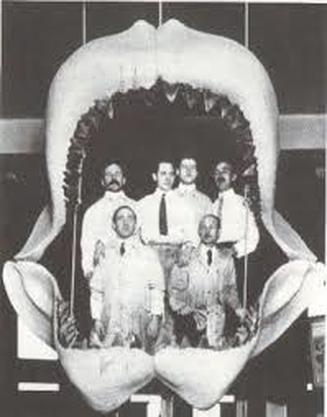
This Carcharodin Megalodon was one of the world's greatest predators. During the Miocene times, this monster ruled the sea. This giant shark reached lengths in excess of sixty feet. An adult shark had several hundred teeth the size of a man's hand. Compared to the power of a large great white, the megalodon could enforce a bite that could crush a small car. Today we do not have to contend with such a fearsome creature. Luckily, however, we can enjoy collecting the remnants of these once-giant sharks. This is an upper Megalodon Carcharodon shark tooth found in a river near Beauford South Carolina. The tooth measures 5 3/4 inches by 4 1/2 inches wide and weighs in at nearly 1 pound. If the small amount of root damage where to be repaired it would measure 6 inches. This tooth was found under 3 feet of hard mud and was only washed off with a garden hose. There was still a little mud in the root cracks when I purchased it and has no restoration of any kind. Very nice 17 million year old fossil.
MEGALODON SHARK TOOTH
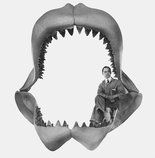 MEGALODON REPLICA
MEGALODON REPLICA
This Megalodon tooth was from an ancient shark that may have been 40 feet (12 m) long or even more. (There are a few scientists who estimate that it could have been up to 50 or 100 feet long) This is at least two or three times as long as the Great White Shark but this is only an estimate made from many fossilized teeth and a few fossilized vertebrae that have been found. These giant teeth are the size of a person's hand! No other parts of this ancient shark have been found, so we can only guess what it looked like. Since Megalodon's teeth are very similar to the teeth of the Great White Shark (but bigger and thicker), it is thought that Megalodon may have looked like a huge, streamlined version of the Great White Shark. This is another example of a Megalodon tooth and measures about 6 inches at the longest corner.
MAKO SHARK TOOTH
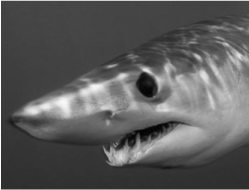
Mako Sharks (Isurus Histalis) have been called "the peregrine falcons of the shark world." Their torpedo-like bodies and biochemistry make these the fastest of all sharks. Many attain speeds up to 22 miles per hour. One shortfin mako was even clocked swimming at 43 miles per hour. To put that into perspective, the fastest known humans run at around 18 mph.These sharks live in tropical and temperate offshore waters, most often from the surface to depths of 490 feet. They are found worldwide, most commonly in the western Atlantic from Argentina up to the Gulf of Mexico. This Mako tooth was found in fossil deposits along the South Carolina coast. The tooth measures about 2" x 1 1/4"is approximately 17,000,000 million years old.
DINOSAUR VERTEBRA
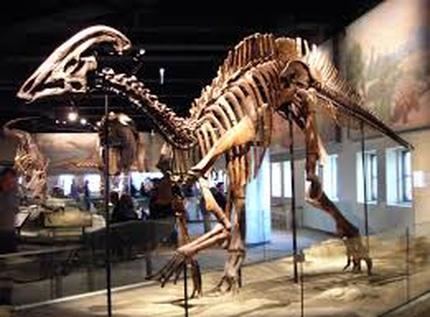 HADROSAUR
HADROSAUR
Hadrosaurids, popularly known as duck-billed dinosaurs, comprise a highly diverse natural group (a clade) of plant-eating dinosaurs that evolved in the Late Cretaceous period (approximately 65 – 100 million years ago). Hadrosaurids have the distinction of being the best-known dinosaur group in terms of the completeness of their fossil record. Hadrosaurids are known from hundreds of nearly complete fossil skeletons, including juvenile and embryonic skeletons, and thousands of isolated bones and teeth. Skin impressions and other soft tissue traces (including the original soft tissues themselves), footprints and trackways, and stomach contents have been described. Intact eggs and nests, as well as eggshells, are also relatively well known. Because of this incredible record, hadrosaurids have contributed significantly to the overall understanding of dinosaur biology.
This fossil is a caudal (tail) vertebra from a duck-billed dinosaur.(hadrosaur). The neural arch portion is missing, so it is just the centrum or body of the vertebra. This specimen measures about 5 1/2" x 4 1/2".
This fossil is a caudal (tail) vertebra from a duck-billed dinosaur.(hadrosaur). The neural arch portion is missing, so it is just the centrum or body of the vertebra. This specimen measures about 5 1/2" x 4 1/2".
EL CAZADOR COINS
The El Cazador (meaning The Hunter in English) was a Spanish brig that sank in the Gulf of Mexico in 1784. Referred to as "The Shipwreck that Changed the World", America could literally be a split nation with Spain owning part of it had this brig arrived safely. On October 20, 1783 it was sent by Charles III of Spain on a mission to bring much-needed hard currency to the Spanish colony of Louisiana. The ship sailed to Veracruz, Mexico, where it was loaded with approximately 450,000 Spanish reales. On January 11, 1784, it sailed for New Orleans carrying thousands of silver coins intended to stimulate the Spanish holdings in the New World. After a month at sea, the El Cazador sank, taking with it, the precious cargo and hundreds of lives, This was a disastrous blow for Spain. It could not produce enough silver coins to stabalize the economy of New Orleans. Sixteen years later, in 1800, Spain agreed to cede Louisiana back to France. Three short years later, the United States purchased the Louisiana Territory from France for three cents an acre. This purchase doubled the size of the U.S. Then, on August 2, 1993, the trawler Mistake, while fishing in the Gulf of Mexico fifty miles south of New Orleans, hung its net on a snag. The trawler was captained by Jerry Murphy and its home port was Pasagoula, Mississippi. When the crew hoisted the net and dumped the contents on the deck, they found the net was filled with silver coins. The coins bore markings from the Spanish mint in Mexico, along with the date 1783. Treasure from the ship was originally housed in a safe at the old Grand Bay State Bank building in Grand Bay, Alabama.It is now administered through the Franklin Mint. The ship contained coins ranging from 1/2 to 8 reale.
1/2 REALE FROM THE EL CAZADOR (1762)
NGC shipwreck Certified. Stabbed in a case and authenticated
2 REALE COIN IN PRESENTATION CASE FROM THE EL CAZADOR (1780)
A Franklin Mint and NGC graded Mexican silver coin from the El Cazador shipwreck.This is also certified and marketed by the Franklin Mint. Comes in a beautiful presentation case with all types of certification and historical information. A great collectors piece that was given out years ago by Foxwood Casino Resorts to their better customers.
8 REALE COIN FROM THE EL CAZADOR (1781)
NGC shipwreck Certified. Stabbed in a case and authenticated.
1 REALE COIN FROM THE EL CAZADOR (1783)
NGC shipwreck Certified. Stabbed in a case and authenticated.
8 REALE COIN FROM THE EL CAZADOR (1784)
NGC shipwreck Certified. Stabbed in a case and authenticated.
2 REALE COIN IN PRESENTATION BOX FROM THE EL SAVADOR (1783)
This coin is NGC slabbed and shipwreck Certified. It comes with a separate certificate of authenticity and booklet with a history of the coin and ship. Displayed in a cherry box.
CANADIANA
COMMEMORATIVE COMMANDO KNIFE BY WILLKINSON SWORD
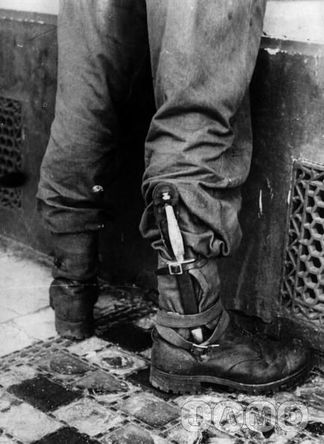
Wilkinson sword commando knife commemorative ltd. edition. Knife was crafted by Wilkinson Sword in a limited edition of 500. This in number 469. Handle is plated with 24 K gold. Presented in a green leather case.
The British Commando knife was first designed in 1940 by close combat legends William Fairbairn and Eric Sykes, who established and taught the combative training methods for wartime special forces such as the independent companies, SOE, Commandos, U.S Rangers and OSS. Though known as the FS Fighting knife, this was not designed to be a knife fighting knife, but primarily designed to be used in silent killing actions such as sentry take-outs. The techniques of effective use were taught to various special forces at Highland training centres such as Lochailort Special Training Centre (STC) and Achnacarry, which was the Commando Basic Training Centre (CBTC) from 1942-1945.
SNIDER MARK lll
Snider MK III long rifle has the Lock date 1872 and built by BSA. The rifle was pure military use and one of thousands supplied to the Canadian Government by the British Government. Obviously not Civil War issue but certainly a distinctly Canadian antique weapon and worth researching. The lockplate is marked by the "crown VR"/BSA Co/1872. Complete with a chain and lead snap cap, The barrel has a 25 code marked barrel. Barrel Length: 36.5" Overall Length: 54.25" Bore: .577 Rifling: 3 groove
The Snider system was adopted due to the clear need for the Board of Ordnance to adopt a rifle for a new era. Muzzle loading is a relatively slow process compared to using a cartridge so a new system was sought, though there were many doubters within the British Military - making Britain one of the last major powers to adopt a breach loading rifle.
In 1864 the Board of Ordnance appointed a Select Committee and the Snider system was swiftly adopted with the first breech loaders being issued in 1865 to British forces. Much improved in 1867 by the use of Colonel Boxer's center fire brass bodied cartridge, the 'new' rifle system shown to be highly effective in the Abyssinian Campaign of 1868.
The system utilized a hinged breech block with an internal firing pin assembly that permitted the use of a self contained cartridge of lead bullet in cardboard, and after 1867, brass casing. The breach system went through four adaptations (covered below) due to concerns and problems with the breach block opening when firing.
This highly efficient conversion system prolonged the active life of the P-1853 rifles up until 1871 when the Martini Henry system was adopted. Snider rifles saw continued use throughout the Empire but were officially obsolete by the late 1880s, though they were used for some years after in colonial armies and police units.
To give some appreciation of the advantages of a breach loading system, the volume of fire a service muzzle loading Enfield could undertake - It took 7 minutes and 20 seconds to fire twenty rounds....The Snider took 2 minutes and 35 seconds giving the soldier with a breach loading rifle a significant advantage over his muzzle loading enemy.
There were five patterns of Snider produced, the following were standard 3 band Enfield conversions:
MkI Designed for the original Pottet cased round - The breech has a rounded rebate for case rim.
MkI* The MkI's were altered to use Boxer case ie the breech rebate altered to square.
MkII* As per MkI* but newly built that way rather than altered from MkI.
MkII** Purpose built, the breech block design was changed to strengthen the system.
MkIII Purpose built, with steel barrel and locking lug mechanism for securing breech which replaced the latching pin of earlier models
(Reference: ".577 Snider-Enfield Rifles & Carbines" by Ian Skennerton, pages 98-105, 123, 127-137; The British Soldiers Firearm 1850-1864 by C.H. Roads; Firearms Past and Present, Volumes 1 & 2 by Jaroslav Lugs; Broad Arrow by Ian D. Skennerton; .577 Snider - Enfield Rifles & Carbines by Ian D. Skennerton).
The Snider system was adopted due to the clear need for the Board of Ordnance to adopt a rifle for a new era. Muzzle loading is a relatively slow process compared to using a cartridge so a new system was sought, though there were many doubters within the British Military - making Britain one of the last major powers to adopt a breach loading rifle.
In 1864 the Board of Ordnance appointed a Select Committee and the Snider system was swiftly adopted with the first breech loaders being issued in 1865 to British forces. Much improved in 1867 by the use of Colonel Boxer's center fire brass bodied cartridge, the 'new' rifle system shown to be highly effective in the Abyssinian Campaign of 1868.
The system utilized a hinged breech block with an internal firing pin assembly that permitted the use of a self contained cartridge of lead bullet in cardboard, and after 1867, brass casing. The breach system went through four adaptations (covered below) due to concerns and problems with the breach block opening when firing.
This highly efficient conversion system prolonged the active life of the P-1853 rifles up until 1871 when the Martini Henry system was adopted. Snider rifles saw continued use throughout the Empire but were officially obsolete by the late 1880s, though they were used for some years after in colonial armies and police units.
To give some appreciation of the advantages of a breach loading system, the volume of fire a service muzzle loading Enfield could undertake - It took 7 minutes and 20 seconds to fire twenty rounds....The Snider took 2 minutes and 35 seconds giving the soldier with a breach loading rifle a significant advantage over his muzzle loading enemy.
There were five patterns of Snider produced, the following were standard 3 band Enfield conversions:
MkI Designed for the original Pottet cased round - The breech has a rounded rebate for case rim.
MkI* The MkI's were altered to use Boxer case ie the breech rebate altered to square.
MkII* As per MkI* but newly built that way rather than altered from MkI.
MkII** Purpose built, the breech block design was changed to strengthen the system.
MkIII Purpose built, with steel barrel and locking lug mechanism for securing breech which replaced the latching pin of earlier models
(Reference: ".577 Snider-Enfield Rifles & Carbines" by Ian Skennerton, pages 98-105, 123, 127-137; The British Soldiers Firearm 1850-1864 by C.H. Roads; Firearms Past and Present, Volumes 1 & 2 by Jaroslav Lugs; Broad Arrow by Ian D. Skennerton; .577 Snider - Enfield Rifles & Carbines by Ian D. Skennerton).
CANADIAN 1937 $1.00 & $2.00 NOTES
Paper money was used in Canada as early as the 1790s. Printing technology advanced and the demand for currency in Canada increased significantly in the 1860s.
The Bank of Canada was created in 1934 and given responsibility, through an Act of Parliament, to regulate the country's money supply and to "promote the economic and financial welfare of Canada." Accordingly, it was given the exclusive right to issue bank notes in Canada. On 11 March 1935, the Bank of Canada issued its first series of bank notes.
The creation of a second series of bank notes, only two years after the first issue, was prompted by changes in Canadian government legislation requiring the Bank of Canada to produce bilingual bank notes. Another contributing factor was the death of King George V on 20 January 1936 and the subsequent abdication of Edward VIII.
The 1937 series of bank notes saw the portrait of King George VI replace those of other members of the royal family on all denominations except the $100 and $1,000 bank notes, which pictured former Canadian prime ministers. Other departures from the 1935 series included colour variations and the location of the portrait in the centre of the bank note bordered by English and French text.
The Bank of Canada was created in 1934 and given responsibility, through an Act of Parliament, to regulate the country's money supply and to "promote the economic and financial welfare of Canada." Accordingly, it was given the exclusive right to issue bank notes in Canada. On 11 March 1935, the Bank of Canada issued its first series of bank notes.
The creation of a second series of bank notes, only two years after the first issue, was prompted by changes in Canadian government legislation requiring the Bank of Canada to produce bilingual bank notes. Another contributing factor was the death of King George V on 20 January 1936 and the subsequent abdication of Edward VIII.
The 1937 series of bank notes saw the portrait of King George VI replace those of other members of the royal family on all denominations except the $100 and $1,000 bank notes, which pictured former Canadian prime ministers. Other departures from the 1935 series included colour variations and the location of the portrait in the centre of the bank note bordered by English and French text.
CANADIAN 1937 NOTES
1859 CANADIAN LARGE CENT
The young head Victorian coins struck in 1858 and 1859 are prior to Confederation so are actually British colonial coins issued under the Province of Canada. While nearly everyone commonly refers to them as pennies, the proper denomination is a "cent" equal to the American cent and which is equal to the British 1/2 penny. When first introduced they were struck to a standard of 100 coins per pound of bronze rather than the British standard of 80 coins to the pound of bronze. This made the coins unpopular and at first poorly accepted by the public who were used to the British Standards.
1859 cents have many small varieties in the 9. The most common are the narrow 9 with a sub variety where the 9 is slightly lower than normal. Several left-over 1858 dies were re-punched to change the final 8 to a 9 with part of the 8 still visible resulting in the 9/8 variety. A number of varieties are known as "double punch" varieties have odd bits of extra metal around parts of the final 9. To understand these 1859 varieties, it is best to consult the Charlton standard catalogue of Canadian Coins where they are illustrated.
Canada became a country in 1867 but to large stocks of unissued 1858 and 1859 cents still on hand, no new coins were needed during the early years. The first one cent coins issued by the new Dominion of Canada were in 1876, at which time the weight was raised to 80 coins to the pound of bronze, in line with the British 1/2 penny, which made them more acceptable to the public.
1825 CANADIAN TOKEN
1939 CANADIAN DOLLAR
This coin, the second commemorative silver dollar struck in Canada, was minted to celebrate the visit of King George VI and Queen Elizabeth in 1939. The reverse of the coin depicts the Parliament buildings in Ottawa. The Latin legend FIDE SUORUM REGNAT (He reigns by the faith of his people) appears above. The design was created by sculptor Emmanuel Hahn, whose initials, EH, appeared on the original model. This was not an unusual feature since Hahn's initials appear on silver dollars minted prior to 1939. His initial H, can also be seen on his well-known designs for Canada's ten-cent and twenty-five cent pieces - the Bluenose and the caribou head - for the series minted since 1937.
The Government of the day, however, seemed to disapprove of the personal touch on this coin and the initials were removed from the final version without consultation. Hahn made strong representations to the Mint, the Minister of Finance and the Prime Minister. The only explanation that he received came from W. C. Clark, Deputy Minister of Finance, who informed Hahn that the decision to omit his initials had been made by the Governor in Council. The obverse of the coin bears the portrait of George VI facing left, surrounded by his Latin titles. The coin shown contains 80% silver and is part of the National Currency Collection, Bank of Canada.39 Canadian Dollar
The Government of the day, however, seemed to disapprove of the personal touch on this coin and the initials were removed from the final version without consultation. Hahn made strong representations to the Mint, the Minister of Finance and the Prime Minister. The only explanation that he received came from W. C. Clark, Deputy Minister of Finance, who informed Hahn that the decision to omit his initials had been made by the Governor in Council. The obverse of the coin bears the portrait of George VI facing left, surrounded by his Latin titles. The coin shown contains 80% silver and is part of the National Currency Collection, Bank of Canada.39 Canadian Dollar
1949 CANADIAN DOLLAR
1949 Canadian George VI Dollar, KM47, AU58 Details ANACS, cleaned.
Although it is now a fairly common practice, the use of our coinage to commemorate a special event was relatively rare prior to the 1960s. The principal coin used for commemorative purposes has been the dollar. One of the most attractive of these coins is the one issued to mark the entry of Newfoundland into Confederation. The design of the coin features a view of "The Matthew," the ship on which John Cabot sailed on his voyage to Newfoundland in 1497.
Below the waves is inscribed the Latin phrase FLOREAT TERRA NOVA (May the new found land flourish). This piece was designed and engraved by Thomas Shingles, Chief Engraver of the Royal Canadian Mint. The creation by Shingles of this beautiful design becomes even more remarkable when it is realized that it was engraved directly in steel entirely by hand. The more usual method is to make a large model which is then reduced to coin size by the use of a pantograph-like engraving machine. The piece illustrated is part of the National Currency Collection Bank of Canada.
Although it is now a fairly common practice, the use of our coinage to commemorate a special event was relatively rare prior to the 1960s. The principal coin used for commemorative purposes has been the dollar. One of the most attractive of these coins is the one issued to mark the entry of Newfoundland into Confederation. The design of the coin features a view of "The Matthew," the ship on which John Cabot sailed on his voyage to Newfoundland in 1497.
Below the waves is inscribed the Latin phrase FLOREAT TERRA NOVA (May the new found land flourish). This piece was designed and engraved by Thomas Shingles, Chief Engraver of the Royal Canadian Mint. The creation by Shingles of this beautiful design becomes even more remarkable when it is realized that it was engraved directly in steel entirely by hand. The more usual method is to make a large model which is then reduced to coin size by the use of a pantograph-like engraving machine. The piece illustrated is part of the National Currency Collection Bank of Canada.
MISCELANIOUS COLLECTABLES
BLACK SWAMP FIND
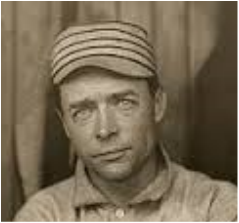
1910 E98 "Set of 30" Harry Davis, Green (Black Swamp Find) PSA NM 7. This card is one of fourteen cards graded NM 7 by PSA, four have graded higher. This was the highest grade available for Davis with a Green background that is not already in a private collection
Harry H. Davis (July 19, 1873 – August 11, 1947) was a Major League Baseball first baseman and right-handed batter who played for the New York Giants (1895–96), Pittsburgh Pirates (1896–98), Louisville Colonels (1898), Washington Senators (1898–99), Philadelphia Athletics (1901–11, 1913–17), and Cleveland Naps (1912).
It's stories like these that make baseball card collecting the incredible obsession that it is. The Black Swamp Find, a collection of previously unknown mint condition E98 series baseball cards from 1910, was unearthed in an Ohio attic. Named after the damp area in Defiance, Ohio where they were found, the 700 cards, valued at $3m, feature 30 greats of the game, including Connie Mack, Christy Mathewson and Ty Cobb.The find has shaken the baseball card market. Experts Professional Sports Authenticator (PSA) had authenticated fewer than 700 E98s prior to the find.
Of those, a grade 7 was the highest ranking Ty Cobb specimen. Following the haul, there are now 16 Ty Cobbs with a 9 grading.The most valuable baseball card ever auctioned remains a 1909-1911 T206 series Honus Wagner, which sold for $2.8m in 2009. And yet again Honus (or Hans as he's known in the E98s) lead the way, with a 10 graded card the highest of the new discoveries. "We believe this is the most significant find in the history of the hobby," Chris Ivy of Heritage Auctions told CBS. "When they sent in the package, and we initially opened it, our reaction was, 'Oh my God! These are the nicest condition examples of this series that we've ever seen.'"
The baseball card market has been strong , although E98 owners will doubtless be concerned that the new discoveries will devalue their now less desirable pieces.
Harry H. Davis (July 19, 1873 – August 11, 1947) was a Major League Baseball first baseman and right-handed batter who played for the New York Giants (1895–96), Pittsburgh Pirates (1896–98), Louisville Colonels (1898), Washington Senators (1898–99), Philadelphia Athletics (1901–11, 1913–17), and Cleveland Naps (1912).
It's stories like these that make baseball card collecting the incredible obsession that it is. The Black Swamp Find, a collection of previously unknown mint condition E98 series baseball cards from 1910, was unearthed in an Ohio attic. Named after the damp area in Defiance, Ohio where they were found, the 700 cards, valued at $3m, feature 30 greats of the game, including Connie Mack, Christy Mathewson and Ty Cobb.The find has shaken the baseball card market. Experts Professional Sports Authenticator (PSA) had authenticated fewer than 700 E98s prior to the find.
Of those, a grade 7 was the highest ranking Ty Cobb specimen. Following the haul, there are now 16 Ty Cobbs with a 9 grading.The most valuable baseball card ever auctioned remains a 1909-1911 T206 series Honus Wagner, which sold for $2.8m in 2009. And yet again Honus (or Hans as he's known in the E98s) lead the way, with a 10 graded card the highest of the new discoveries. "We believe this is the most significant find in the history of the hobby," Chris Ivy of Heritage Auctions told CBS. "When they sent in the package, and we initially opened it, our reaction was, 'Oh my God! These are the nicest condition examples of this series that we've ever seen.'"
The baseball card market has been strong , although E98 owners will doubtless be concerned that the new discoveries will devalue their now less desirable pieces.
ROMAN REPUBLIC COIN OF THE FAMILY CALPURNIA
The earliest Roman coins were rude lumps of bronze. After that they went for big bronze ingots, then oversized cast bronze coins. Eventually, in the late 4th century BC, they got into struck bronze and Greek style silver coins. The standard silver denomination, the denarius, from which we get our "dime," was struck in hundreds of varieties over a couple of centuries and on into the Empire.
This coin is described as L, Capurnius piso Frugi. 90 B.C.AR denarius (19 mm, 3.88 g. sh). Rome. Laureate head of Apollo right; behind, four pellets / horseman galloping right, holding palm; in exergue, numeral. Crawford 340/1; Sydenham 664; Calpurnia 11. Choice AU NGC.
This coin is described as L, Capurnius piso Frugi. 90 B.C.AR denarius (19 mm, 3.88 g. sh). Rome. Laureate head of Apollo right; behind, four pellets / horseman galloping right, holding palm; in exergue, numeral. Crawford 340/1; Sydenham 664; Calpurnia 11. Choice AU NGC.
U.S. 1797 HALF CENT
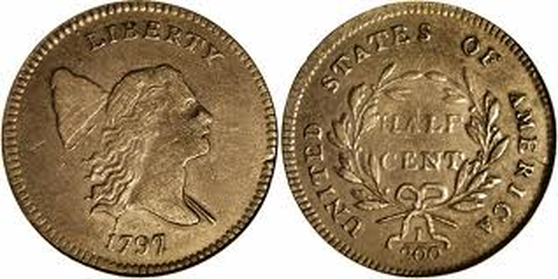
Half cents were authorized by the Coinage Act of April 2, 1792, but their weight and size made them unpopular coins. Although the number of half cents minted was low, five different types were struck in multiple different varieties. In fact, there are more varieties of half cents than any other US coin.
The five types are as follows: Liberty Cap facing left, which was only struck in 1793 and featured the head of Liberty wearing a cap; Liberty Cap facing right, which was struck from 1794 to 1797; Draped Bust, which was struck from 1800 to 1808 and featured the bust of Liberty facing right; Classic Head, which was struck from 1809 to 1835 and featured the head of Liberty facing left; and Braided Hair, which was struck from 1840 to 1857 (although the only known versions from 1840 to 1848 are proofs) and featured the same image of Liberty that was used on large cents in 1839.
Although there were some slight variations, the reverse of each of these coins featured "Half Cent" written in the center of a wreath, surrounded by "United States of America." Half cents were discontinued in 1857 by the Coinage Act of February 21.
The five types are as follows: Liberty Cap facing left, which was only struck in 1793 and featured the head of Liberty wearing a cap; Liberty Cap facing right, which was struck from 1794 to 1797; Draped Bust, which was struck from 1800 to 1808 and featured the bust of Liberty facing right; Classic Head, which was struck from 1809 to 1835 and featured the head of Liberty facing left; and Braided Hair, which was struck from 1840 to 1857 (although the only known versions from 1840 to 1848 are proofs) and featured the same image of Liberty that was used on large cents in 1839.
Although there were some slight variations, the reverse of each of these coins featured "Half Cent" written in the center of a wreath, surrounded by "United States of America." Half cents were discontinued in 1857 by the Coinage Act of February 21.
COLONIAL NOTE
The Colonial economy depended largely on foreign coins, barter, and commodity money. In 1690, the Massachusetts Bay Colony issued the first Colonial currency. Other colonies soon began to issue their own paper currency. Usually denominated in Spanish Milled Dollars, Colonial notes were also denominated in British shillings, pounds, and pence. In 1764, the British declared Colonial currency illegal.
Beginning in 1775, the Continental Congress issued currency to finance the Revolutionary War. These notes, called Continentals, had no backing in gold or silver.
Continentals were backed by the “anticipation” of tax revenues. Easily counterfeited and without solid backing, the notes quickly became devalued, giving rise to the phrase “not worth a Continental.” This brief period marked the first time that U.S. currency’s value was derived solely from its purchasing power, as it is today.
This sample is a Virginia October 20, 1777, $2/3, PMG Very Fine 30. A very nice example of this scarcer issue with handwritten dates. Well margined, printed on bright paper with just a single hard center fold.
Beginning in 1775, the Continental Congress issued currency to finance the Revolutionary War. These notes, called Continentals, had no backing in gold or silver.
Continentals were backed by the “anticipation” of tax revenues. Easily counterfeited and without solid backing, the notes quickly became devalued, giving rise to the phrase “not worth a Continental.” This brief period marked the first time that U.S. currency’s value was derived solely from its purchasing power, as it is today.
This sample is a Virginia October 20, 1777, $2/3, PMG Very Fine 30. A very nice example of this scarcer issue with handwritten dates. Well margined, printed on bright paper with just a single hard center fold.
2 REALE SPANSH COIN FROM SARATOGA, NEW YORK
A nice excavated artifact from the Revolutionary War era. It is accompanied by a letter of provenance from Mr. Bob Lavoy of Northeast Metal Detectors in Altmont, New York. He states that the piece was legally recovered with the land owner's permission near the Revolutionary War battle of Saratoga, New York. He further states that the artifact was recovered in 2002. The coin being a 1738 dated Spanish silver reale coin. The Spanish silver was popular during the Colonial era. This is a fine piece from the collection of historian and relic hunter, Mike Miner and the letter is addressed to him. There is also a xerox map of the area of the battle.
(Reference; Civil War Artifacts, A Guide to The Historian by Howard R. Crouch, page 45)
(Reference; Civil War Artifacts, A Guide to The Historian by Howard R. Crouch, page 45)
WAR OF 1812 BRITISH REGIMENT BUTTON
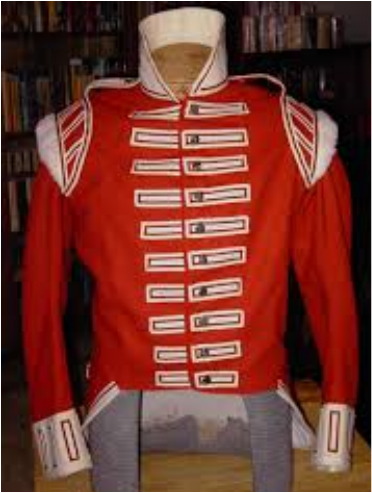
This artifact is a War of 1812 British 41st Foot Regiment Button. Made of pewter. Has the regimental device - number "41" in the center of a starburst. Iron shank is missing, dark patina. Recovered Upstate New York region.
The War of 1812 has been called “The Incredible War,” “The Forgotten War,” “A Truly Pointless War,” “The Second War of American Independence” and “The War That Both Sides Won (or Lost).” Slowly through the 19th century, this war became commonly referred to for its year of commencement, even though it lasted into 1815.
While the war was a matter of pride and ambition for the Americans and just a peripheral event for the British, it was of critical importance to Canadians. It was nothing less than a question of whether or not Canada would remain part of the British Empire or would be annexed to the United States, since the war was destined to be waged on Canadian soil. For the First Nations, the war posed some desperate choices. American expansionism was inexorably stripping them of their land, but they had been let down before by siding with the British. Iroquois leader John Norton expressed it well when he said, “The British neglect us except when they need us.” In Shawnee Chief Tecumseh, the First Nations produced the noblest character in the war, who was, in the end, a tragic figure.
The War of 1812 was fought on a smaller scale than the great Napoleonic battles of the day, but it was, nevertheless, fought in earnest and to the death, when necessary. Its battlefields ranged from northern Michigan to Niagara, York (Toronto), Lake Champlain, Maine, the Canary Islands, New Orleans, Washington, D.C., and even the Indian Ocean. In a military sense, it was inconclusive, but in a political sense, its repercussions last until this day.
The War of 1812 has been called “The Incredible War,” “The Forgotten War,” “A Truly Pointless War,” “The Second War of American Independence” and “The War That Both Sides Won (or Lost).” Slowly through the 19th century, this war became commonly referred to for its year of commencement, even though it lasted into 1815.
While the war was a matter of pride and ambition for the Americans and just a peripheral event for the British, it was of critical importance to Canadians. It was nothing less than a question of whether or not Canada would remain part of the British Empire or would be annexed to the United States, since the war was destined to be waged on Canadian soil. For the First Nations, the war posed some desperate choices. American expansionism was inexorably stripping them of their land, but they had been let down before by siding with the British. Iroquois leader John Norton expressed it well when he said, “The British neglect us except when they need us.” In Shawnee Chief Tecumseh, the First Nations produced the noblest character in the war, who was, in the end, a tragic figure.
The War of 1812 was fought on a smaller scale than the great Napoleonic battles of the day, but it was, nevertheless, fought in earnest and to the death, when necessary. Its battlefields ranged from northern Michigan to Niagara, York (Toronto), Lake Champlain, Maine, the Canary Islands, New Orleans, Washington, D.C., and even the Indian Ocean. In a military sense, it was inconclusive, but in a political sense, its repercussions last until this day.
TITANIC COAL
This tiny piece of coal ( less than 1/2 ") was recovered from the wreck of the Titanic during the 1994 research and recovery expedition. Authenticated by RMS Titanic Inc. This coal, which is a limited piece of history, remains one of the few authentic artifacts recovered from the Titanic's wreck site available for purchase, Object no. 94/0036.
A Message from the (former) Prime Minister

"The War of 1812 was a seminal event in the making of our great country. On the occasion of its 200th anniversary, I invite all Canadians to share in our history and commemorate our proud and brave ancestors who fought and won against enormous odds. As we near our country's 150th anniversary in 2017, Canadians have an opportunity to pay tribute to our founders, defining moments, and heroes who fought for Canada.
June 2012 will mark 200 years since the declaration of the War of 1812-a war that saw Aboriginal peoples, local and volunteer militias, and English and French-speaking regiments fight together to save Canada from American invasion.
The War helped establish our path toward becoming an independent and free country, united under the Crown with a respect for linguistic and ethnic diversity. The heroic efforts of Canadians then helped define who we are today, what side of the border we live on, and which flag we salute.
Beginning in October 2011, Canadians will be able to participate in a series of activities throughout the year leading up to the official commemoration of this decisive event in our country's history. Unmistakably, the War of 1812 was an event that affected the course of our country militarily, politically, and culturally.
The War was instrumental in creating Canada's armed forces. Many of our current reserve regiments in Ontario, Quebec, and Atlantic Canada trace their origins back to this time. It was the beginning of a long and proud military history in Canada.
Events surrounding the 1812-15 armed conflict laid the foundation for Confederation and established the cornerstones of many of our political institutions. In short, the Canada we know today would not exist had the invasions of 1812-15 not been repelled.
The signing of the Treaty of Ghent and other treaties that followed confirmed the border between Canada and the United States-now the world's longest, undefended border and an example of nations coexisting peacefully side by side with mutual respect and friendship.
I invite Canadians across the country to learn more about this key chapter in our history and to take part in many of the activities and events that will pay tribute to our history and heritage."
